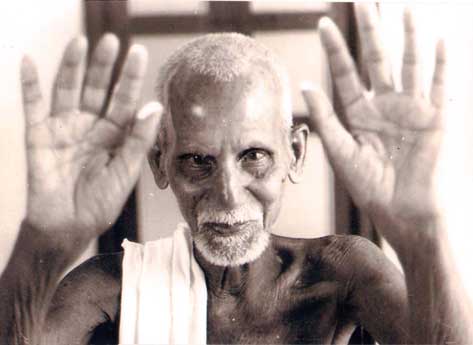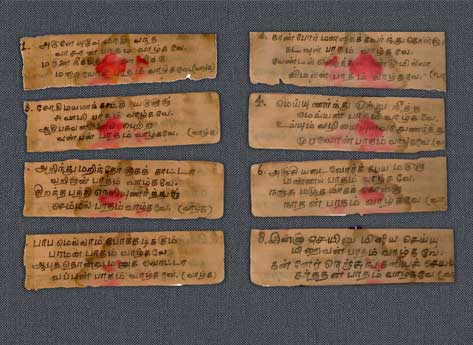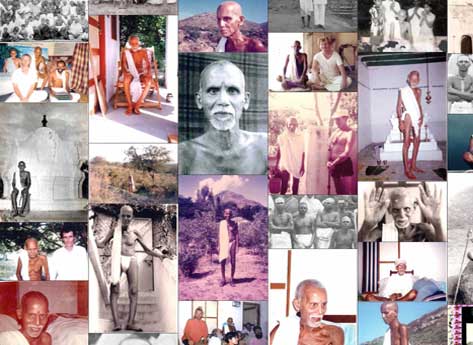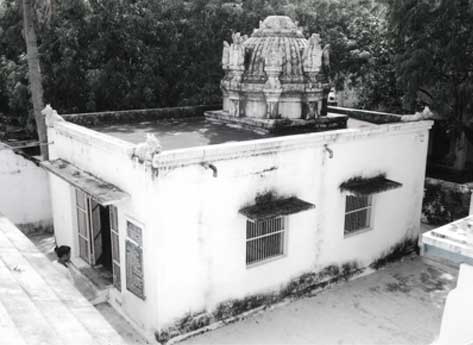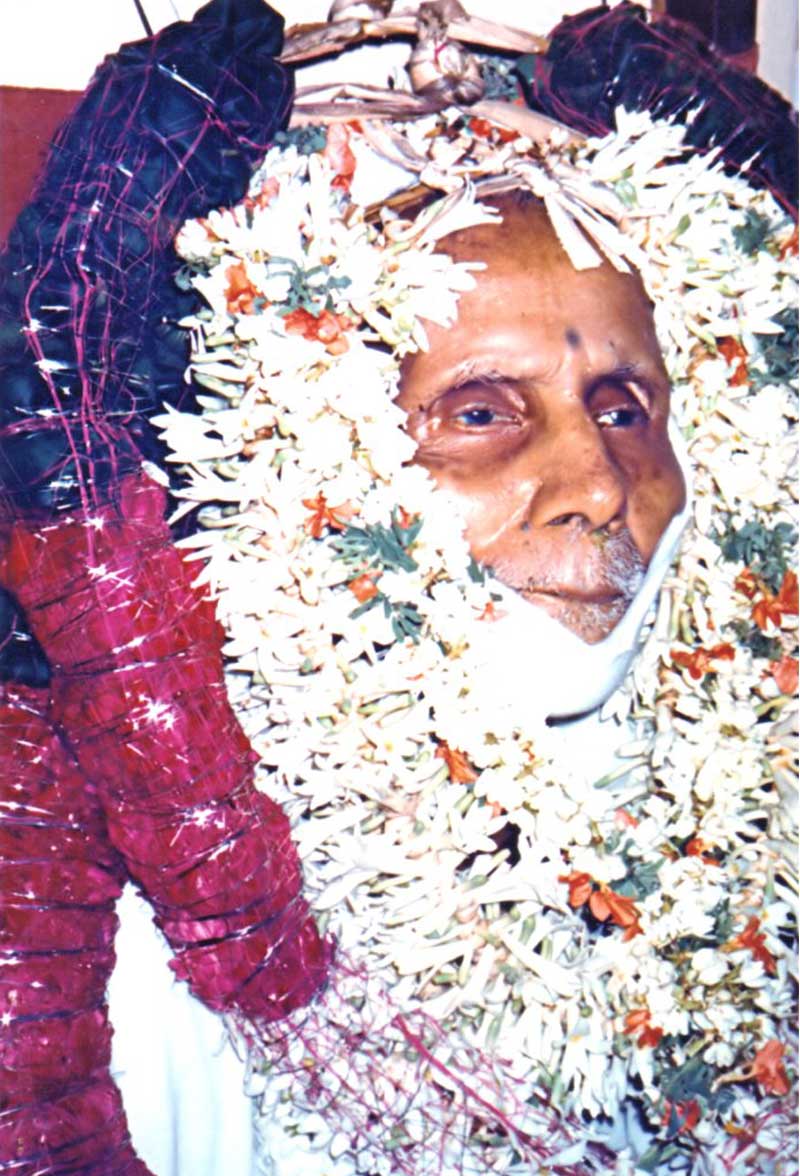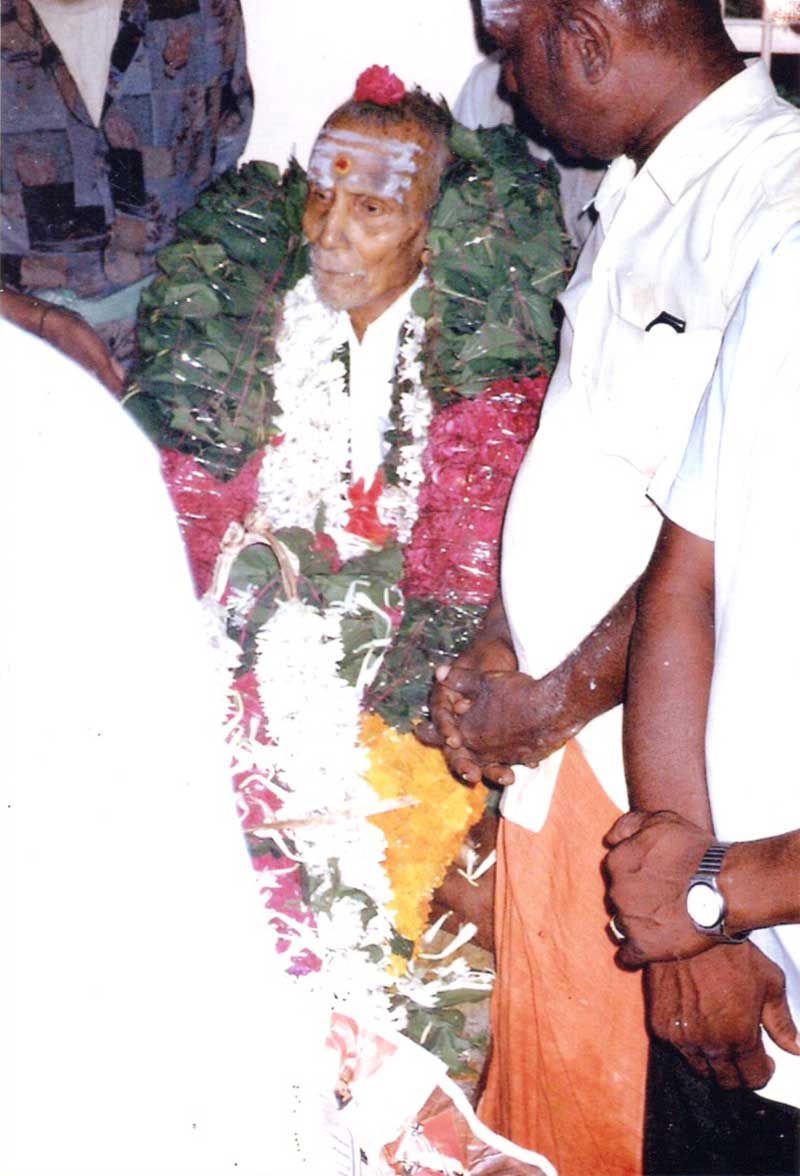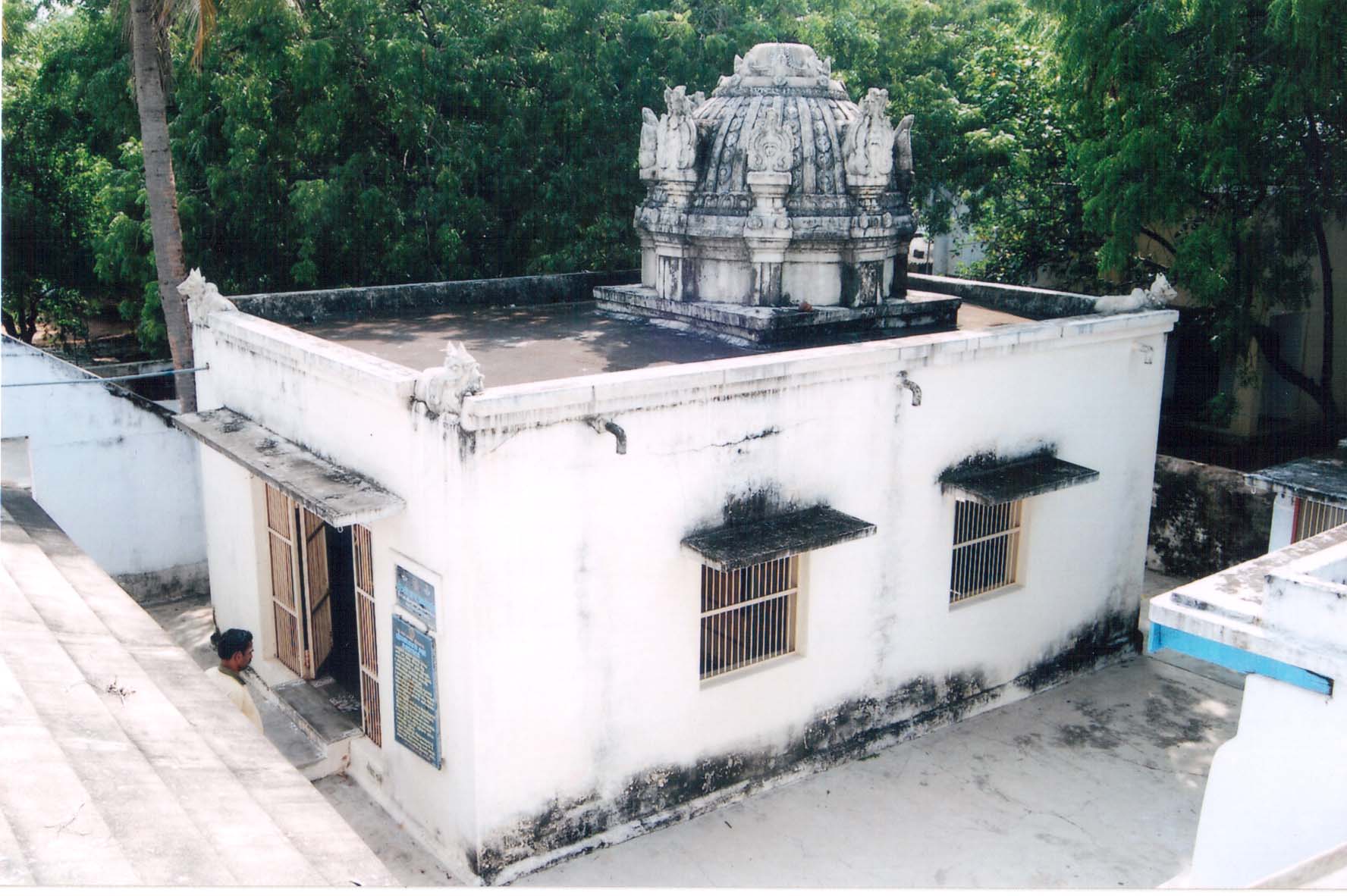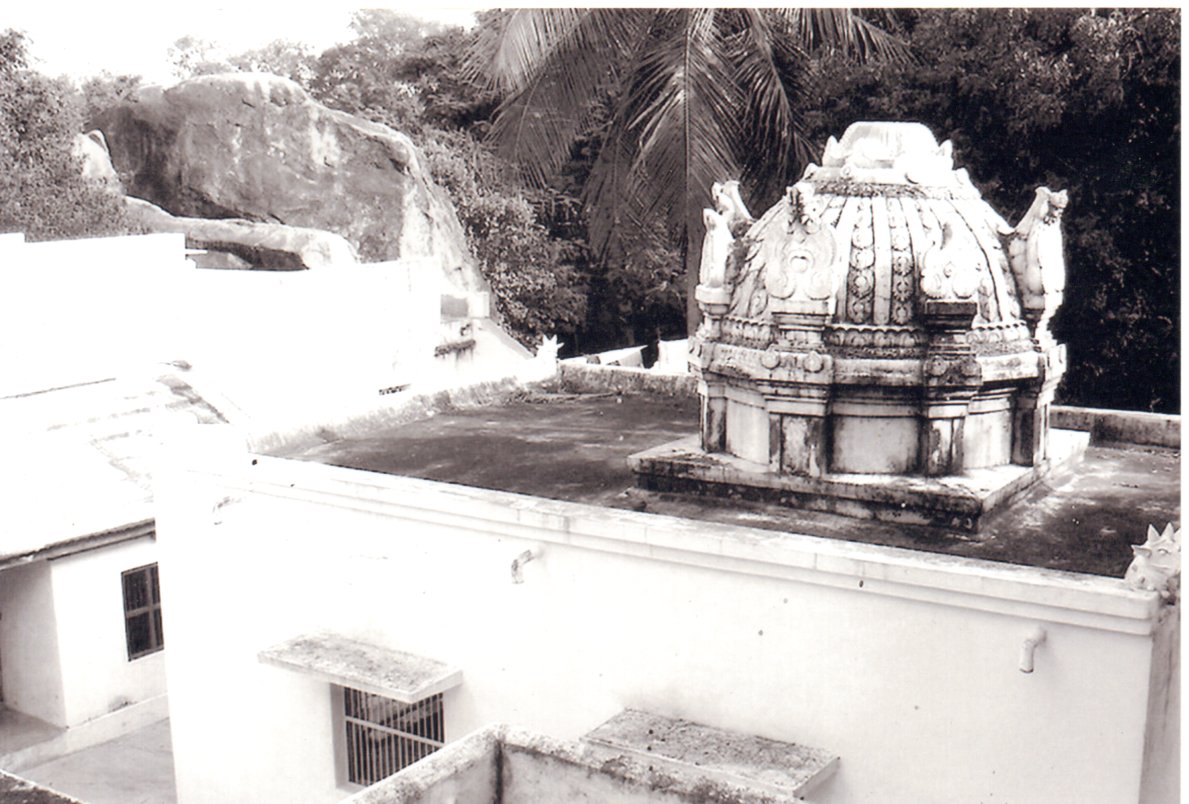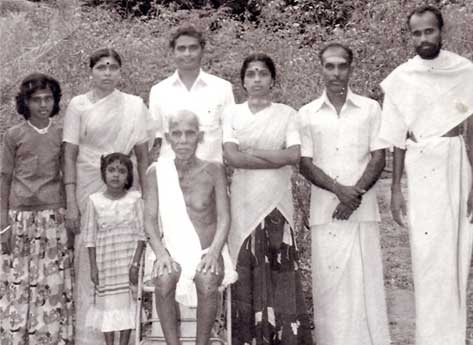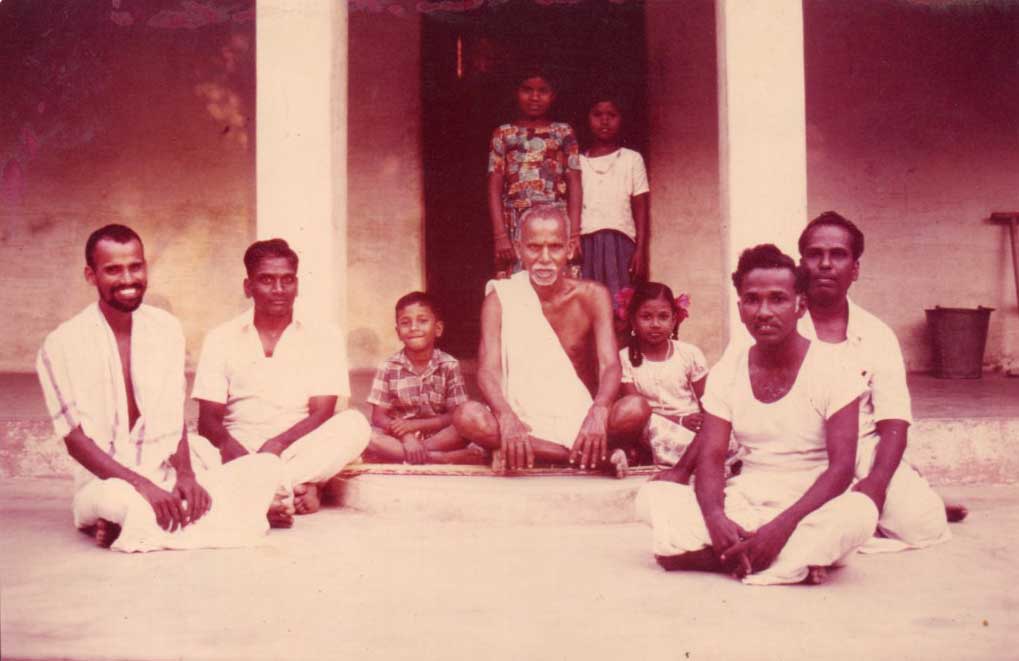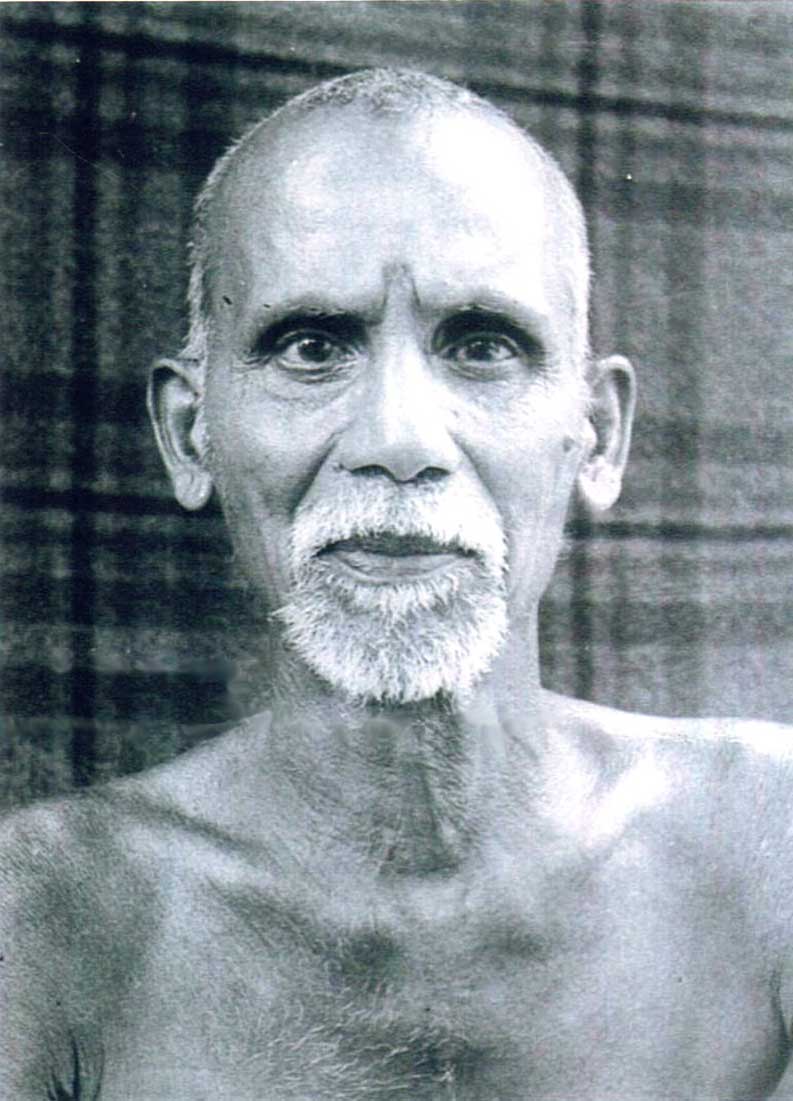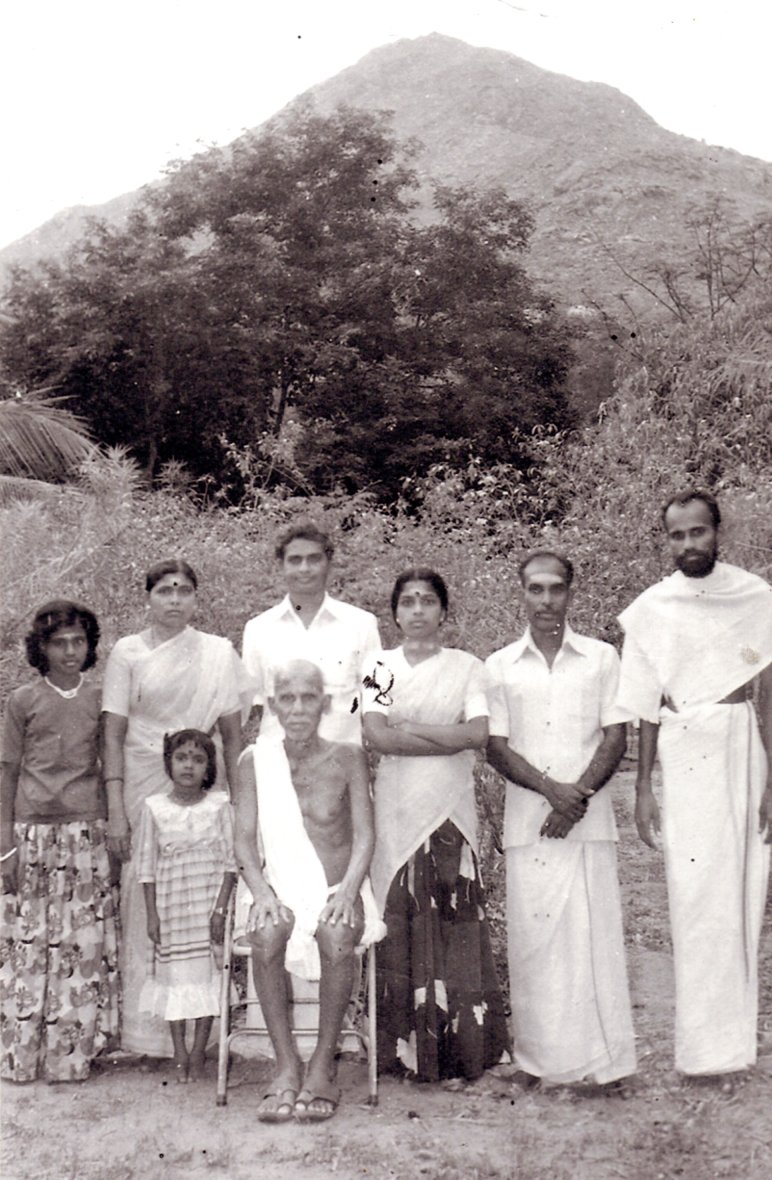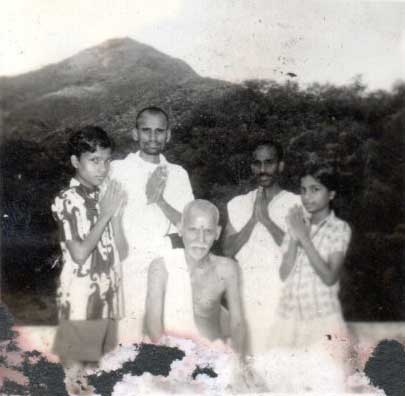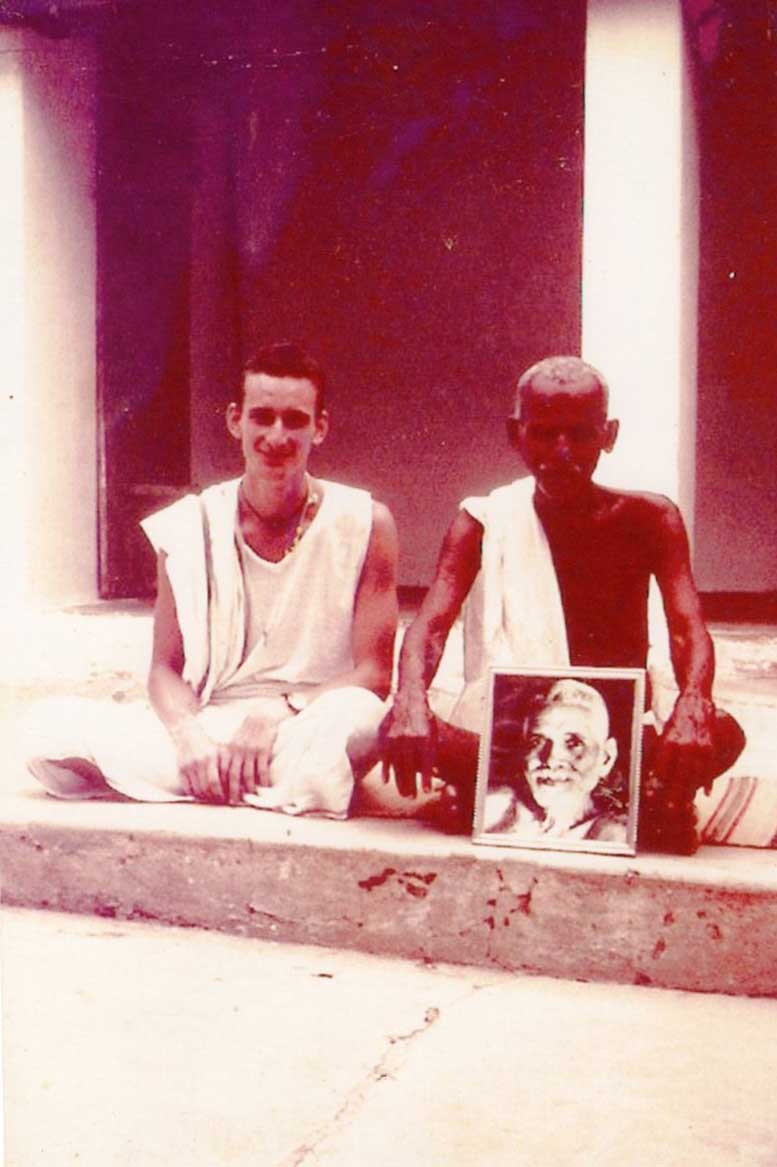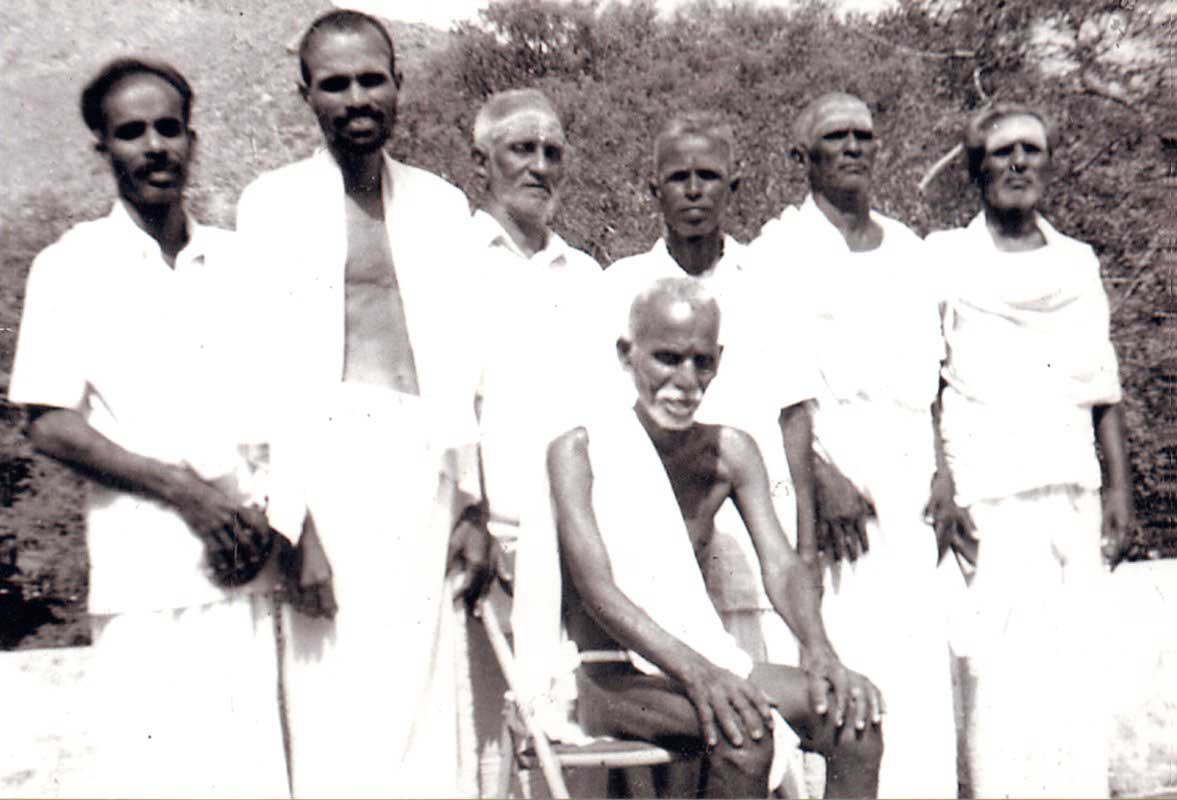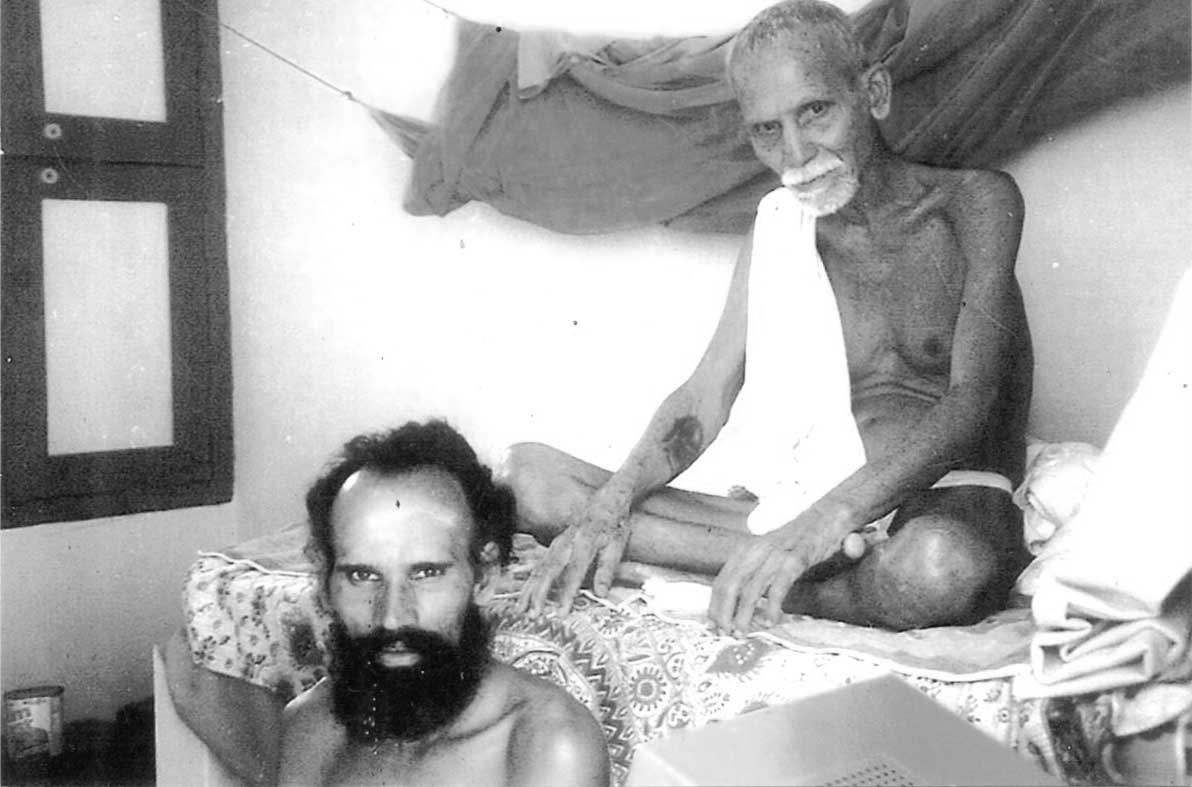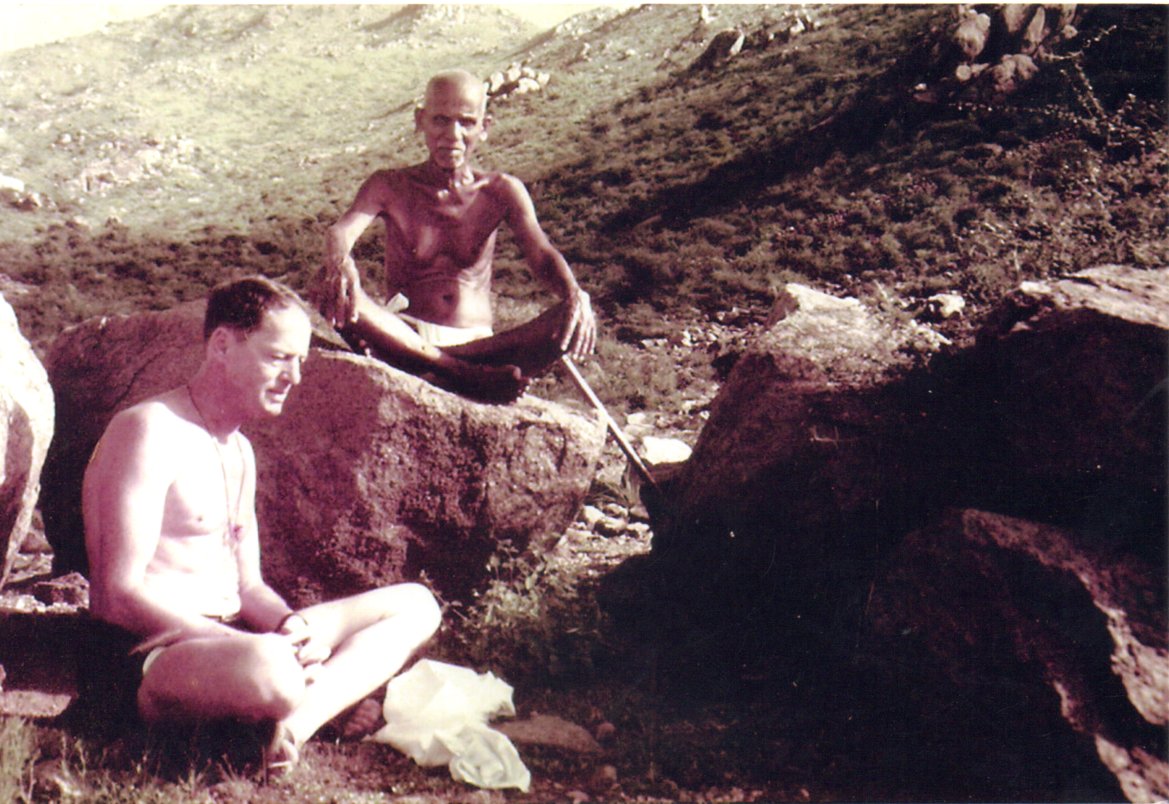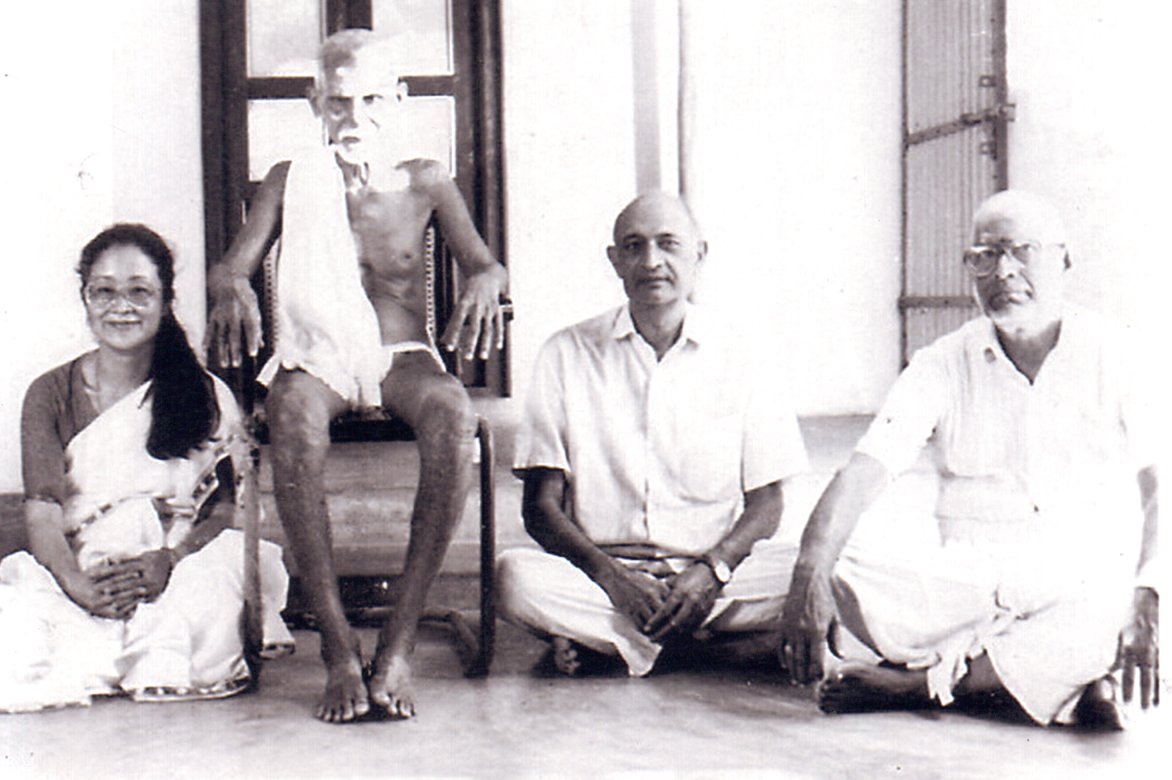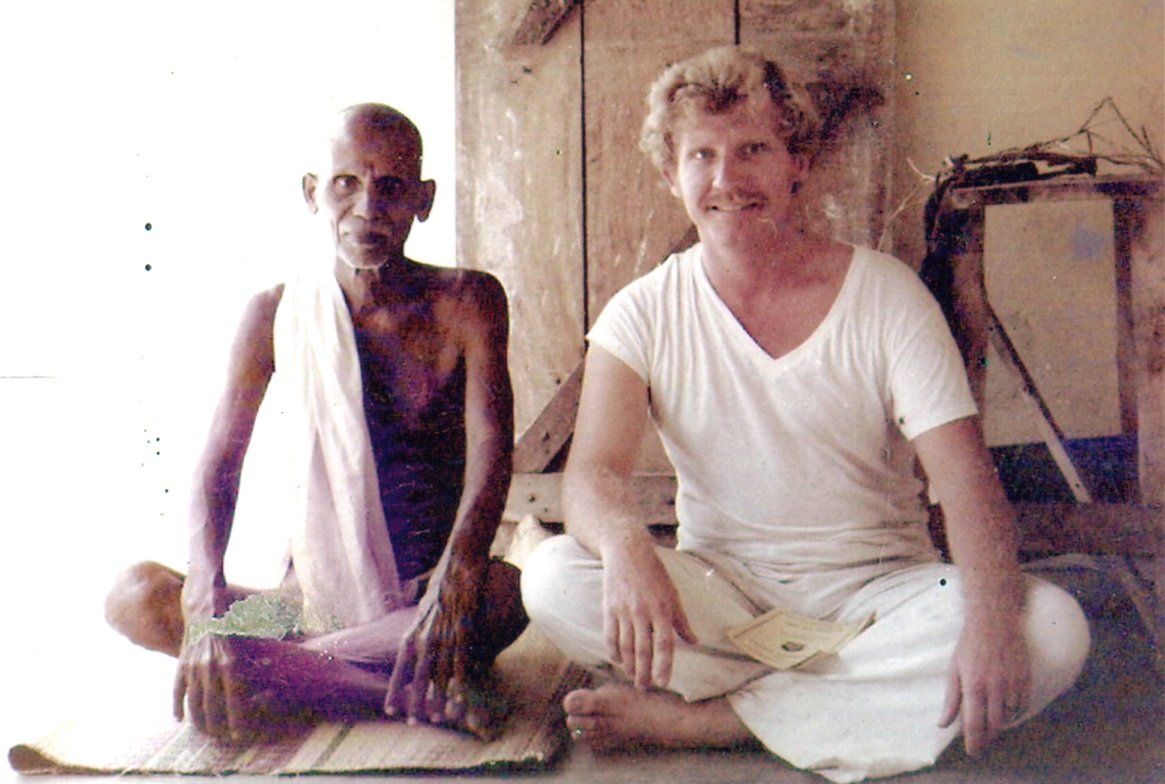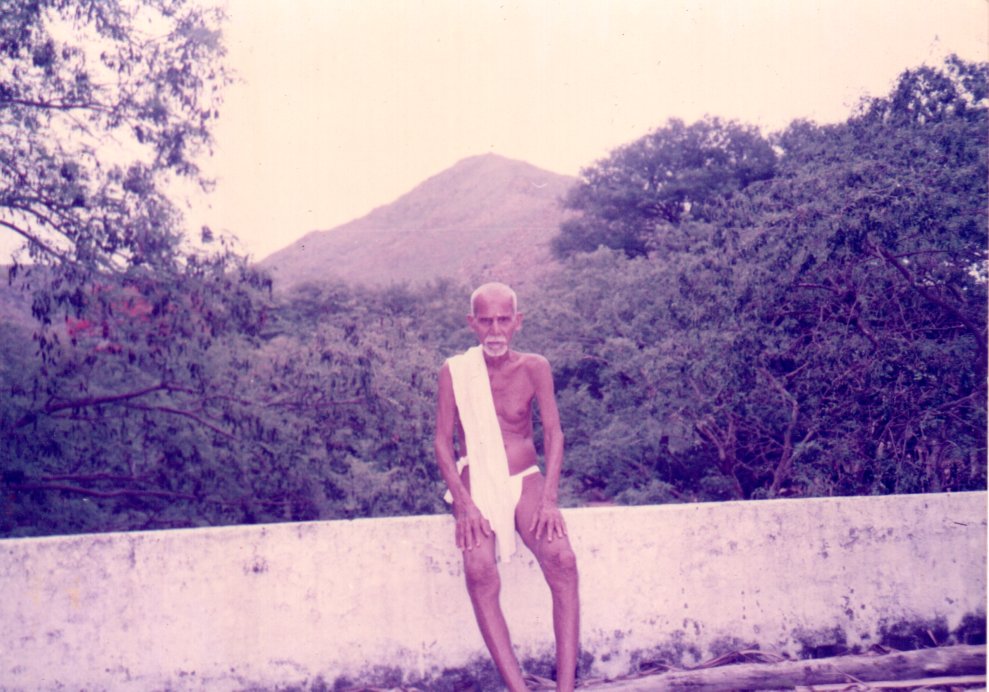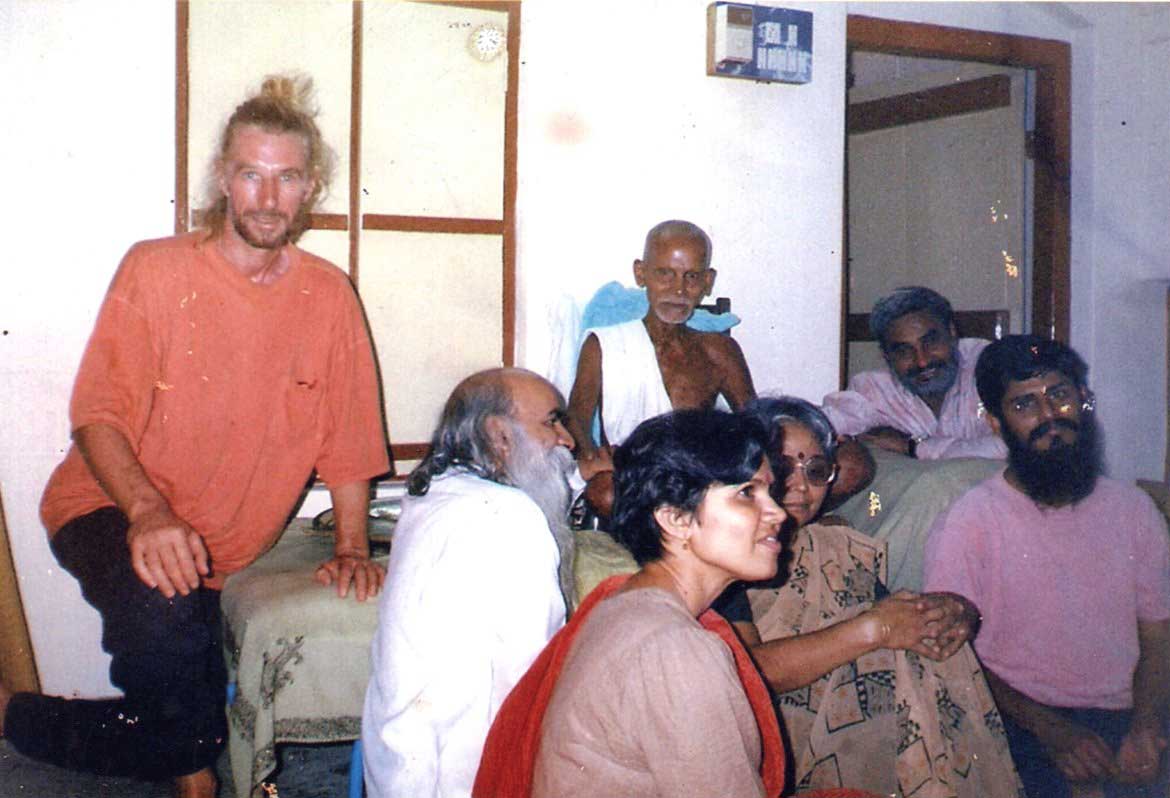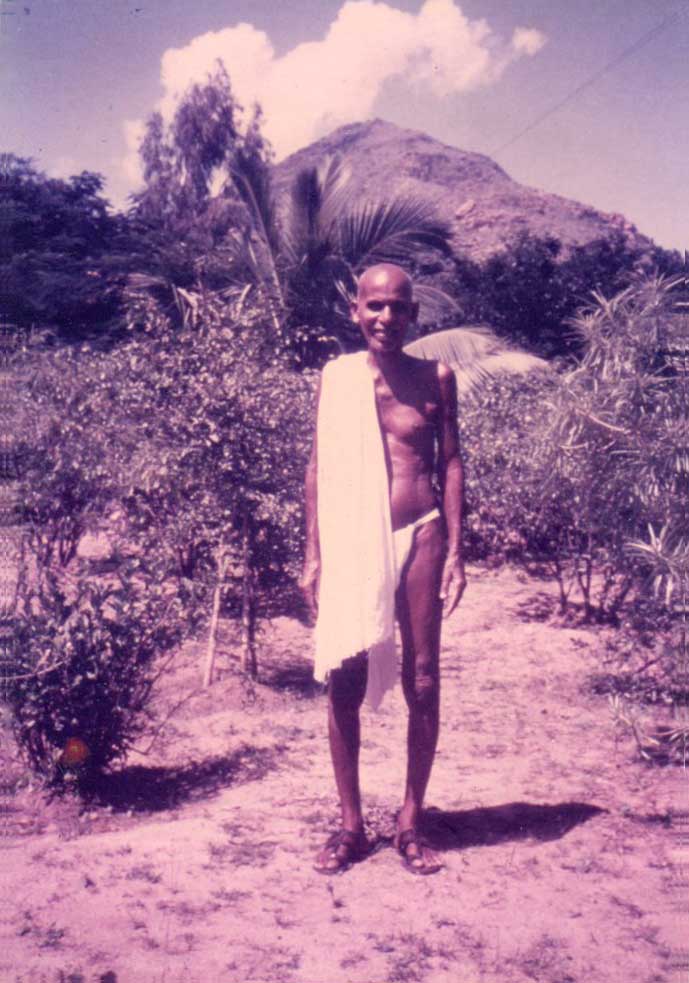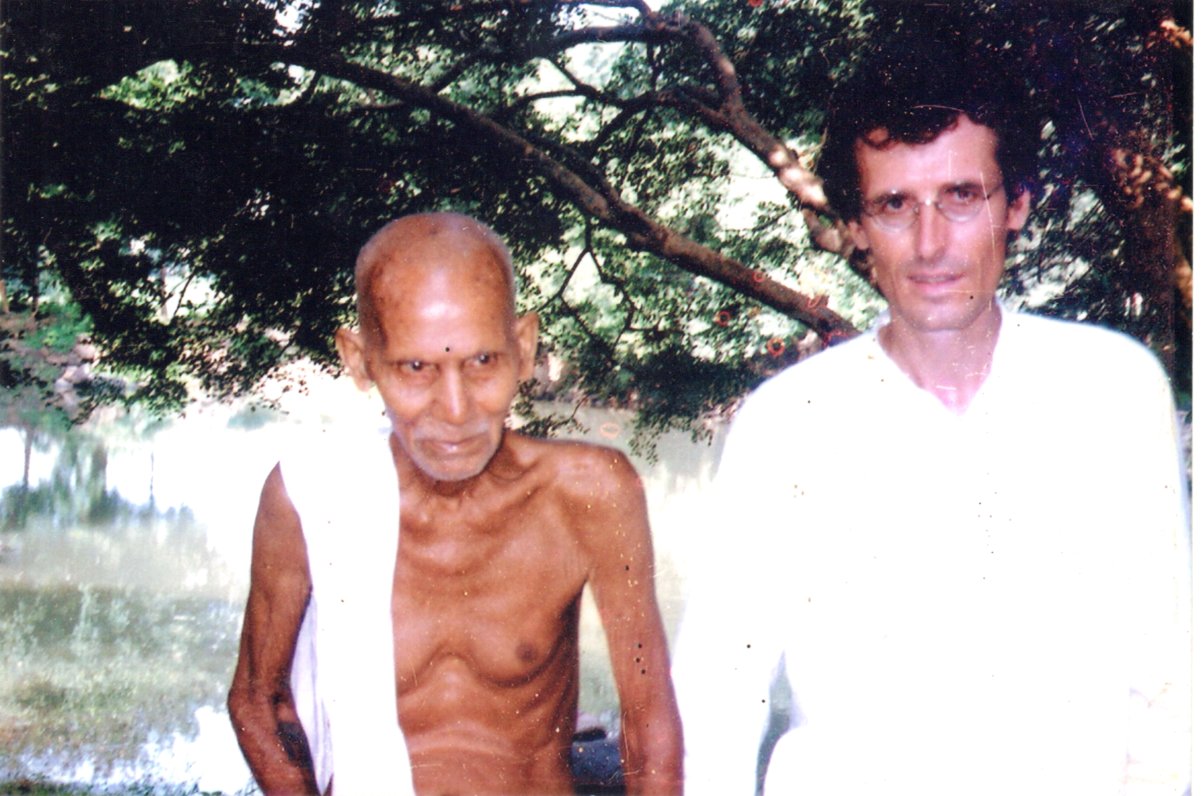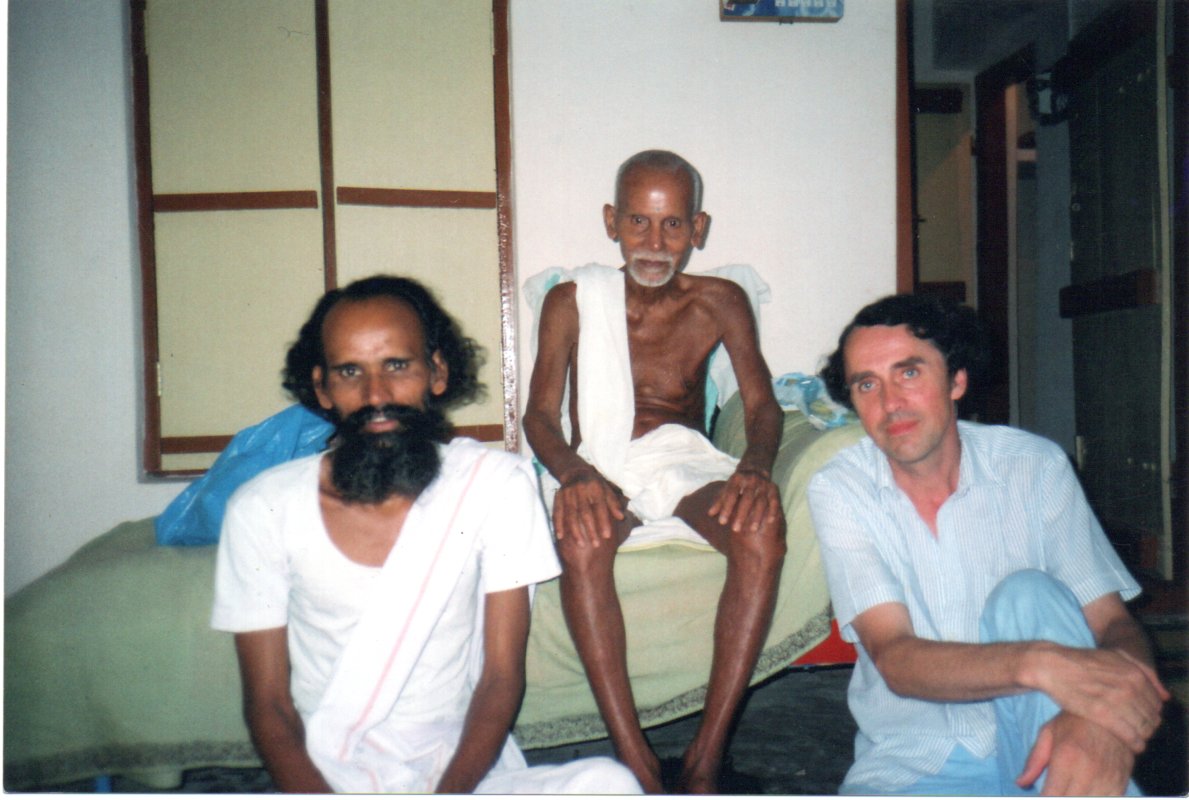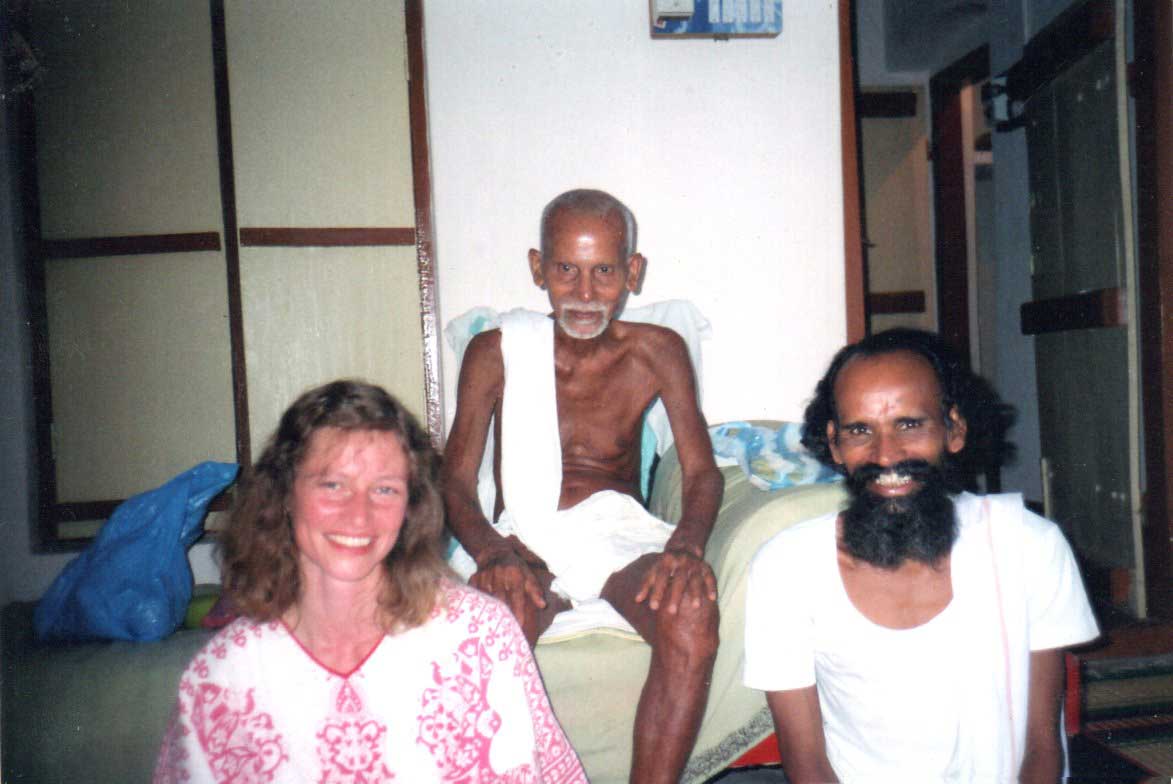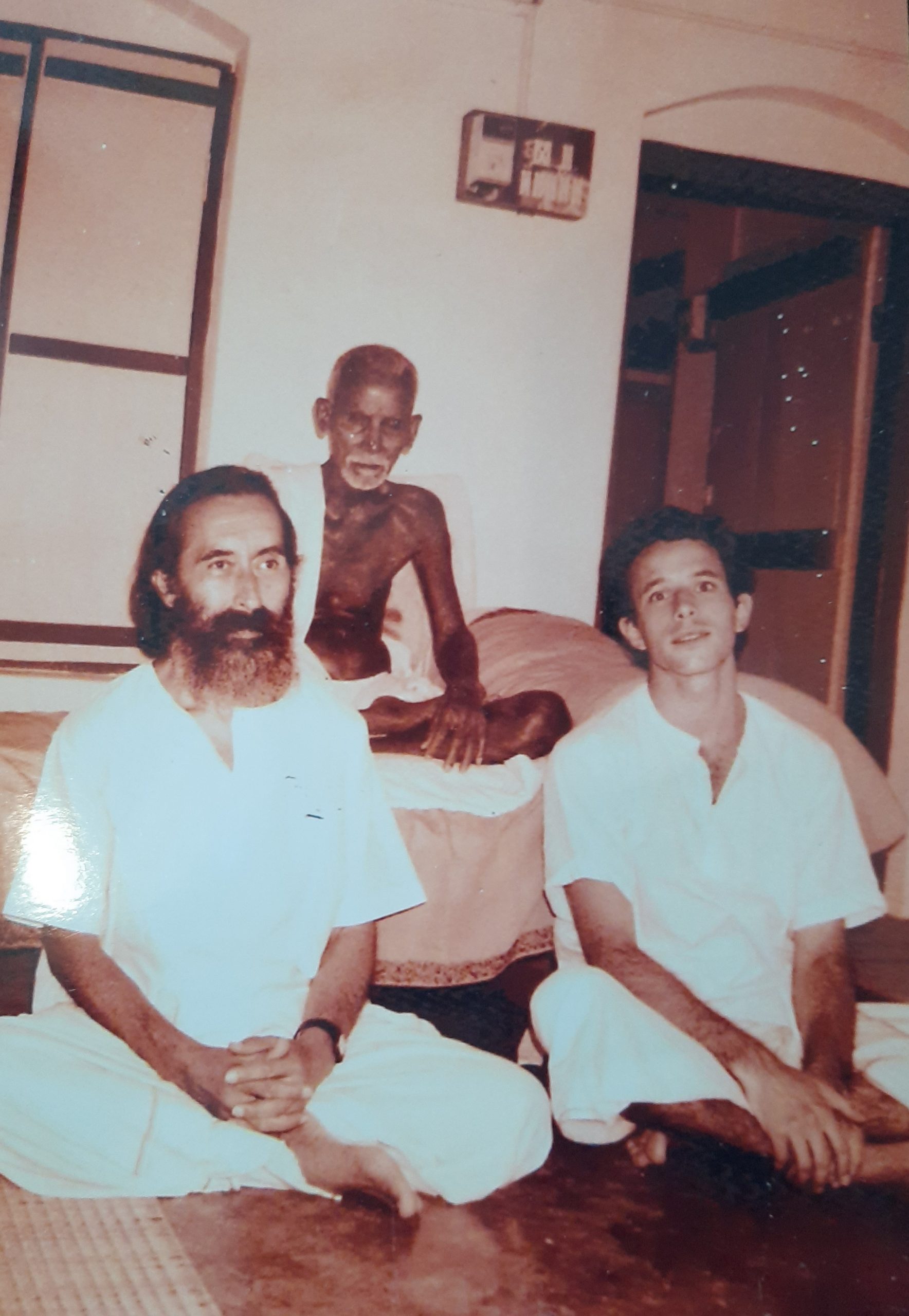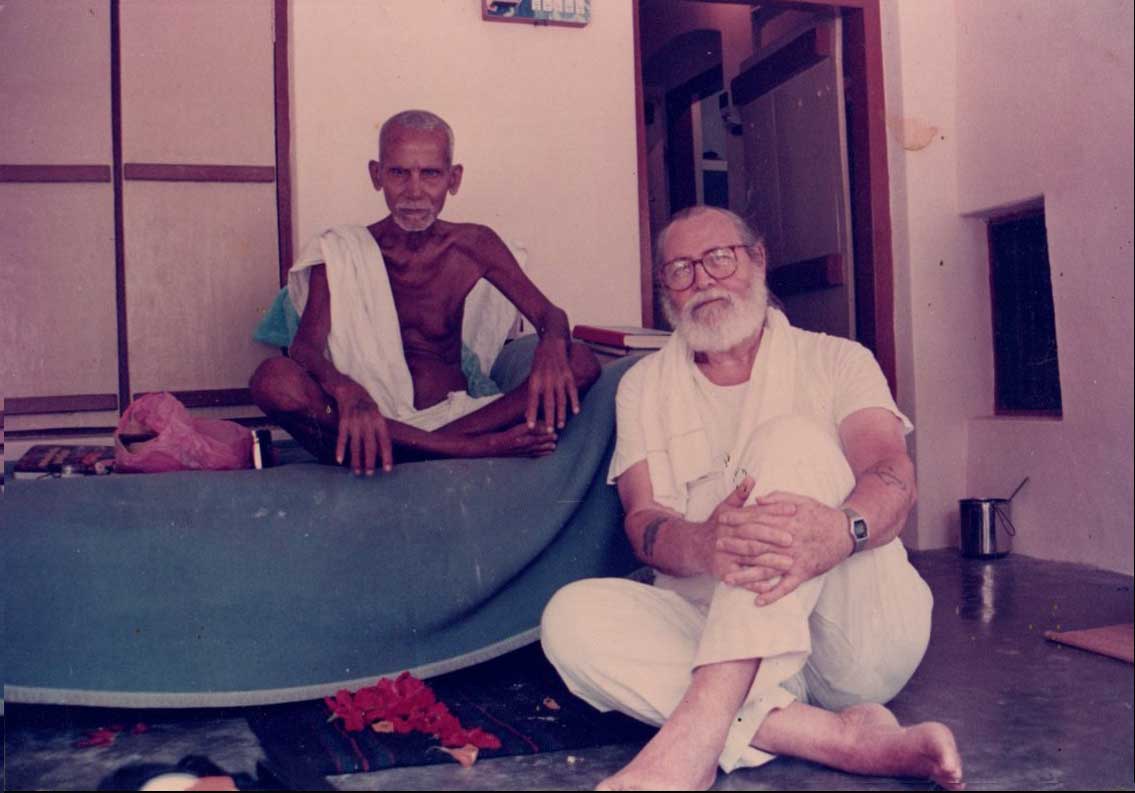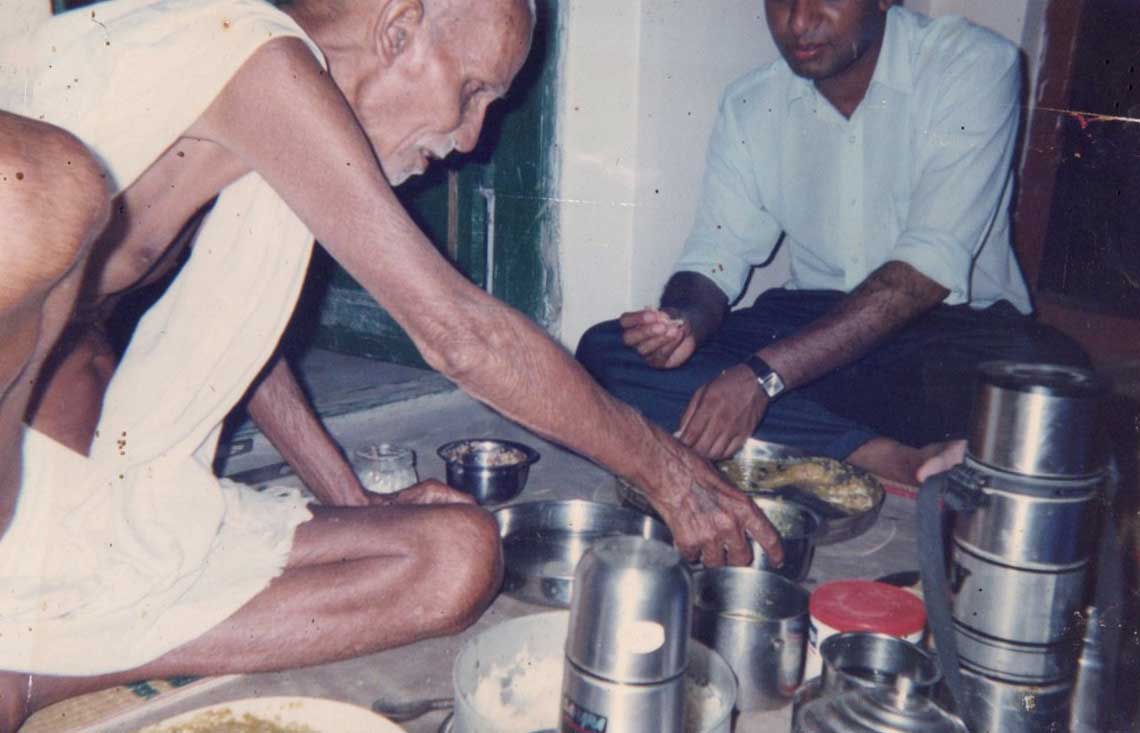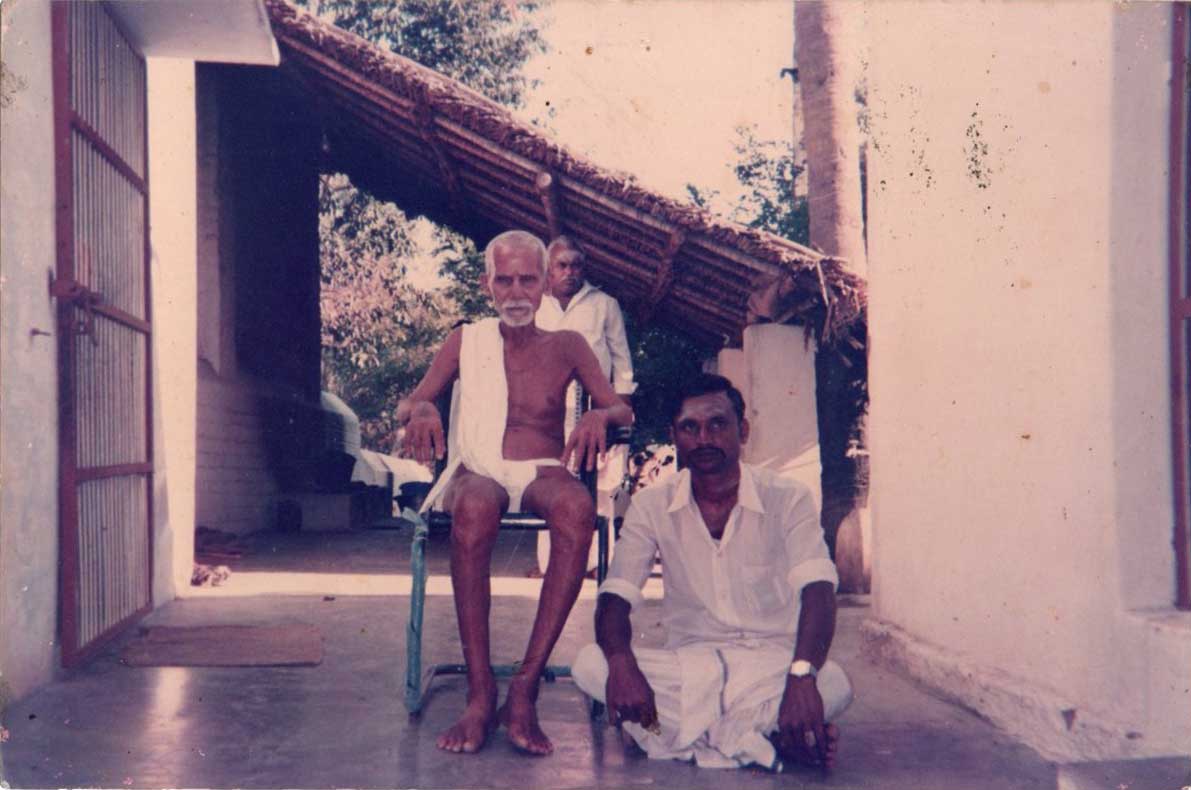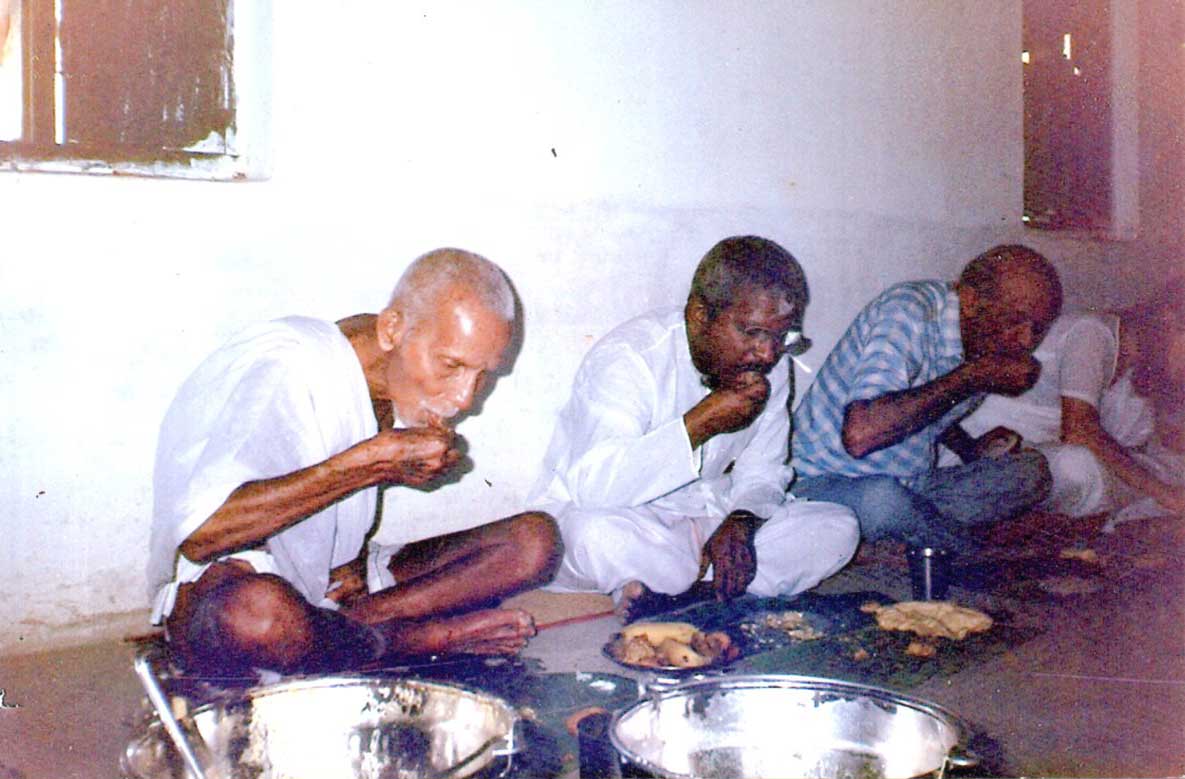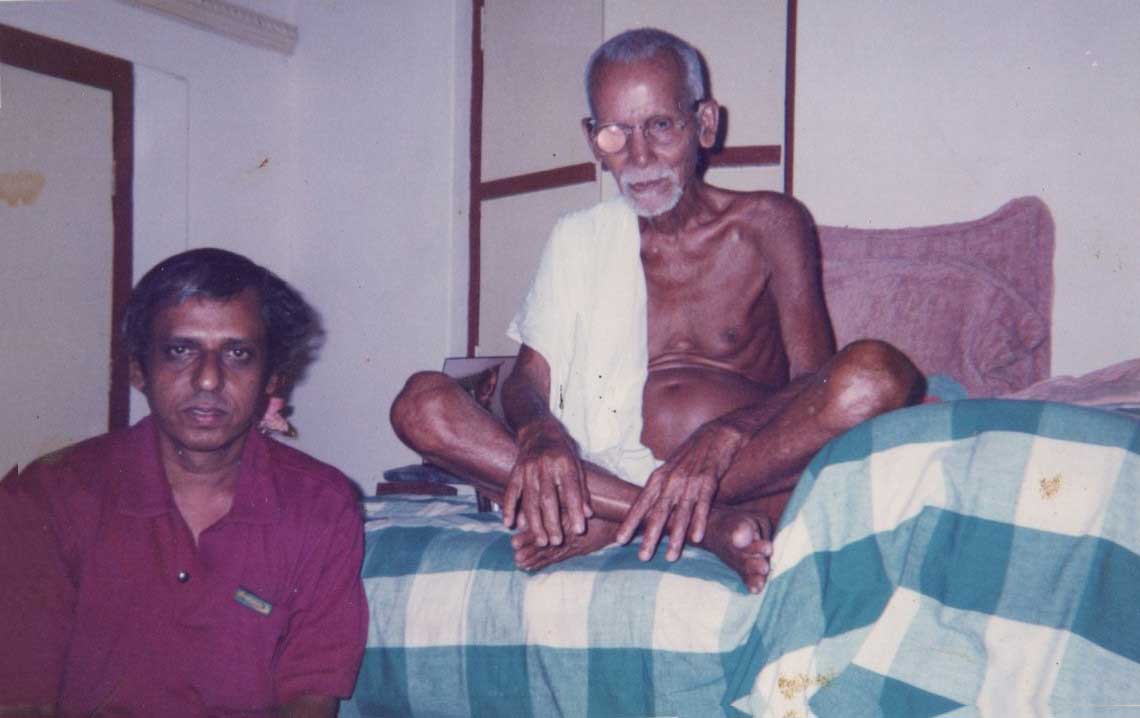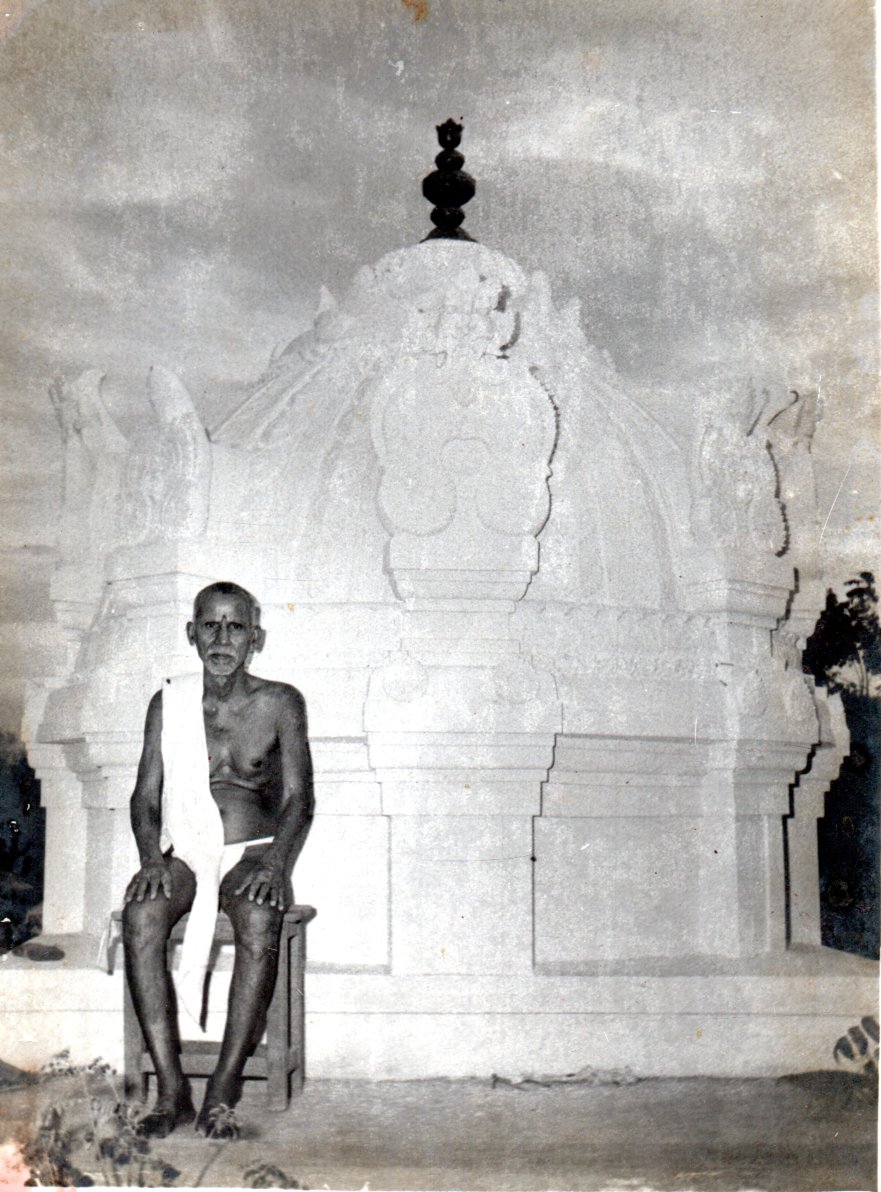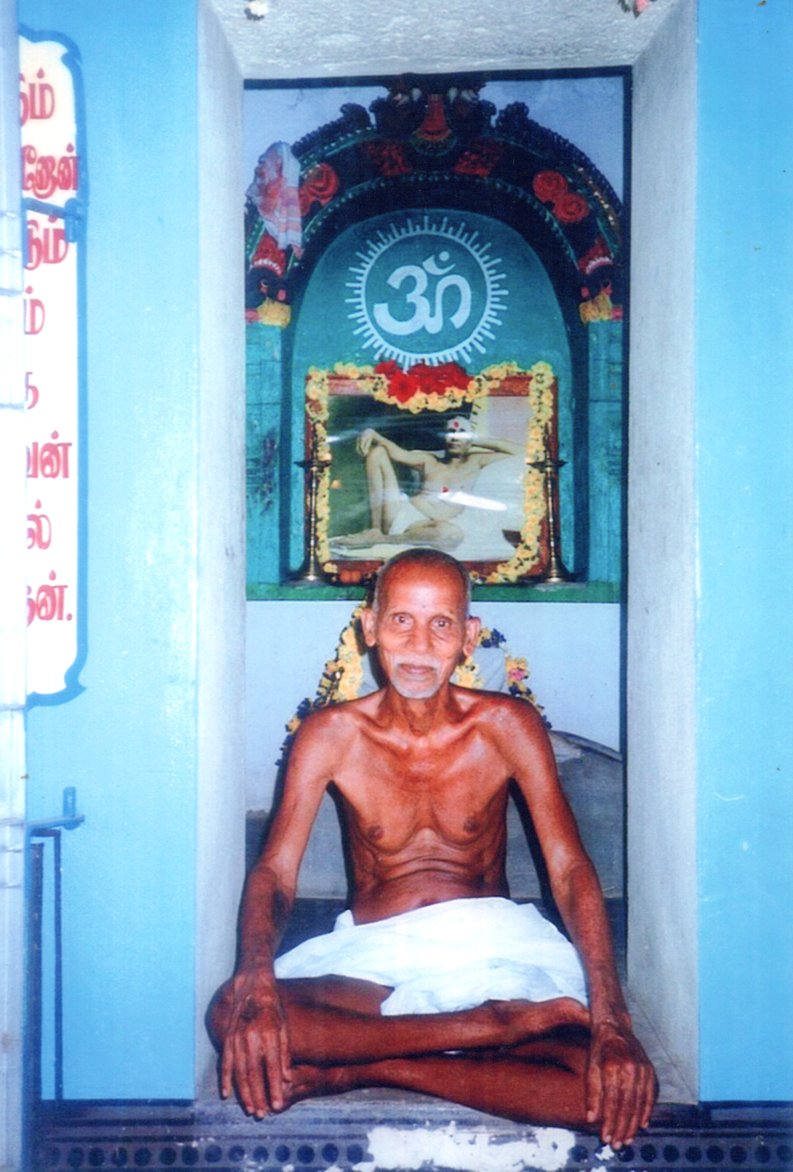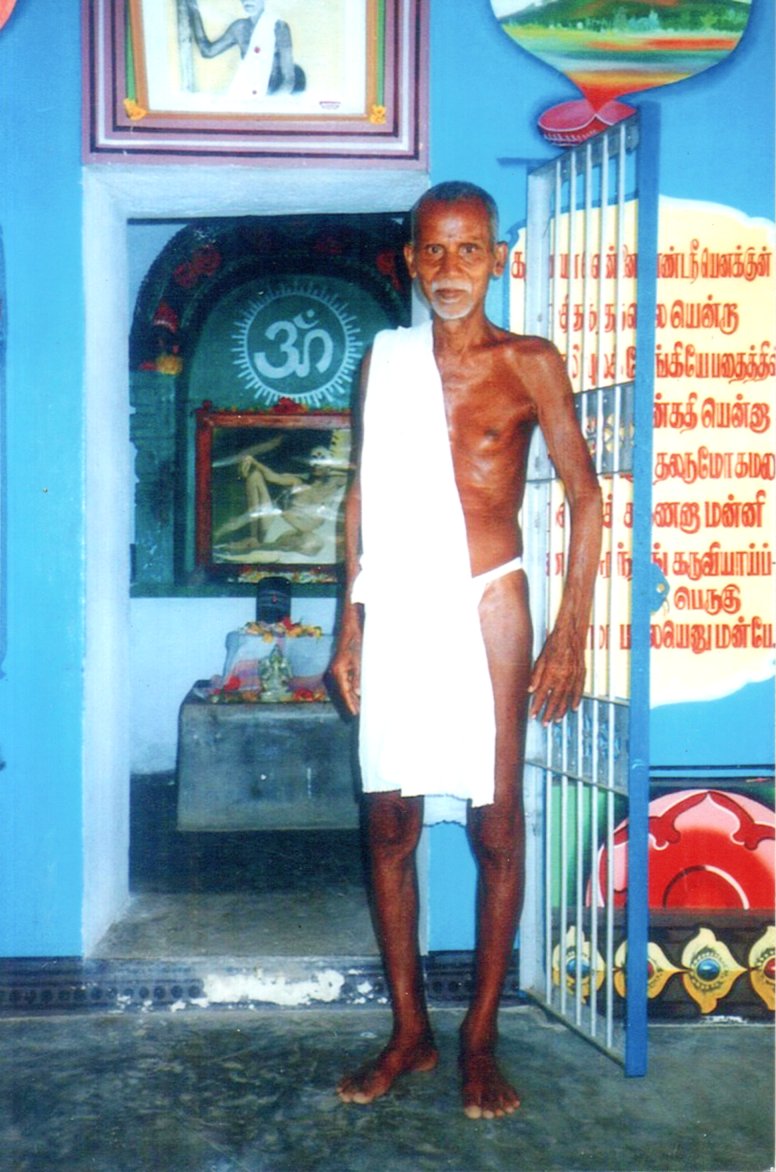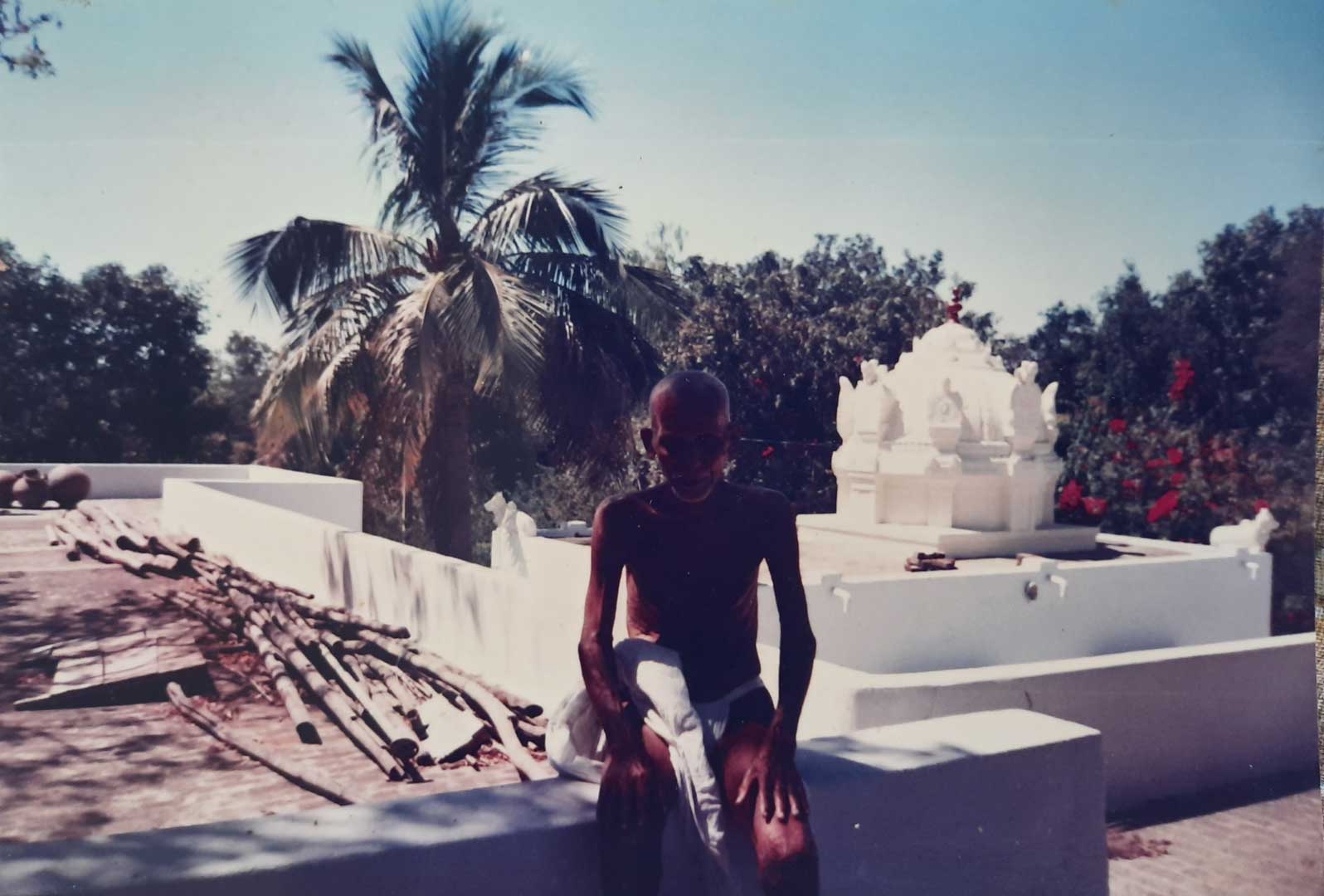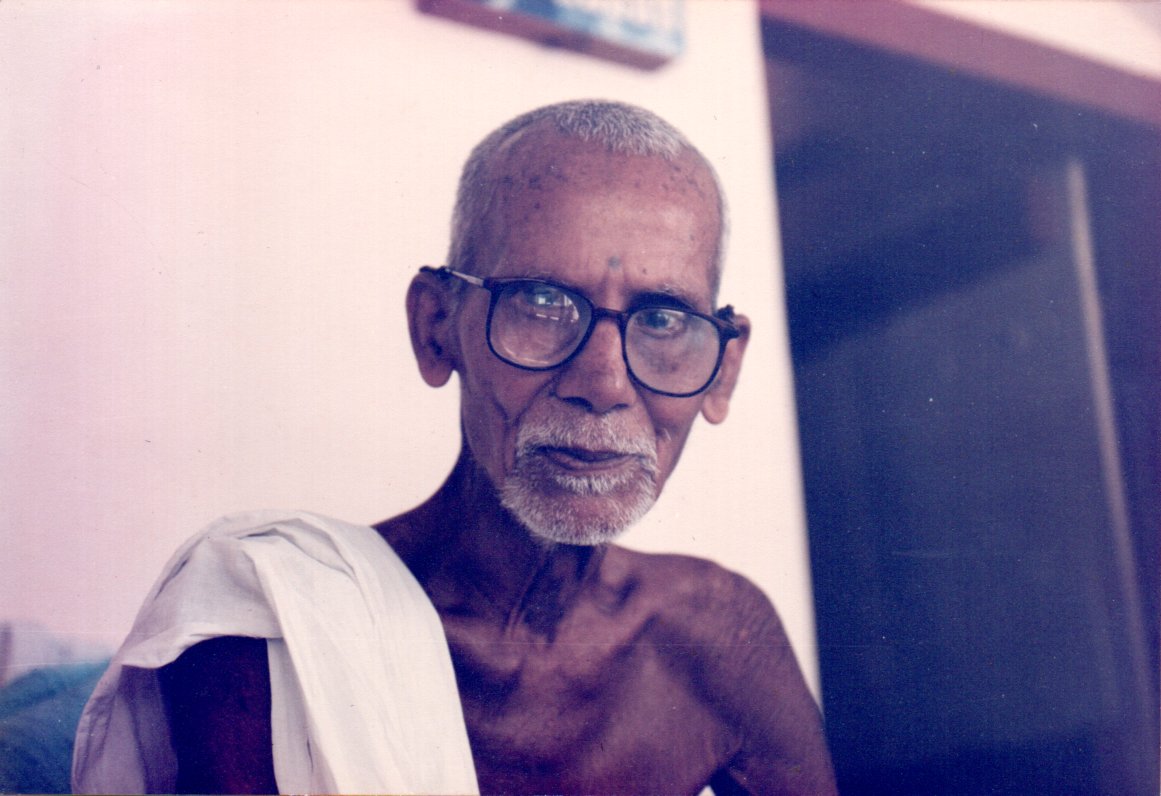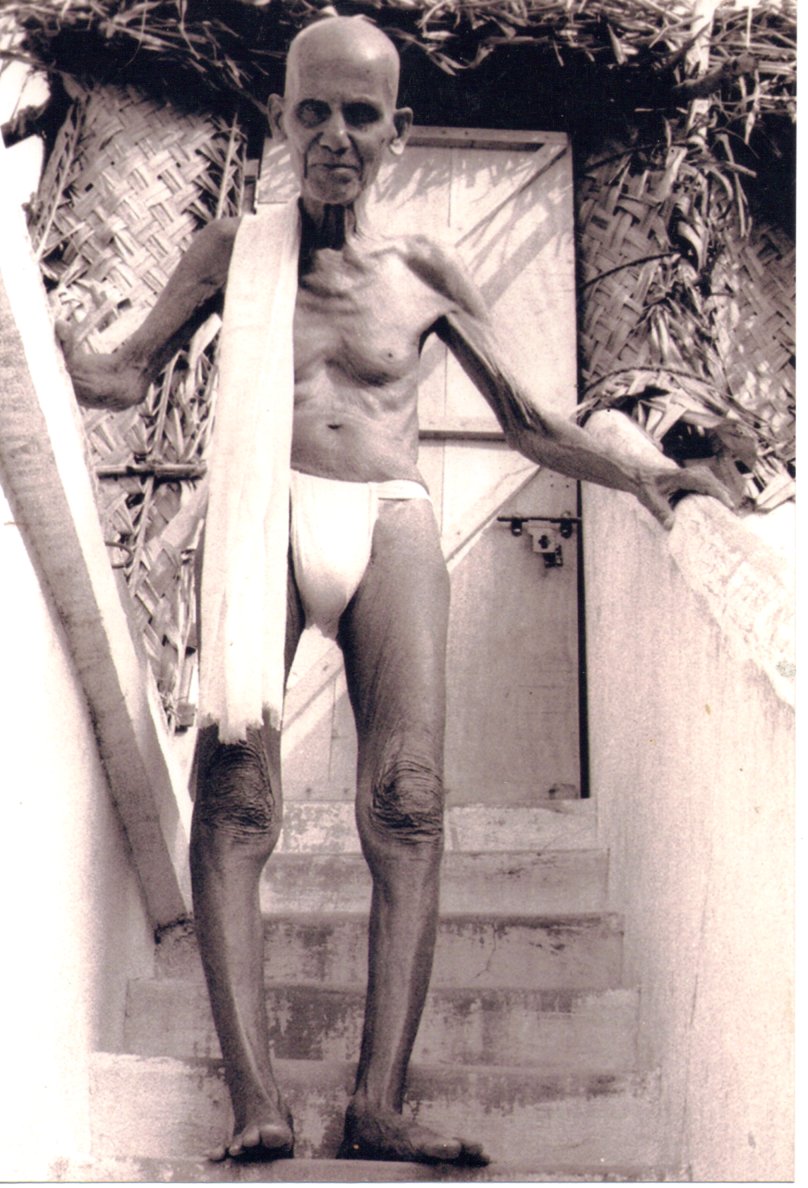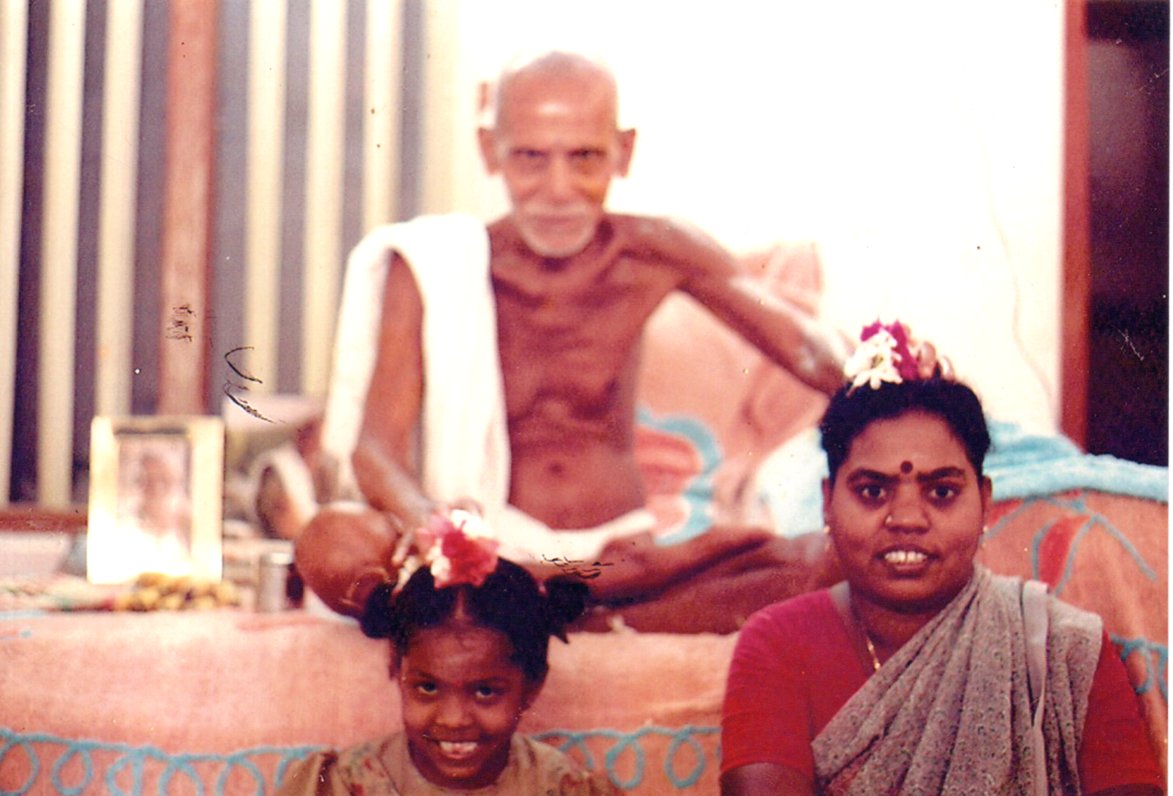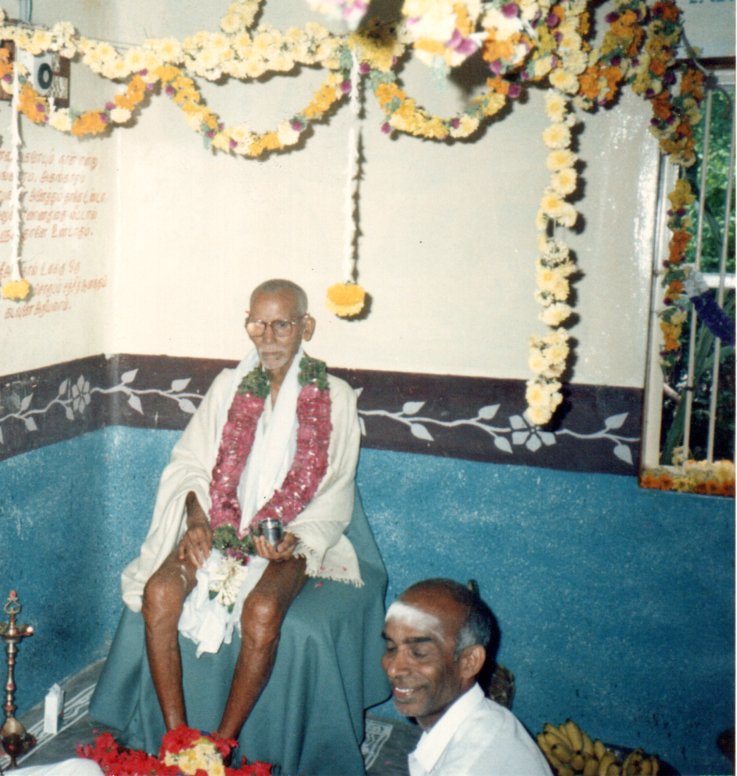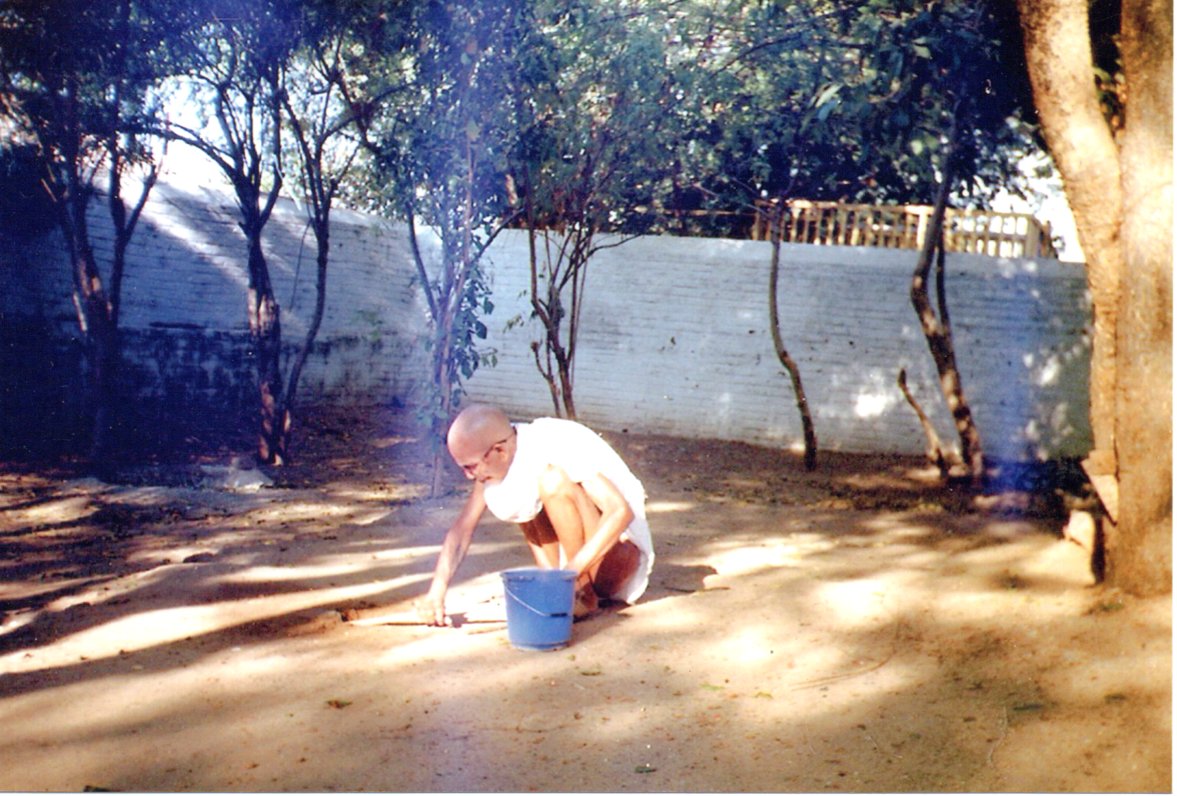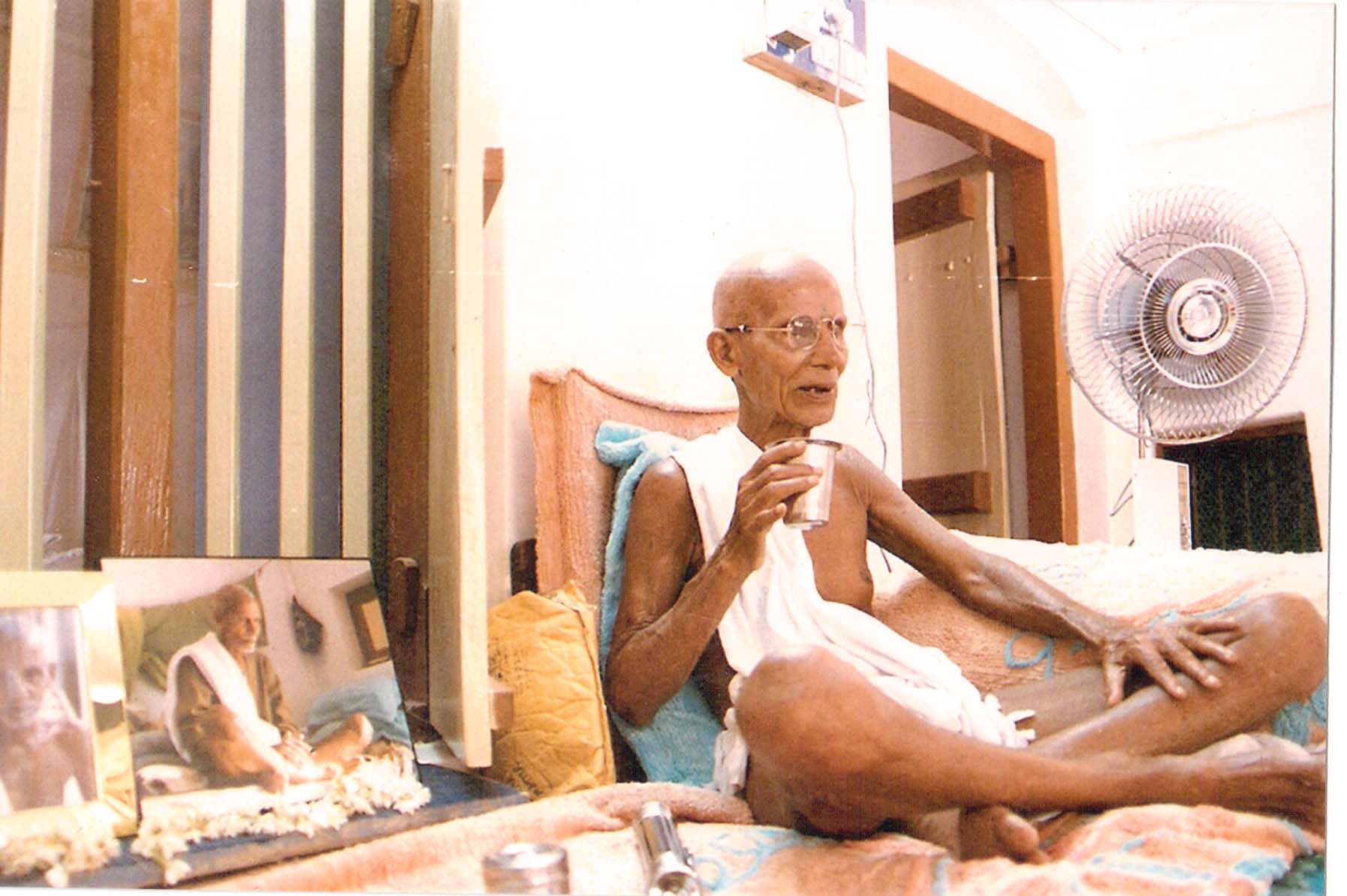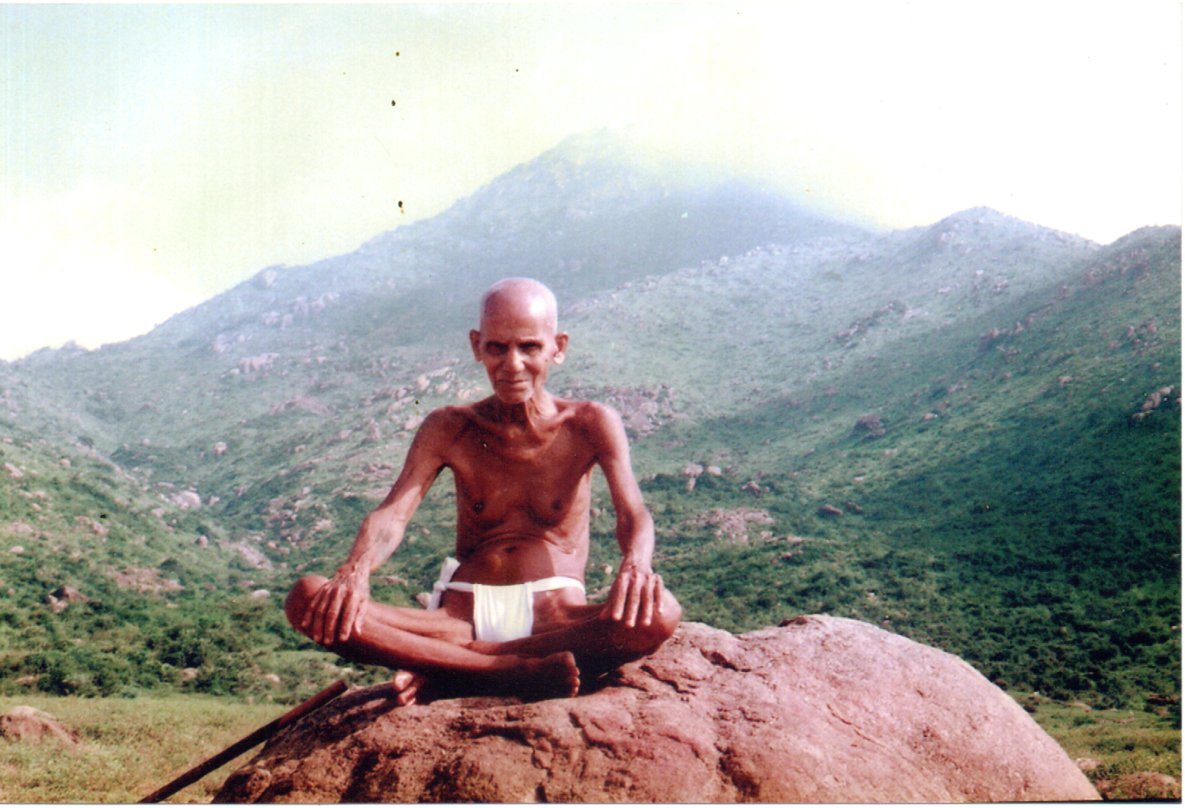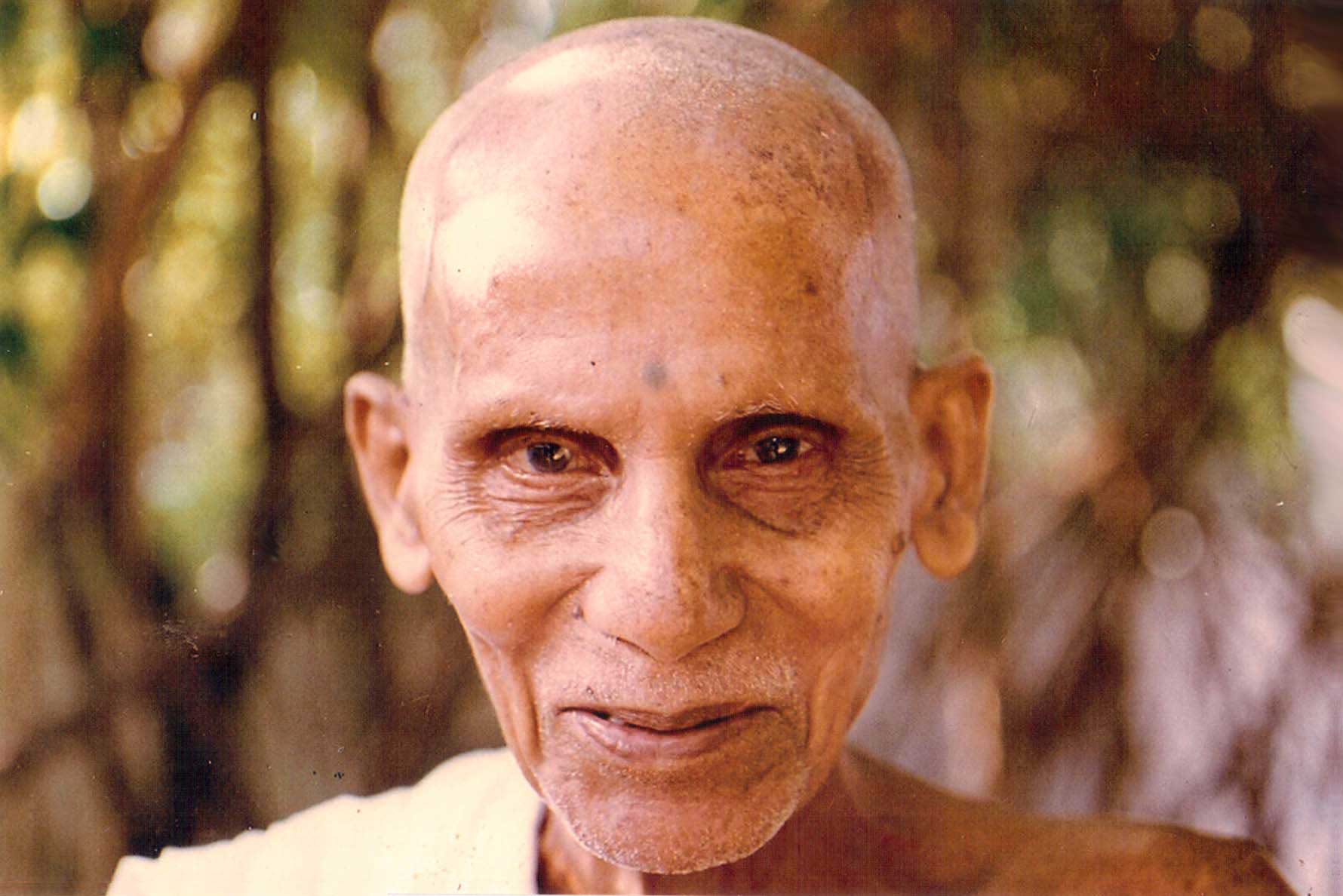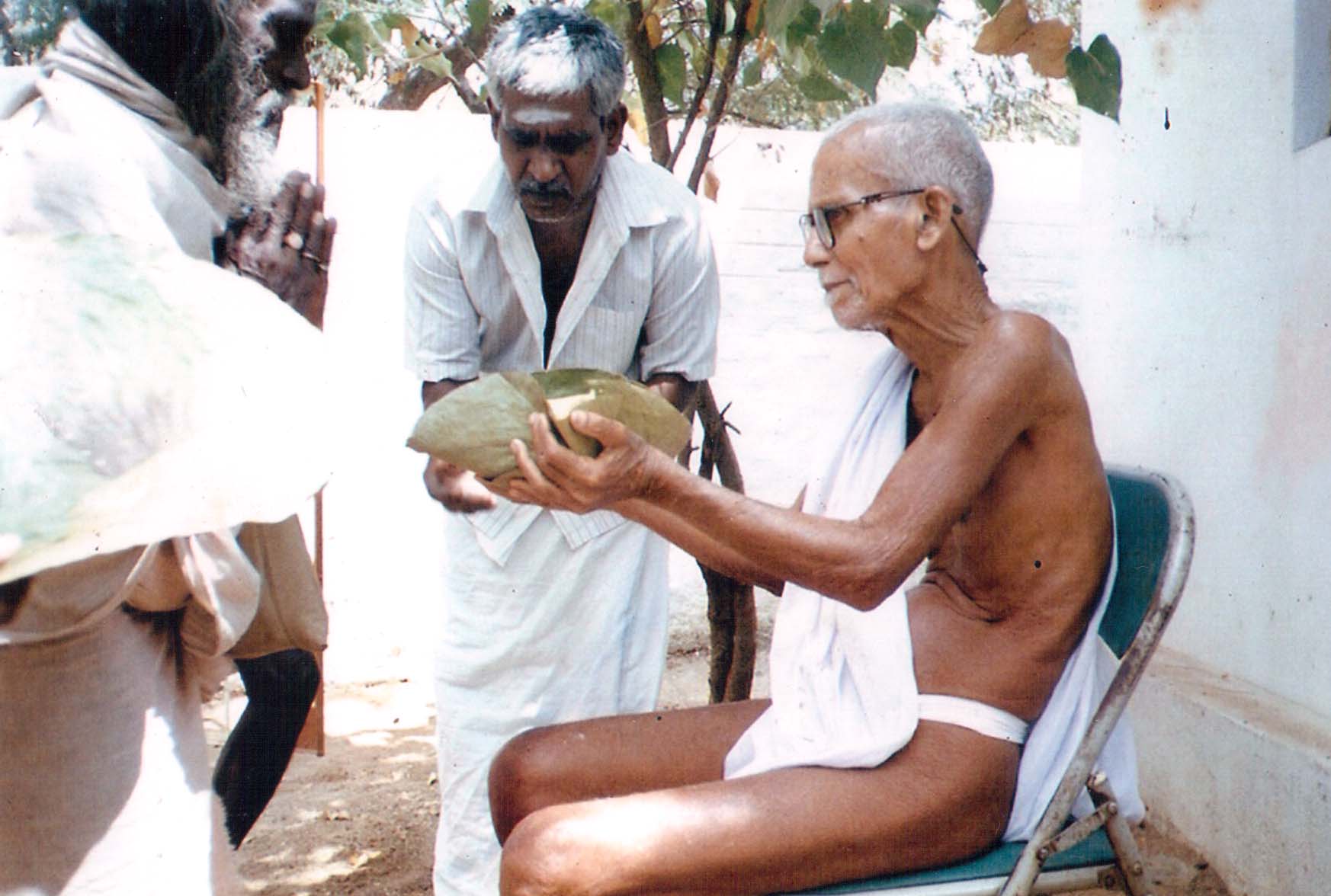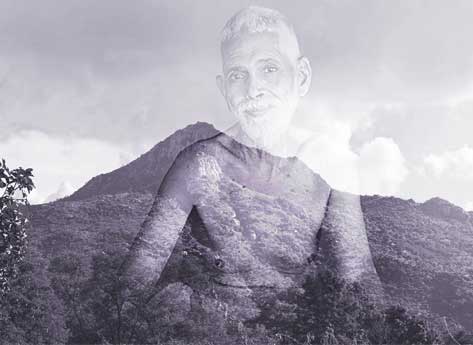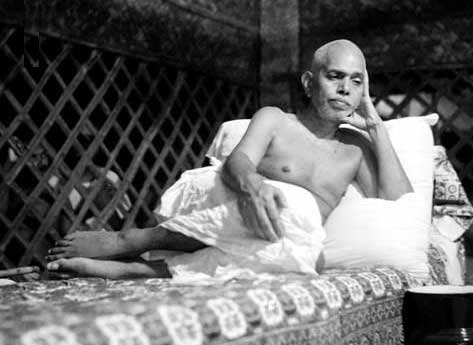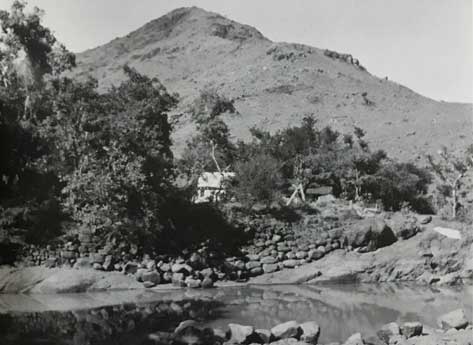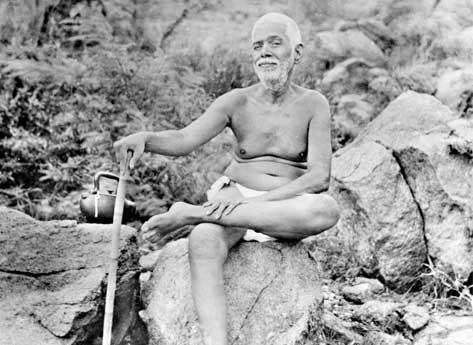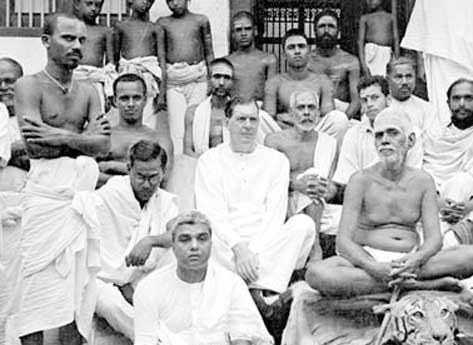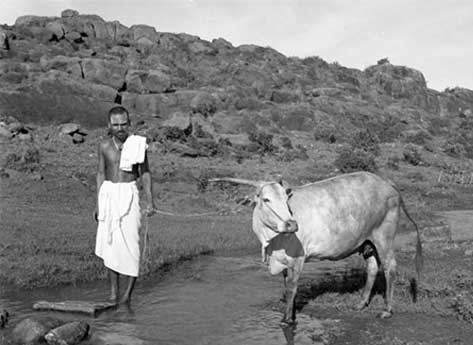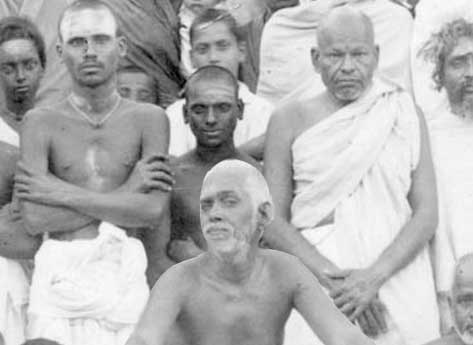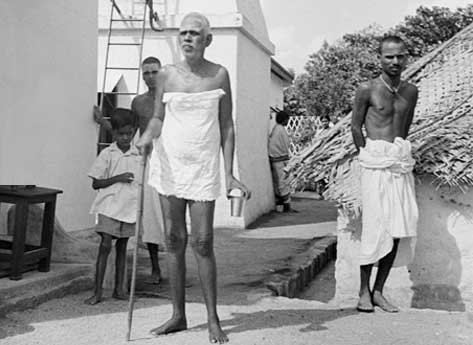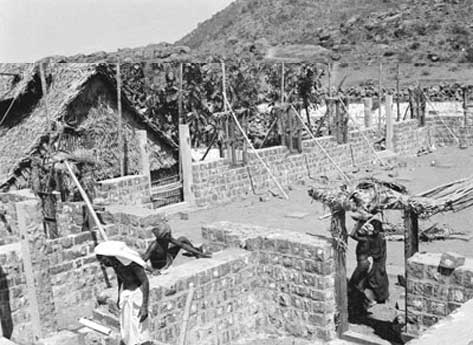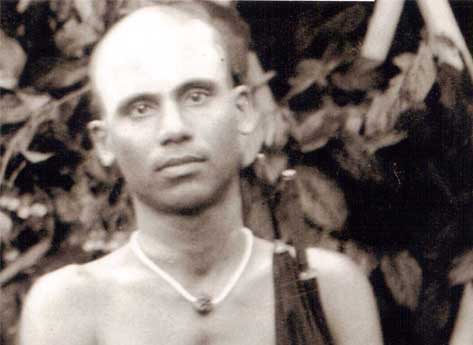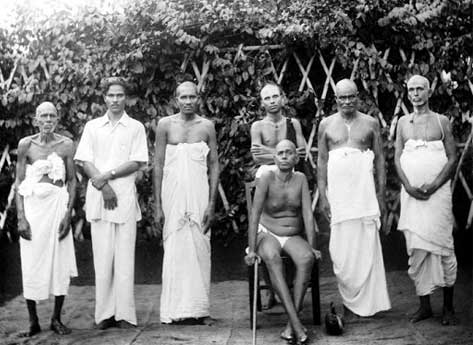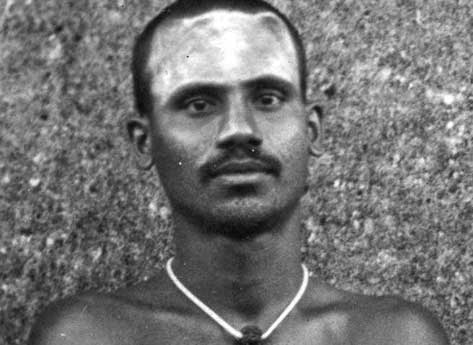16. Teachings
We present below, a few examples of Sri Annamalai Swami’s teachings, recorded during his interactions with devotees.
In his lucid, straightforward responses to questions, the core message of Bhagavan shines bright and clear.
For a complete recording please purchase the books Living by the Words of Bhagavan and Final Talks.
The correct way to pursue self-enquiry.
Bhagavan has said: When thoughts arise stop them from developing by enquiring, “To whom is this thought coming?” as soon as the thought appears. What does it matter if many thoughts keep coming up? Enquire into their origin or find out who has the thoughts and sooner lr later the flow of thoughts will stop. This is how self-enquiry should be practiced.
First seal off the entrances and exits to the mind by not reacting to rising thoughts or sense impressions. Don’t let new ideas, judgements, likes, dislikes, etc enter the mind and don’t let rising thoughts flourish and escape your attention.
Thoughts need a thinker to pay attention to them and indulge in them. If the thinker withholds his attention from rising thoughts or challenges them before they have a chance to develop, the thoughts will all die of starvation. You challenge them by repeatedly asking ‘Who am I? Who is the person who is having these thoughts?’. For it to be effective you must make it before the rising thought has had a chance to develop into a stream of thoughts.
You must generate the conviction, ‘I am the all-pervasive consciousness in which all bodies and minds in the world are appearing and disappearing. I am that consciousness which remains unchanged and unaffected by these appearances and disappearances.’ Stabilise yourself in that conviction. That is all you need to do.
But I am so accustomed to feeling ‘I am this “little self”‘. I need help.
The ‘little self’ will only give way to the real Self if you meditate constantly. You cannot wish it away with a few stray thoughts. If you can understand that this ‘little self’ never at any time had any existence outside your imagination (just like the snake never existed; it was always the rope), you will not be concerned about ways to eliminate it. Your desire for help in eliminating it is part of your problem. Don’t make the mistake of imagining there is some goal to be reached or attained. If you think like this you will start to look for methods and people to help you. This just perpetuates the problem you are trying to end.
Instead cultivate the strong awareness, ‘I am the Self. I am that. I am Brahman. I am everything.’ You don’t need any methods to get rid of the wrong ideas about yourself. All you have to do is stop believing them. The best way to do this is to replace them with ideas which more accurately reflect the real state of affairs. If you think and meditate ‘I am the Self,’ it will do you a lot more good than thinking, ‘I am the “little self”. How can I get rid of this “little self”?’
You said that you need help. If your desire to gain a proper understanding of your real nature is intense enough, help will automatically come. If you want to generate an awareness of your real nature you will be immeasurably helped by having contact with a jnani. The power and grace which a jnani radiates quieten the mind and automatically eliminate the wrong ideas you have about yourself. You can make progress by having satsang of a realised Guru and by constant spiritual practice. The Guru cannot do everything for you. You must practice constantly in order to give up the limiting habits of many lifetimes.
How does Māyā operate? How is the Self concealed from itself?
The Self, which is infinite power and the source of all power, is indivisible. Yet within this indivisible Self there are five saktis or powers, with varying functions, which operate simultaneously: Creation, preservation, destruction, veiling (māyā sakti) and grace. The fifth sakti, grace, counteracts and removes the fourth sakti, which is māyā. When māyā is totally inactive, that is when the identity with the body and mind has been dropped, there is an awareness of consciousness, of being. When one is established in that state, there is no body, no mind, no world. These 3 things are just ideas which are brought into an apparent existence when māyā is present and active.
The sole effective way to dissolve māyā is the path shown by Bhagavan: one must do self-enquiry and discriminate between what is real and what is unreal. It is the power of māyā which makes us believe in the reality of things which have no reality. If you ask, ‘What are these imaginary things?’ the answer is, ‘Everything that is not the formless Self’. The Self alone is real; everything else is a figment of our imagination.
It is not helpful to enquire why there is māyā and how it operates. If you are in a boat which is leaking, you don’t waste time asking whether the hole was made by an Italian, a Frenchman or an Indian. You just plug the leak. Attempting to find the origin of māyā with your mind is doomed to fail because any answer you come up with will be a māyā answer. Establish yourself in the Self. Then watch how māyā takes you over each time you fail to keep your attention there.
If Māyā is a Sakti, what exactly is this Sakti?
Sakti is energy or power. It is a name for the dynamic aspect of the Self. Sakti and Sānti are two aspects of the same consciousness. If you want to separate them at all, you can say that sānti is the unmanifest aspect of the Self which sakti is the manifest. But really they are not separate. A flame has two properties: light and heat. The two can’t be separated. They are like the sea and the waves. Sānti is the vast unmoving body of water. The waves that appear and move on the surface are sakti. Sānti is motionless, vast and all-encompassing while sakti is active.
Bhagavan used to say that after realisation, the jīvanmuktā experiences sānti within and is established permanently in that sānti. In that state of realisation he sees that all activities are caused by sakti. After realisation, one is aware that there are no individual people doing anything. Instead there is an awareness that all activities are the sakti of the same Self. The jnāni is one who is fully established in the sānti, and is always aware that sakti is not separate from him. In that awareness everything is his Self and all actions are his.
The universe is controlled by the one sakti, sometimes called Paramēswara sakti (the power of the Supreme Lord). This moves and orders all things. Natural laws, such as the laws that keep the planets in their orbits, are all manifestations of this sakti.
If everything is the Self, even Māyā, then why can’t I see the Self?
Because you are looking in the wrong direction. You have the idea that the Self is something that you see or experience. This is not so. The Self is the awareness or the consciousness in which the seeing and experiencing takes place. Even if you don’t see the Self, the Self is still there.
Bhagavan sometimes remarked humorously: ‘People just open a newspaper and glance through it. Then they say, “I have seen the paper”. But really they haven’t seen the paper, they have only seen the letters and pictures that are on it. There can be no words or pictures without the paper, but people always forget the paper while they are reading the words.’
While people see the names and forms that appear on the screen of consciousness, they ignore the screen itself. If people were to be aware of the consciousness instead of the forms that appear in it, they would realise that all forms are just appearances which manifest within the one indivisible consciousness.
That consciousness is the Self that you are looking for. You can be that consciousness but you can never see it because it is not something that is separate from you.
How do I know if I am progressing in my Meditation?
Those who meditate a lot, often develop a subtle form of ego. They become pleased with the idea that they are making progress; they become pleased with the states of peace and bliss that they enjoy; they become pleased that they have learned to exercise some control over their wayward minds; or they may derive some satisfaction that they have found a good Guru or a good method of meditation. All these feelings are ego feelings. When ego feelings are present, awareness of the Self is absent. The thought ‘I am meditating’ is an ego thought. If real meditation is taking place, this thought cannot arise.
Don’t worry about whether you are making progress or not. Just keep your attention on the Self twenty-four hours a day. Meditation is not something that should be done in a particular position at a particular time. It is an awareness and an attitude that must persist throughout the day. To be effective, meditation must be continuous.
If you want to water a field you dig a channel to the field and send water continuously along it for a lengthy period of time. If you send water for only ten seconds and then stop, the water sinks into the ground even before it reaches the field. You will not be able to reach the Self and stay there without a prolonged continuous effort. Each time you give up trying, or get distracted, some of your previous effort goes to waste.
You divide your life up into different activities: ‘I am eating’, ‘I am meditating’, ‘I am working’, etc. If you have ideas like these you are still identifying with the body. Get rid of all these ideas and replace them with the single thought ‘I am the Self’. Hold on to that idea and don’t let go. Don’t give these ‘I-am-the-body’ ideas any attention. Learn to recognise them the moment they arise or deny them. Stay firmly in the Self and don’t allow the mind to identify with anything that the body does.
My mind is unstoppable. How do I bring it to the Self?
When it rises, the mind automatically goes out into the world. If you do self-enquiry you can train it to flow towards to the Self. In deep sleep the mind automatically goes to the Self, but you are not aware of it. Through the steady practice of self-enquiry the mind can be trained in such a way that it automatically flows towards the Self in the waking and dream states. It is very difficult at first, but with practice it can be done.
Repeated self-enquiry makes the mind go back into the Self. Other methods may produce good experiences but the good experiences will not make the mind go back into the Self and stay there.
Is it good to devote some time to stay healthy?
It is difficult to do sādhana if the body is not in good condition. Hatha yoga is one way of staying healthy. Bhagavan used to say, however, that of all the different āsanās, nidhidhyāsanā is the best. He would then add that nidhidhyāsanā means abidance in the Self.
Don’t pay too much attention to the body. If you worry about the well-being of your body, you identify with it more and more. Look at it as a useful vehicle: maintain it, fuel it properly and repair if it breaks down, but don’t become attached to it. If you can keep your attention on the Self without being distracted by unpleasant bodily sensations, you are healthy enough to do sādhana. If you do your meditation earnestly and continuously you will begin to find that health problems will not distract you. When your abidance in the Self is firm and strong, you cease to be aware of the body and its pains.
We must take care of the body by giving it food, shelter and clothing. This is necessary because the journey to the Self is only easy when the body is healthy. If a ship is not in need of repair, if it is in good condition, we can easily use it to go on a journey. But we should not forget the purpose for which we have been given this body. Our purpose in life is to realise the Self. It is an easy matter to get a little food and find somewhere congenial to live and meditate. Once we have achieved this we should have no further interest in the world and its problems.
Forgetfulness of the Self is a big problem for me.
Forgetfulness of the Self happens because of non-enquiry. So I say, ‘Remove the forgetfulness through enquiry’. Forgetfulness or non-forgetfulness is not a part of your destiny. It is something you can choose from moment to moment. That is what Bhagavan said. He said that you have the freedom either to identify with the body and its activities, and in doing so forget the Self, or you can identify with the Self and have the understanding that the body is performing its predestined activities, animated and sustained by the power of the Self.
If you have an oil lamp and you forget to put oil in it, the light goes out. It was your forgetfulness and your lack of vigilance that caused the light to go out. Your thoughts were elsewhere. They were not on tending the lamp.
In every moment you only have one real choice: to be aware of the Self or to identify with the body and the mind. If you choose the latter course, don’t blame God or God’s will, or predestination. God did not make you forget the Self. You yourself are making that choice every second of your life.
If you remain in the Self, enquiry will not be necessary.
If you move away from the Self, and go back to the mind, you then have to enquire again and go back to your Self. Who is this ‘I’? It is neither the body nor the mind. If you remain as the Self, there is neither body nor mind. So what is this ‘I’? Enquire into it and find out for yourself.
When you see the rope, what happens to the snake? Nothing happens to it because there never was a snake. Similarly, when you remain as the Self, there is a knowing that this ‘I’ never had any existence.
All is the Self. You are not separate from the Self. All is you. Your real state is the Self, and in that Self there is no body and no mind. This is the Truth, and you know it by being it. This ‘I am the body’ ideas is wrong. This false idea must go and the conviction ‘I am the Self’ should come to the extent that it becomes constant.
At the moment this ‘I am the body’ idea seems very natural for you. You should work to the point where ‘I am the Self’ becomes natural to you. It happens when the wrong idea of being the body goes, and when you stop believing it to be true, it vanishes as darkness vanishes when the sun appears.
This life is all a dream, a dream within a dream within a dream. We dream this world, we dream that we die and take birth in another body. And in this birth we dream that we have dreams. All kinds of pleasures and suffering alternate in these dreams, but a moment comes when waking up happens. In this moment, which we call realising the Self, there is the understanding that all births, all the deaths, all the sufferings and all the pleasures were unreal dreams that have finally come to an end.
Bhagavan has instructed us in Who Am I? to see the whole world as a dream. When realisation comes, nothing will affect you because you will have the firm knowledge that all manifestation is an unreal dream.
Final words
You stumble around in the darkness of your mind, not knowing that you have a torch in your hand. That light is the light of the Self. Switch it on and leave it on and you will never stumble again.
You are all here because there is a desire in you to realise the Self. This desire does not arise randomly or accidentally in some people and not in others. It is there because of the punyās that may have come from meditation, charitable works and so on. These punyās will manifest as a desire for freedom, a desire to do earnest sādhana, a desire to find a good teacher in whose presence the truth will be taught and revealed. If someone is destined to be a jnāni in this life, it means that he has come to this final birth with a mountain of punyās to his credit. These punyās will take him to a real Guru, to a real satsang, and in this environment he will do sadhana and achieve the goal. If one does not have this mountain of punyās from the past, there will be no desire for freedom, no desire to look for a Guru who can delivery it.
The Self is readily available all the time but we cannot be aware of it or even put our attention on the thought of it because our vasanas are continuously leading our interest and attention in other directions. That is why it is so important to have the awareness, ‘I am not the mind. I am the Self.’ You have to forcibly drag your wandering attention back to the Self each time it shows an interest in going anywhere else. Don’t be interested in the words that the mind is serving up for you. It is putting them there to tempt you into a stream of thoughts that will take you away from the Self. You have to ignore them all and focus on the light that is shining within you.
I ask you to put all your attention, all your interest on realising this final teaching: ‘I am not the body or the mind. I am the Self. All is the Self.’ This is Bhagavan’s final teaching. Nothing more needs to be added to it. Keep good company while you pursue this knowledge and all will be well. – Sri Annamalai Swami
Related Content
Books
Books about Sri Annamalai Swami. The content for all these books came from interviews conducted with Swami by various devotees especially David Godman whose books 'Living By The Words Of Bhagavan' and 'Sri…
Ramana Pādha Mālai
These 45 verses of Ramana Pādha Mālai, composed by Sri Sivaprakasam Pillai for Bhagavan, were hand written by Sri Annamalai Swami and given to Sundaram when he first met Swami in 1974. This section presents…
Gallery
A wide selection of photos and videos of Sri Annamalai Swami from his youth till his later years. Most of these pictures are from various albums that Swami had maintained in various albums, now maintained by…
15. Mahasamadhi
15. Mahasamadhi
SRI ANNAMALAI SWAMI
15. Mahasamadhi
THE STORY OF SRI ANNAMALAI SWAMI
Sri Annamalai Swami's Mahāsamādhi
Sri Annamalai Swami attained Mahāsamādhi, on November 9th, 1995 at 4:45 a.m. His caretaker Sundaram Swami recalls those final days and moments.
A divine incident
This incident happened a few months before Sri Annamalai Swami’s samādhi. Swami rarely woke me up during the middle of the night. But that night, I heard him call for me. It was around midnight. I got up and went to him. He was sitting upright on his bed.
He told me ‘Six celestial, luminous bodies have come to see me. They are standing here with garlands to bless me before my samādhi. They’ve been waiting for a few minutes now. I wanted you to see it.’
I looked around, I strained my eyes as much as I could but I did not see them. I asked Swami again, where they were?
‘They are right here. Three here and three on this side.’
I tried my best to focus but was unable to see them. Then Swami asked me to sit down. So I sat down, trying to still my mind. About 10 minutes passed this way. Sri Annamalai Swami then stood up and told me,
‘They have gone now. You can get up. I thought it would be good if my Sishya also had a darshan of them. It is okay. In your current state (pakkuvam) you could not see them. They were of Voli Udal (bodies of light) golden in colour. But the fact that when they came, you sat here is itself a great blessing. That is enough.’
Mahāsamādhi
For some time now, Swami had Asthma trouble which worsened during the winter months. His overall health was declining and the 89 year old body had become extremely weak. So we thought it would be good if we stayed awake at night by his side, in case he needed any assistance. Myself and another devotee Gabriel Baechler (he would later translate the book Living By the Words of Bhagavan into French) decided to take turns to stay awake at night by Swami’s side. Each would sleep for one hour and be awake for the next hour, while the other slept.
The previous evening (November 7th), Gabriel asked Swami a question. ‘For the last 25 days I’m seeing your body, undergoing tremendous pain. Is it bothering you? How does it feel inside?’ Sri Annamalai Swami had been lying down for a long time, but hearing this question, he got up and sat on the bed. He then replied by quoting a song by Sri Pattinathar, the translation of which is:
The next day (November 8th, 1995) was passed mostly in silence. At night we took turns as usual. Early next morning, (November 9th) around 4:30 AM I went to sleep while Gabriel started his hour at Swami’s side. But soon he woke me up ‘Sundaram, Sundaram’. I got up and looked at Sri Annamalai Swami. He was pointing at something. He was pointing at the chair next to him. He was indicating that he wanted to sit on the chair. We slowly helped him get up from the bed and sit on the chair. I stood behind the chair and was holding Swami’s head and chest, while Gabriel was in front of him. A few minutes passed in silence. Around 4:45 a.m. Sri Annamalai Swami attained mahāsamādhi, on November 9th, 1995. He had remained conscious till the last breath. A great Jivan Mukta had left this earthly body to merge with Brahman.
Dr. Azagappan was called. After getting his confirmation, telegrams were sent out to inform devotees. We performed the last rites, including an Abhishekam. I still remember how his open eyes were filled with light and grace. Devotees who came for darshan of Sri Annamalai Swami’s divine body, also felt that light and grace in his eyes. It was a great blessing to be at Swami’s side when he attained mahāsamādhi.
His body has been placed in rest in the samādhi temple already built by his devotees 10 years ago in 1985 in the ashram according to Sri Annamalai Swami’s instructions. Regular poojas are performed in the samādhi temple. Swamiji’s presence is always felt in Sri Annamalai Swami Ashram. The body was dropped, but He is everywhere.
My last request
Towards the final days of Sri Annamalai Swami, I had asked Swami what would happen to my spiritual journey. I asked him who would free this soul. Swami replied that there was nothing to worry.
‘Another Jnāni will come. He will take care of you’, he said.
After Sri Annamalai Swami’s Mahāsamādhi, I was grief stricken. Twenty-one years of service to my Guru had ended. At that time I was also managing the ‘Annamalai Swami Trust’ and all its activities. I continued these activities for another 8 years. It was then (year 2000) that we had published the book Final Talks. Despite these activities, there was no peace in me. After considerable thought, I decided to hand over everything to Sri Ramanasramam as an offering to Bhagavan and travel to the Himalayas. I left Tiruvannamalai. For six years I wandered across the Himalayan region. There as well, I was blessed to meet so many jnānis.
Yet after six years I realized that my heart was still in Tiruvannamalai. So I returned in the year 2006 and spent the next four years in solitude and doing Giri Pradakshina everyday around Arunachala. It was on that same Girivalam road in 2010, that I met Sri Mahaprabu, a jnāni and devotee of Bhagavan. Sri Mahaprabu compassionately took me in as his disciple and has been guiding me ever since, just as Sri Annamalai Swami had told me in his final days.
With his guidance I once again took up the work of serving Sri Annamalai Swami. In the year 2010, on December 23rd, the Jayanthi day of Sri Bhagavan, together with the original trustees, we formed the “Sri Satguru Annamalai Swamigal Memorial Trust” along with the former trustees of the Annamalai Swami Ashram Trust. A few months later, on June 15th 2011, we also formed the “Sri Satguru Annamalai Swamigal Spiritual Trust”. I have been serving as the president of both these trust till date.
Related Content
16. Teachings
We present below, a few examples of Sri Annamalai Swami's teachings, recorded during his interactions with devotees. In his lucid, straightforward responses to questions, the core message of Bhagavan shines…
Gallery
A wide selection of photos and videos of Sri Annamalai Swami from his youth till his later years. Most of these pictures are from various albums that Swami had maintained in various albums, now maintained by…
Ramana Pādha Mālai
These 45 verses of Ramana Pādha Mālai, composed by Sri Sivaprakasam Pillai for Bhagavan, were hand written by Sri Annamalai Swami and given to Sundaram when he first met Swami in 1974. This section presents…
14. The Later Years
14. The Later Years
SRI ANNAMALAI SWAMI
14. The Later Years
THE STORY OF SRI ANNAMALAI SWAMI
After Bhagavan's Mahānirvāna
After the Mahanirvana of Bhagavan, Sri Annamalai Swami continued his sādhana exactly as instructed by Bhagavan for many years, staying in the same place that Bhagavan had asked him to. This sādhana culminated in his attaining Self-Realization. Sundaram Swami, caretaker of Sri Annamalai Swami for 21 years recollects life during those days.
Realizing the Self
After Bhagavan left his body, Sri Annamalai Swami underwent intense Sadhana, following the method of Self-Enquiry as instructed by Bhagavan. In his own words: ‘When I moved to Palakothu I found it far easier to practice Bhagavan’s teachings. After a few months of meditation in Palakothu my mind became relatively quiet and still. A wonderful coolness pervaded my body. In the course of time, after many years of practice, both of these conditions became permanent.’
Many years later he responded to a question by a devotee regarding his experience.
Sri Annamalai Swami: It was my experience that through continuous Sadhana I gradually relaxed into the Self. It was a gradual process.
For 50 years, Sri Annamalai Swami stayed in the same house that was built by the grace of Bhagavan. He never left the house ever. This is a tremendous feat in itself. Even during his very old age when his vision was failing, the doctor recommended cataract surgery in Tiruvannamalai. Annamalai Swami refused to leave his house saying ‘If so, then the vision of Jnana is enough for me.’ The doctor gave in and the surgery was performed in the room where Swami lived. Sri Annamalai Swami obeyed the words of Bhagavan to the letter. Such was his surrender to the Guru. For most of those years he was unknown to the world, except for a few devotees from nearby areas who would come to visit him once in a while. He spent the years immersed in the bliss of the Self.
Sundaram Swami remembers those days
From young I was inclined towards meeting Sadhus and taking care of their needs. I also enjoyed traveling to temples and other holy places. The thirst to find a Guru for spiritual evolution was strong from my younger days. In the year 1974 during my travels I came across a publication series called Arunachala Mahimai. It talked about the lives of Bhagavan Ramana Maharshi, Sri Seshadri Swami and Sri Annamalai Swami, among others. The article mentioned that Sri Annamalai Swami, an Ātma Jnāni was living by himself in Tiruvannamalai. I knew how rare it is to get a darshan of a living Jnāni. Immediately I felt a strong urge to go and meet him. I was 23 at that time, a bachelor working for the State Government of Tamilnadu in Salem. Very soon I left for Tiruvannamalai with a friend and had my first darshan of Sri Annamalai Swami. He was 69 years at that time and living all by himself.
Swami spoke to us for three hours, about various spiritual matters. That day I felt strongly that my future life was destined to be spent with this Swami, serving him. He told us to come and visit him frequently, which I did, almost monthly. Each visit brought me closer to the Swami. I would help him with various chores. Since he didn’t travel at all, he needed assistance with basic things such as paying the electricity bill! Nearly two years went by this way.
On February 12th, 1976 I received an inland letter from Sri Annamalai Swami. It was handwritten by him in Tamil. I remember the contents exactly. Here is a transliteration:
“Velayai rajinama pannivittu yenakku sevai seyvadhurkaga udanae porapattu varavum. Ippadikku Annamalai Swami”.
“Please resign your job and leave immediately to come here and serve me – Annamalai Swami.”
I was overjoyed on seeing the letter. I decided to leave immediately. There was no concern whatsoever about my job, finances, etc.
I left the office and went straight to the Suganeswara temple nearby (Siva temple). There I wrote my resignation letter. I mentioned my desire to strive towards Ātma Jnānam and that I had found my Guru, and as a result was resigning from the job. Having mailed the letter and wound up my small rented room, the very same day I left for Tiruvannamalai to start a new life at the feet of Sri Annamalai Swami.
Seva begins
When I walked into Sri Annamamali Swami’s house and prostrated to him, Swami welcomed me and said ‘Think of your life until this moment as a dream and forget it.’ I accepted his words and lived by it. Immediately I started to immerse myself in Guru Seva, by attending to Swami’s needs, buying basic supplies, cooking, cleaning, taking care of outside work, etc.
In those days there was just the 1 room and a small kitchen area. Devotees from nearby villages used to come once in a month or so and spend a few days with Swami. They would bring groceries and other essentials for the house. Sri Annamalai Swami had narrated to me how Chadwick supported him for 8 to 10 years and the circumstances that brought that to an end. He also narrated how Bhagavan’s grace had ensured that his needs continued to be taken care of. As soon as Chadwick’s support ended, he began to receive help from devotees in a village called Thellar, near Vandavasi (about 75 km from Tiruvannamalai). Jayaram Mudaliar, Kuppuswami Achari and Adhiveeraragavan Pillai became regular supporters. Sri Annamalai Swami called them Mummurthigal (referring to the three Gods – Brahma, Vishnu and Shiva). Whenever they came they would bring rice, paruppu (lentils) etc. They would stay for a few days even though the house was very small.
Regular Satsangs begin
In 1978 Sri Annamalai Swami suggested that it would be good if we built a room for me to stay and had it built for me. As contributions began to trickle in, we built a small kitchen. 1982 onwards, a few western devotees came to know about Sri Annamalai Swami and began to visit him. I remember Mira (from Japan), David Godman (from England), Parmar (from Canada) and a few more. Sri Annamalai Swami decided to help them. Daily from 3:30 to 5 PM he would conduct Satsang to help them. I became the translator for Swami, whenever he spoke to them. Swami’s teachings and advice were entirely based on what he learned from Bhagavan. He would ask devotees to follow books such as Naan Yaar, Yoga Vashishtam, Ribhu Gita, Kaivalya Navanitam and Ashtavakra Gita.He would primarily give them Bhagavan’s upadesam (teachings).
He would often say:
Then he would bless them and give them tea.
With the increase in western devotees, more funds were available. In addition to Swami’s living room and small kitchen, we constructed a Satsang hall, a small room where Swami could have his meals and then an even smaller store room. In that store room, Swami had a row of pots in which we stored rice, lentils and other staples needed for cooking.
Sri Annamalai Swami’s routine
Despite any outward routine, Swami always seemed to be in dhyānam (meditation), ever alert, ever balanced. It was a great blessing to be of service to such a jnāni for so many years.
At 5:30 a.m. I would serve Swami his morning drink. 1 spoon of Horlicks, 1 spoon of Complan, 1 spoon of honey, all mixed in water, since Swami’s stomach did not take milk too well. He would continue to be in his meditative mood. Around 8:30 he would go for his morning walk for an hour. Breakfast would be ready when he was back. He would sit for a while in his room. He also spent time in a garden, cleaning up the weeds and plucking flowers for Bhagavan. He developed this garden himself. He would then see any devotees who came for his darshan and give them Bhagavan’s upadesam. Around 3:30 he would conduct satsang. Around 6 pm he would go for his evening walk. After coming back he would sit or walk around, always in that dhyānam mood.
After 8 p.m he would sit outside the Samādhi room and ask us to sing Ribhu Gita or Ramana Pādha Mālai. After the chanting, he would clear any doubts that devotees had. This was followed by dinner. And around 10 p.m. Swami would retire. He would stay reclined on his bed. I could not call it sleep either.
The Samādhi temple and shrine
In the year 1985 Sri Annamalai Swami had his Samādhi temple built, next to his house. He then installed a Shiva Lingam and worship was performed daily. After his Mahāsamādhi, his divine body was placed in this temple and following his instructions we placed a photo of Sri Bhagavan where he indicated. Every year on the November 9th (Swami’s Mahāsamādhi day), Arādhana is performed for this Samādhi shrine. Below are various photos of Sri Annamalai Swami and the Samādhi shrine.
The last few years
The years 1993-95 saw an increase in visitors to meet Sri Annamalai Swami, especially jnānis from India and abroad. Two of Osho’s disciples who were enlightened beings, Sri Samdarshi and Sri Poornanand, came for darshan. The Guru of Santi Malai Trust came as well. A German Jnani Hugo Mayor came with his wife for darshan. Another western devotee jnāni Mario Menthes came to see him and got his blessings. I remember all these vividly, especially since I had to translate the conversation from Tamil to English and vice-versa. One morning in 1994, around 9 a.m. Visiri Swami Sri Yogi Ram Surat Kumar came with his devotees. Sri Annamalai Swami had gone for his morning walk. After he returned, he spent some time with them.
Related Content
15. Mahasamadhi
Sri Annamalai Swami attained Mahāsamādhi, on November 9th, 1995 at 4:45 a.m. His caretaker Sundaram Swami recalls those final days and moments as he stood by Swami's side when it happened.
16. Teachings
We present below, a few examples of Sri Annamalai Swami's teachings, recorded during his interactions with devotees. In his lucid, straightforward responses to questions, the core message of Bhagavan shines…
Gallery
A wide selection of photos and videos of Sri Annamalai Swami from his youth till his later years. Most of these pictures are from various albums that Swami had maintained in various albums, now maintained by…
13. Bhagavan Mahanirvana
13. Bhagavan Mahanirvana
SRI ANNAMALAI SWAMI
13. Bhagavan Mahanirvana
THE STORY OF SRI ANNAMALAI SWAMI
Bhagavan leaves his body
Sri Annamalai Swami recollects the incidents that occurred during the final year of Bhagavan’s life, and how Bhagavan’s care for him continued even as he was leaving his body.
Bhagavan’s final years
When Bhagavan became very sick at the end of the 1940’s I was sorely tempted to visit him. But I never succumbed because I knew that Bhagavan had instructed me to stay away from his presence. Some people who were not aware of what Bhagavan had told me thought that I was being disrespectful by staying away. One devotee even asked Bhagavan about this:
‘Annamalai Swami served Bhagavan for a long time, but he is not coming to see Bhagavan now that Bhagavan is seriously ill.’
Bhagavan detecting a certain self-righteousness in the questioner, remarked, ‘He is the one who is not causing any trouble. You people are here but your minds are elsewhere. He is elsewhere but his mind is here.’
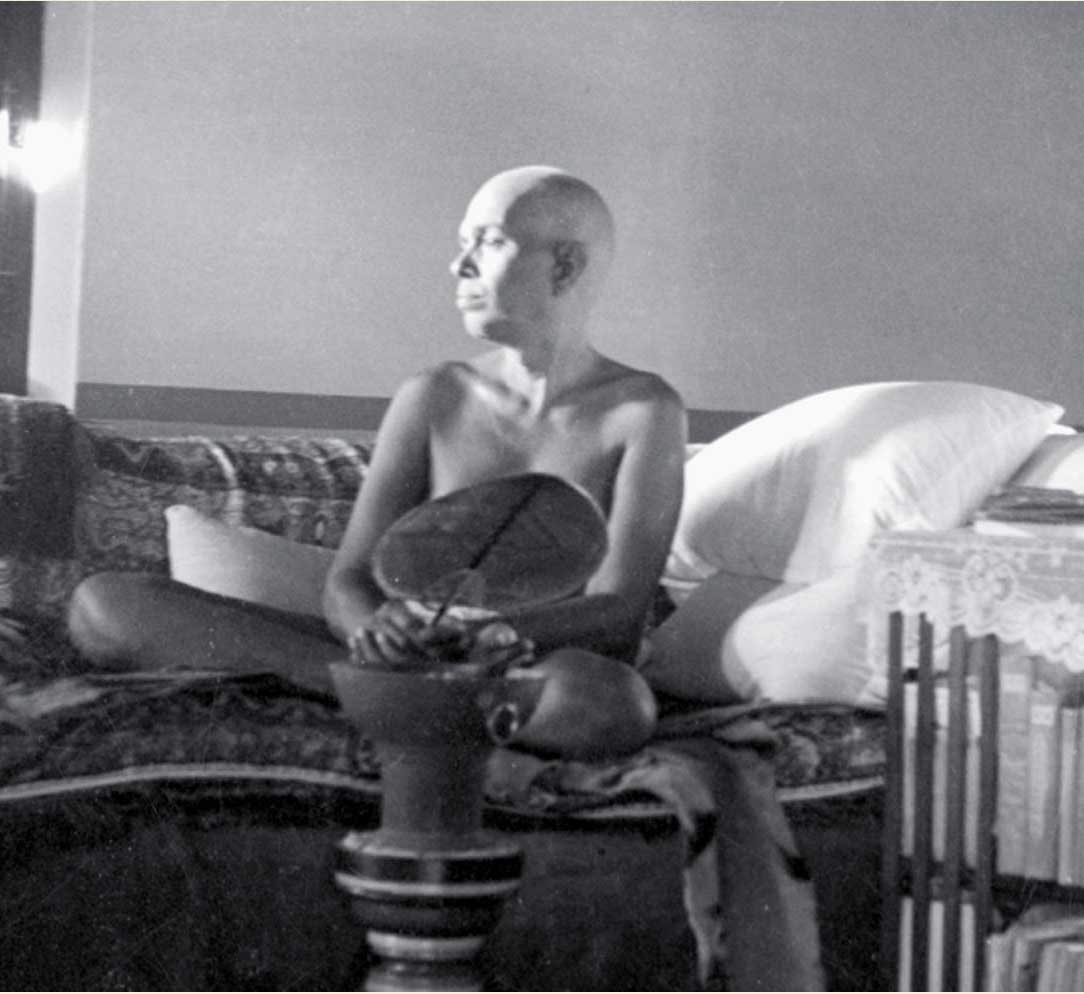
The final miracle
During the final year of Bhagavan’s life I suffered from a continuous, severe stomach pain. Some of the doctors who came to treat Bhagavan, treated me as well but none of them was able to relieve the pain. I was unable to eat anything except kanji (gruel), and even that in small quantities. If I tried to eat more, the pain in my stomach would become unbearable. In the last days of Bhagavan’s life the pain got much worse.
I finally decided to pray to Bhagavan, not for good health but for death. I slowly and painfully climbed up the steps to my flat roof and looked in Bhagavan’s direction.
‘Please Bhagavan,’ I prayed, ‘let me attain samādhi before you attain samādhi‘.
The last Prasādam
Bhagavan was buried the following day. Swami Satyananda, one of my neighbours in Palakothu, assisted with the burial. I saw him returning to Palakothu at about 8:30 that evening, his whole body covered in vibhūti (sacred ash). I naturally asked him how this happened.
‘I put Bhagavan’s body in the samādhi pit’, he said. ‘Since devotees had put a lot of vibhūti there, I inevitably got covered with it. Can you give me some water for a bath?’
Before I gave him the water, I tightly embraced him in an attempt to cover my body with this vibhūti. Since it had touched Bhagavan’s body I regarded it as his final prasādam.
I received two other forms of prasādam that evening. A girl who used to work for me collected some of the water that had been used to bathe Bhagavan’s body and brought it to me. I drank it with great pleasure. Another woman who had a reputation for being slightly mad brought me one of the garlands that had adorned Bhagavan’s dead body. I plucked a few flowers from this garland and ate them. The water and the flowers were the last contact I had with Bhagavan’s body.
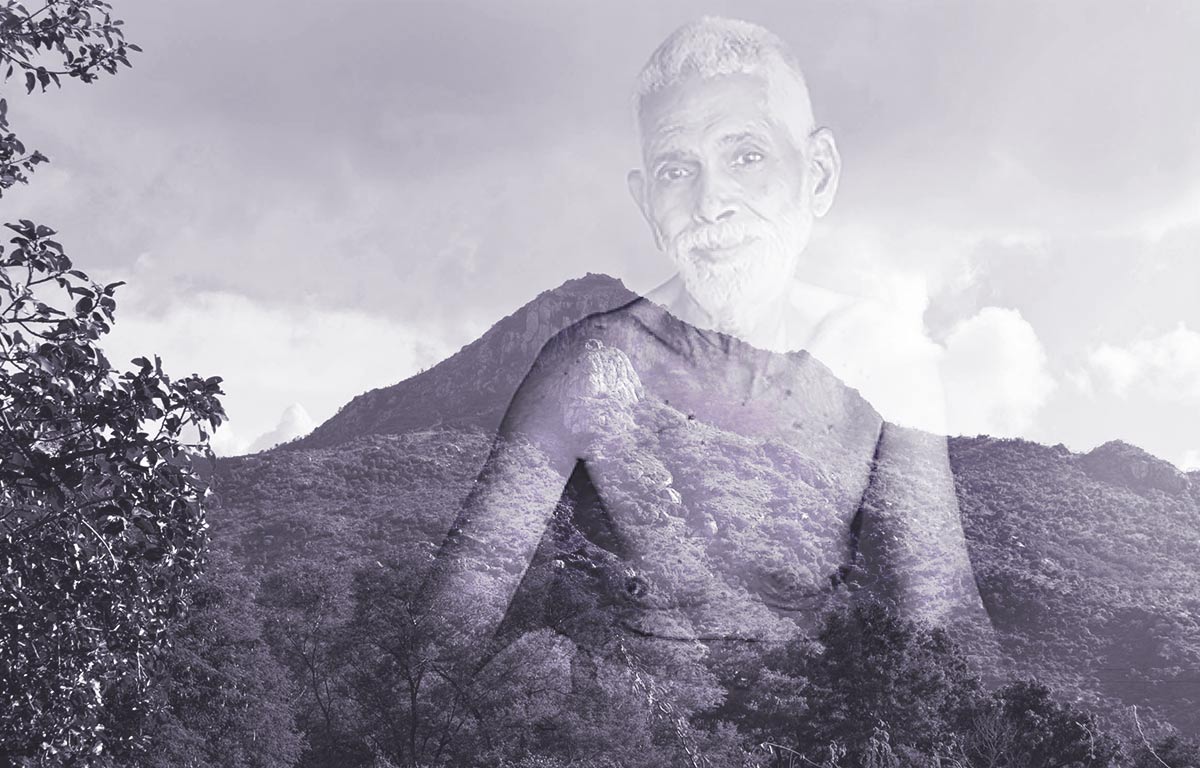
All of the above memories were narrated by Sri Annamalai Swami himself, during his Satsangs with devotees who came to visit him at the Ashram.
Related Content
13. Bhagavan Mahanirvana
Sri Annamalai Swami recollects the incidents that occurred during the final year of Bhagavan's life, and how Bhagavan's care for him continued even as he was leaving his body.
14. The Later Years
After the Mahanirvana of Bhagavan, Sri Annamalai Swami continued his Sadhana for many, many years, staying in the same place that Bhagavan had asked him to. This sadhana culminated in his attaining…
15. Mahasamadhi
Sri Annamalai Swami attained Mahāsamādhi, on November 9th, 1995 at 4:45 a.m. His caretaker Sundaram Swami recalls those final days and moments as he stood by Swami's side when it happened.
12. Physical separation
12. Physical separation
SRI ANNAMALAI SWAMI
12. Physical separation
THE STORY OF SRI ANNAMALAI SWAMI
Separation from Bhagavan's form
Sensing the maturity of the disciple, Bhagavan initiated and completed the total physical separation of Annamalai Swami from Bhagavan’s physical form. This was his final lesson to Annamalai Swami.
Bhagavan covers his face
Normally whenever I entered Bhagavan’s hall he would greet me with a few friendly words. One day (this was in the 1940s), when I entered the hall, Bhagavan covered his head and face with a dhothi and refused to look at me. He behaved in exactly the same way the next two nights. On the third day I asked him ‘Why is Bhagavan covering his face like a Muslim woman every time I come into the hall? Does this mean I should not come anymore?
Bhagavan replied, rather cryptically. ‘I am remaining still like Siva (Nan Sivane ennu irruken). Why are you talking to me?’
I took this to be an indication that Bhagavan didn’t want me to come to see him anymore. I walked out of the hall and stood under a tree. After some time Bhagavan called me back into the hall. I noticed that there was no one else there at that time.
‘Are you an atheist who has no belief in God?’ asked Bhagavan.
I was too puzzled to reply.
‘If one has no faith in God,’ Bhagavan continued, ‘one will commit a lot of sins and be miserable. But you , you are a mature devotee. When the mind has attained maturity, in that mature state if one thinks that one is separate from God, one will fall into the same state as an atheist who has no belief in God. You are a mature Sādhakā. It is not necessary for you to come here anymore. Stay in Palakothu and do your meditation there. Try to efface the notion that you are different from God.‘
I left the ashram and never went back again. Although my room is only 200 yards from the ashram gate, I have not visited the ashram once since that fateful day in the 1940s.
I have come for your Darshan
About twenty days later, as Bhagavan was walking in Palakothu, he came up to me, smiled and said, ‘I have come for your darshan.’ I was quite shocked to hear Bhagavan speak like this even though I knew he was joking. When I asked him for an explanation he said,
‘You have obeyed my words. You are living simply and humbly as I have taught. Is this not great?’
His last words to me
Though Bhagavan had asked me not to come to the ashram any more, I still thought that I had the freedom to talk when he visited Palakothu. Bhagavan disabused me of this notion shortly afterwards when I went to see him while he was walking on the hill.
He turned to me and said, ‘You are happier than I. What you had to give you have given. What I had to give I have given. Why are you still coming to me?’
Personal relationship severed
Bhagavan had once told me:
‘Do not cling to the form of the Guru, for this will perish; do not cling to his feet for his attendants will stop you. The true Bhagavan resides in your heart as your own Self. This is who I truly am.
By severing the personal link between us, Bhagavan was trying to make me aware of him as he really is. Bhagavan had frequently told me that I should not attach a name and form to the Self or regard it in any way as a personal being.
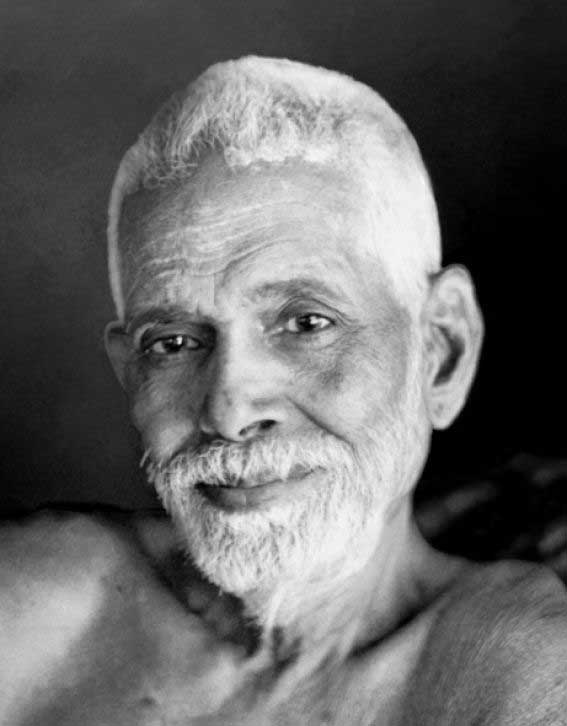
All of the above memories were narrated by Sri Annamalai Swami himself, during his Satsangs with devotees who came to visit him at the Ashram.
Related Content
12. Physical separation
By severing the personal link between us, Bhagavan was trying to make me aware of him as he really is. Bhagavan had frequently told me that I should not attach a name and form to the Self or regard it in any…
13. Bhagavan Mahanirvana
Sri Annamalai Swami recollects the incidents that occurred during the final year of Bhagavan's life, and how Bhagavan's care for him continued even as he was leaving his body.
14. The Later Years
After the Mahanirvana of Bhagavan, Sri Annamalai Swami continued his Sadhana for many, many years, staying in the same place that Bhagavan had asked him to. This sadhana culminated in his attaining…
11. Life in Palakothu
11. Life in Palakothu
SRI ANNAMALAI SWAMI
11. Life in Palakothu
THE STORY OF SRI ANNAMALAI SWAMI
The move to Palakothu
Palakothu is an area of land immediately to the west of the ashram. Several of Bhagavan’s devotees who didn’t want to stay full-time in the ashram lived and meditated there. Sri Annamalai Swami moved to Palakothu and stayed there till he finally attained Samadhi in 1995. His narration continues below.
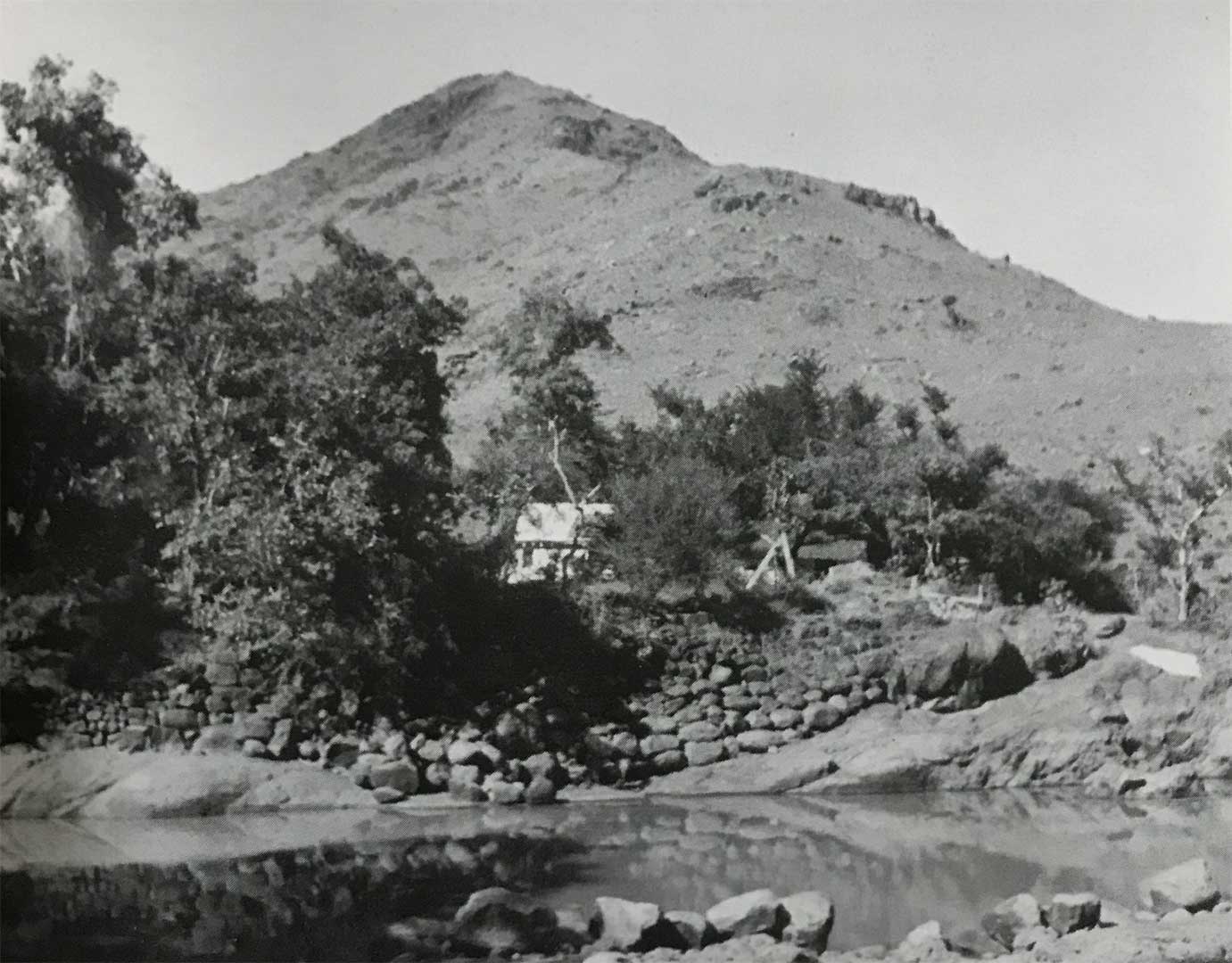
Total faith in Bhagavan
When I asked Bhagavan for permission to move to Palakothu I had no idea where I would live or how I would support myself. Since Bhagavan had clearly approved of my decision, I was confident that he would continue to look after me. My faith in him was soon justified. As I was walking towards Palakothu I met Munagala Venkataramiah, the compiler of Talks with Sri Ramana Maharshi.
‘I have left the ashram,’ I told him. ‘I am on my way to Palakothu to look for somewhere to stay. From now on I have decided to spend my time in meditation.’
Munagala Venkataramiah was astonished to hear the news and yet was happy to hear it since he was just then looking for someone to take care of his hut.
‘Just today I received a telegram from Bombay telling me to come at once. I am on my way to the station. Take the keys to my hut and stay there till I get back. You will not have to buy anything. The room already contains everything that you will possibly need. I shall probably be back in a month or so.’ Saying so, he gave me the keys and hurried off to the station.

In a few minutes, I moved my meagre possessions into the hut. But there was still the problem of food to be solved. I had no money but my mind refused to pay any attention to the problem. In my euphoric state I just assumed that Bhagavan would take care of everything. Again my faith was justified
Chadwick had been sitting with Bhagavan in the old hall earlier that morning, trying to meditate. He had not been having much success because every time he closed his eyes, a picture of my face appeared in his mind. After making several unsuccessful attempts to get rid of it, he gave up trying to meditate and left the hall. As he was walking back to his room (he told me all this later that day), he came to the conclusion that it was not good to have close friendships with other devotees because such relationships disturb the mind.
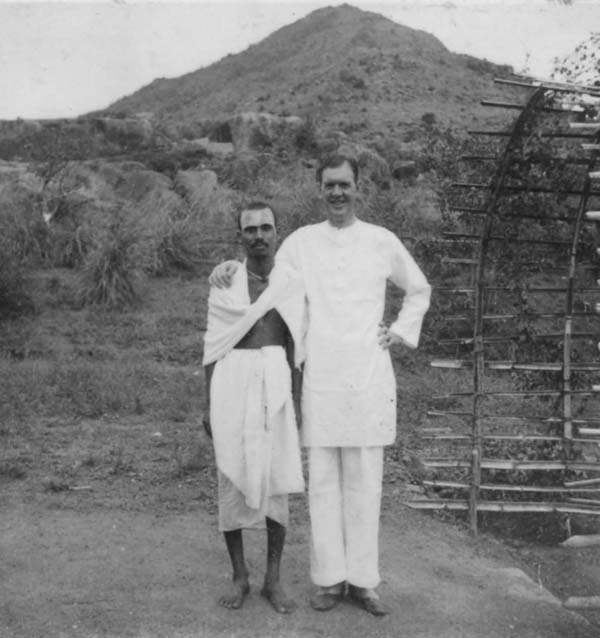
When he reached his room his servant told him, ‘Annamalai Swami left the ashram this morning and went to live in Palakothu.’ Chadwick was surprised but was also relieved. He concluded that the strong images of me that he had been seeing a few minutes ago were not disturbances to his meditation. Instead they were a message from Bhagavan that he should send me some kind of assistance. He turned to his servant and gave him the instructions:
‘Annamalai Swami is a good devotee who has served Bhagavan for many years. I somehow feel obliged to look after him. Take some food to his hut and prepare a meal for him. It is now 10 a.m. When the ashram lunch bell rings at 11:30 I want Annamalai Swami to sit down and eat a good meal. I don’t want him to be inconvenienced in any way just because he has left the ashram.’
Chadwick’s continued help
Chadwick himself came along later to see how I was getting on. ‘For several years I have watched you carry about Bhagavan’s building plans,’ he said. ‘Now that the ashram is no longer supporting you, I will take care of all your needs. I will make sure that it will not be necessary for you to go anywhere in search of food.’ Saying so, he supplied me with a stove, utensils and enough food to last for many days. In the weeks that followed he checked my food supplies every time he visited me and instructed his servant to buy new supplies and then bring them to me. This was a convenient arrangement because Bhagavan himself instructed me, shortly after I moved to Palakothu:
‘Don’t ask anyone for anything. You should live on whatever God decides to send you, so long as it is sattvic food. Keep aloof from the things that are going on around you. Stay in your own hut as much as possible and don’t waste your time visiting other people.’
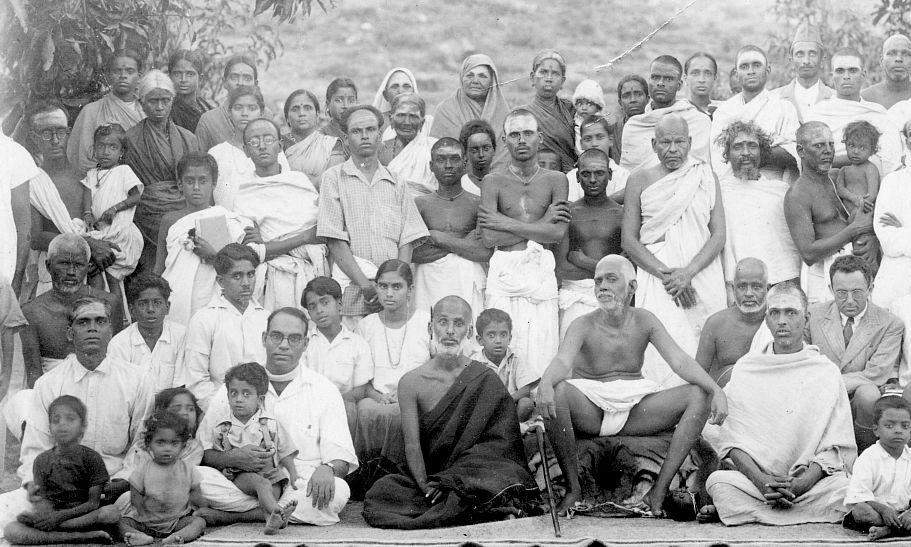
How Bhagavan gave me a home
In those days I was quite friendly with Vaikunta Vyas, a man who became one of Bhagavan’s assistants in the 1940s. He often came to visit me with a large group of devotees. Whenever they came they would all sleep in my hut. He said to me, ‘This place is very small. We cause you a lot of trouble when we come here. If you erect some kind of shed or veranda we can all stay there on future visits without disturbing you. We will pay for everything.’
All the devotees donated whatever they could. I also contributed Rs. 50. I sent word to a man named Arumugam, a mason and asked him to assist me in erecting the hut. He came immediately. While we were looking at the site, Bhagavan who was passing nearby, abruptly changed direction and came over to meet us.
‘Are you planning to build a house for Swami?’ Bhagavan asked Arumugam.
That was not our plan but Arumugam suddenly found himself saying, ‘Yes I will construct one’.
‘What materials are you planning to use? Mud or brick? Tiles or terrace?’
‘I think I will build the walls of brick, and put a terrace roof on top of them’ said Arumugam.
I was very surprised to hear this. Before Bhagavan arrived we were discussing a coconut leaf shelter. Now, in front of Bhagavan, Arumugam was committing himself (and possibly me) to building an expensive house.
Bhagavan seemed to approve of the plan.
‘Let us see gradually how it happens,’ he said. Then, having concluded his business with us, he walked away.
I asked Arumugam why he made all these expensive promises when he knew we were planning a small hut.
‘I don’t know,’ replied Arumugam. ‘The words automatically came to me when Bhagavan asked the questions. But now I have given my word to Bhagavan and I am obliged to keep it. Bhagavan made me say these words, so Bhagavan must want this building to happen. Don’t worry about the money. Even if I have to sell my house to pay for yours, I will do it.’
Funds came in magically
Within a day I somehow received an unexpected donation of Rs. 100. As with all of Bhagavan’s projects, the money just appeared whenever it was necessary.
As I was hearing this, I knew our money problem would be solved somehow. If Bhagavan took an interest in a devotee’s problems, some divine force would automatically bring about a solution. Bhagavan himself did nothing. He never claimed that he did anything.
The next day I received a donation of Rs. 200 from Ramaswamy Mudaliar, who also volunteered to help me with the construction. We were ready to start work on the roof when Bhagavan came and offered a suggestion: ‘It will be good if you use palmyra timber for the beams. That was the wood which was used in our house (Bhagavan’s house) in Tiruchuli (the town where Bhagavan was born).
We took the hint and bought some timber. Bhagavan enquired in detail about our plans: The exact dimensions of the beams, their thickness etc. A few weeks later he asked if I had remembered to install a grinding stone. I mention this merely to illustrate the concern that Bhagavan showed at all stages of the construction.
Thus the house was completed without any further problems. Bhagavan clearly wanted me to stay in this place. I moved into my new house. This was my last change of address. I have now lived in this room for more than fifty years.

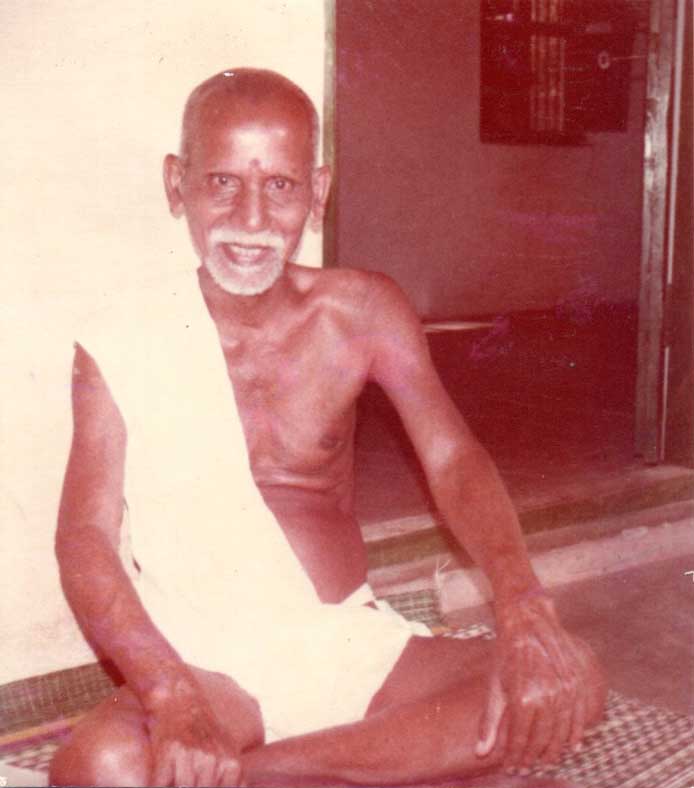
The famous Thirukkural photo
This photo of Sri Bhagavan was worshiped by Sri Annamalai Swami in his room in Palakothu from 1942. The incident connected with this great photo is explained below. After the living room of Sri Annamalai Swami was constructed, on the first day Swami decided to place a photo of Sri Bhagavan in the room for worship.
He obtained a photo of Sri Bhagavan with Arunachala hill above him. Then he took a small photo of Arunachala hill and pasted the hill at the bottom of the picture, exactly at the heart of Sri Bhagavan. Swami gave a title to this photo as ‘The Lord who swallowed the Hill (Arunachala)’ and wrote it on the photo: Malayai Vizungiya Mahadevan. He then took this photo to Bhagavan to get his blessings.
Bhagavan looked at the photo and said, ‘If you had given this photo of Arunachala hill to me, I would have done a better job of pasting it.’ He continued, ‘Look, Annamalai Swami is calling me “The Lord who swallowed the Hill”.’ He then pointed to a page in a magazine that he had open. In there was a verse about another saint, singing how he had swallowed the hill Arunachala. (In the video below, Sri Annamalai Swami narrates this verse while recalling this incident.)
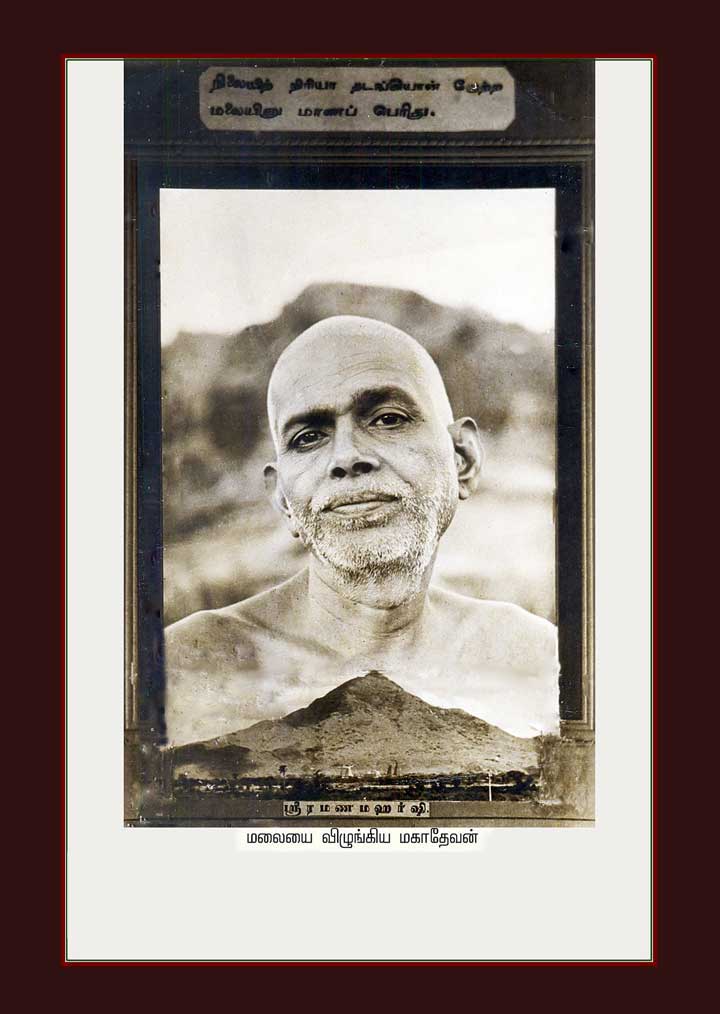
Bhagavan then wrote a two-line Thirukkural verse in his own handwriting on a small piece of paper. He then pasted this 2 line-verse at the top of this photo and gave it back to Annamalai Swami with his blessings.
The meaning of the verse is below. (Thirukkural was composed by the great saint Thiruvalluvar).
The glory of a Brahma Jnani who is firmly established in the Self without wavering, is higher than a great mountain.
This photograph adorned the walls of Sri Annamalai Swami’s room till his Samadhi.
Below is a video of Sri Annamalai Swami narrating this incident.

Spiritual evolution
After a few months in Palakothu I noticed that my mind was beginning to get quieter and quieter. During my working days my mind had been constantly occupied with thoughts about building matters. At the end of the day’s work, the mind would still continue its incessant activities. I found it very hard to meditate under the circumstances. Bhagavan told me, ‘You are not the body, you are not the mind. you are the pure consciousness, the Self. You are all-pervasive. Be aware of this at all times, even while you are working.’ I tried very hard to put this into practice while I was working, but I cannot say that I had much success.
When I moved to Palakothu I found it far easier to practice Bhagavan’s teachings. After a few months of meditation in Palakothu my mind became relatively quiet and still. A wonderful coolness pervaded my body. In the course of time, after many years of practice, both of these conditions became permanent.
Bhagavan’s continued care
Bhagavan often visited me when he took his daily walk in Palakothu. Once he dropped in while I was cooking my food and asked me what I was preparing.
When I told him, ‘Only rice and sambar,’ he was very pleased. ‘Very good!’ he exclaimed. ‘The simple life is the best.’
On another of his visits he told me that I should make a chutney out of a green leaf called Tiruvakshi because it was good for the body. I followed his advice and prepared it regularly.
Although I was no longer permitted to eat in the ashram except on special occasions, Bhagavan sometimes still gave me food from the dining room. I was once walking through the back gate of the ashram at about 8 p.m. when I saw Bhagavan and Subramaniam near the dispensary. Bhagavan asked Subramaniam to get some food for me.
‘When Annamalai Swami was here he used to enjoy eating aviyal (a South Indian delicacy made of coconut, curd and vegetables). Today a lot of aviyal has been prepared. Go to the kitchen and bring some on a plate. We can serve it to him here.’
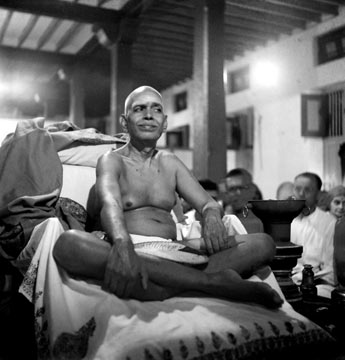
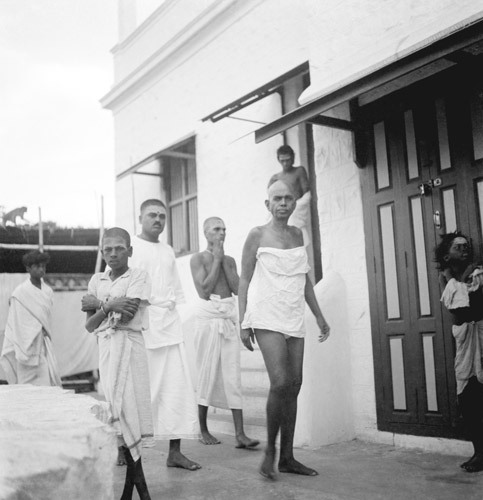
A new and stringent diet
In the fourth year of my stay at Palakothu Bhagavan advised me to restrict my diet.
‘Each day you should eat only one coconut, a handful of peanuts, one mango and a small lump of jaggery. If fresh mangoes are not available you can eat dried ones.’
Bhagavan told me that that this diet would purify the body and help to keep the mind stabilised in the Self. He also warned me, ‘In the beginning you will get diarrhoea but don’t worry, the problem will go away after a few days’. At the same time he told me that I should keep mauna (silence) and spend as much time as possible in meditation.
I lived like this for about a year. Then, suddenly and unexpectedly Bhagavan turned towards me in the hall and said ‘You need not have these food restrictions any more. you can take normal food and you can also start talking again.’
I don’t know why he singled me out for this special sādhana, nor do I know why he later asked me to stop. It was all very unusual.
Coming out of retirement
During my early years in Palakothu I regularly came to see Bhagavan in the hall, usually once in the morning and once in the evening. It was the year 1942, fourteen years after I had landed in Ramanasramam and several years into my retired life at Palakothu.
One day, Bhagavan came to my room and said ‘You are not showing your face much any more. Follow me.’ As we were entering the ashram through the back gate Bhagavan said, ‘They are planning to build a small hospital. You should build a bigger hospital here.’
He pointed to the site and indicated where the entrance should be. That was all.
When I heard these words I knew that my quiet, comfortable way of life was about to be shattered by another major battle with Chinnaswami. I first had to cut down a few trees. Immediately I engaged a man to help me cut them down. Because it was afternoon and most people were sleeping, we managed to cut them down without being interrupted or questioned.
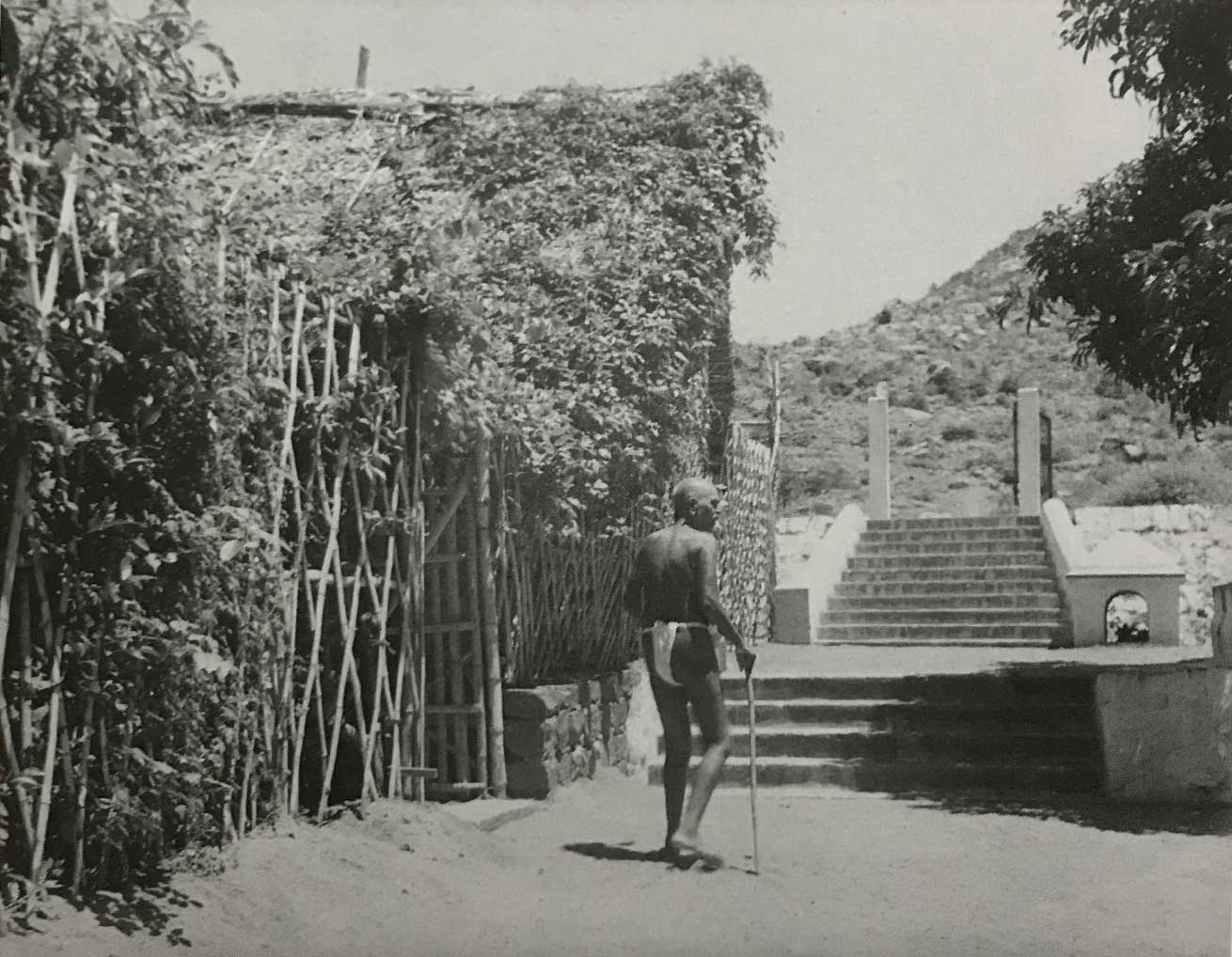
Chinnaswami came along and asked me what was going on. Since I was bound by Bhagavan’s instructions I replied as ingenuously as I could, ‘I heard that you were going to build a small hospital. I thought that a bigger one was needed so I came along to construct it for you.’
It didn’t occur to Chinnaswami that I would not begin a building like this unless Bhagavan had personally asked me to do so. Chinnaswami shouted at me. ‘You are not an ashram worker anymore. What authority do you have? Why are you troubling us? The plans for the hospital are already drawn. Why are you interfering?’
Chinnaswami’s shouting and the cutting down of trees soon attracted crowd of 20-30 people. Many of them wanted to know why I was cutting them down. I explained again. ‘I am going to construct a big hospital here. These trees had to be cut down to make room for it.’
The shouting and questioning continued and the whole affair was turning ugly. I walked away and stood in a corner, pretending that I had accepted defeat. At that moment Bhagavan chose to make an appearance. He walked up to me, put his head next to mine and whispered, ‘What are these people saying?’
I whispered back, ‘They are saying, “What authority do you have to come here, and why are you cutting down these trees?”‘
Bhagavan sighed and said, ‘Avanga ishtam. Avanga ishtam. Avanga ishtam. (‘Let their desire be done’). You can go back to Palakothu.’
This was an unexpected bonus for the ashram. The old plan was dropped and Chinnaswami personally asked me to supervise the construction of the new one. Bhagavan’s ways and methods are truly mysterious.
Name over the entrance
The last job was putting the name over the entrance. Once again it was Bhagavan who wrote the letters Vaidyasālāi on paper and asked me to make a copy of them on the wall. I erected some scaffolding and sat down to do the work. Chinnaswami came at that time and asked me to leave this job to supervise some other construction work. I declined to go since Bhagavan had instructed me to do this particular job.
‘Let it wait for some time,’ I said. ‘My destiny as an ashram worker and the destiny of the hospital are linked together. When I have finished this job I will go back to Palakothu and stay there.’
Bhagavan watched all this from a distance without making any comment. This Vaidyasālāi sign over the hospital was the last construction work I ever did for the ashram.
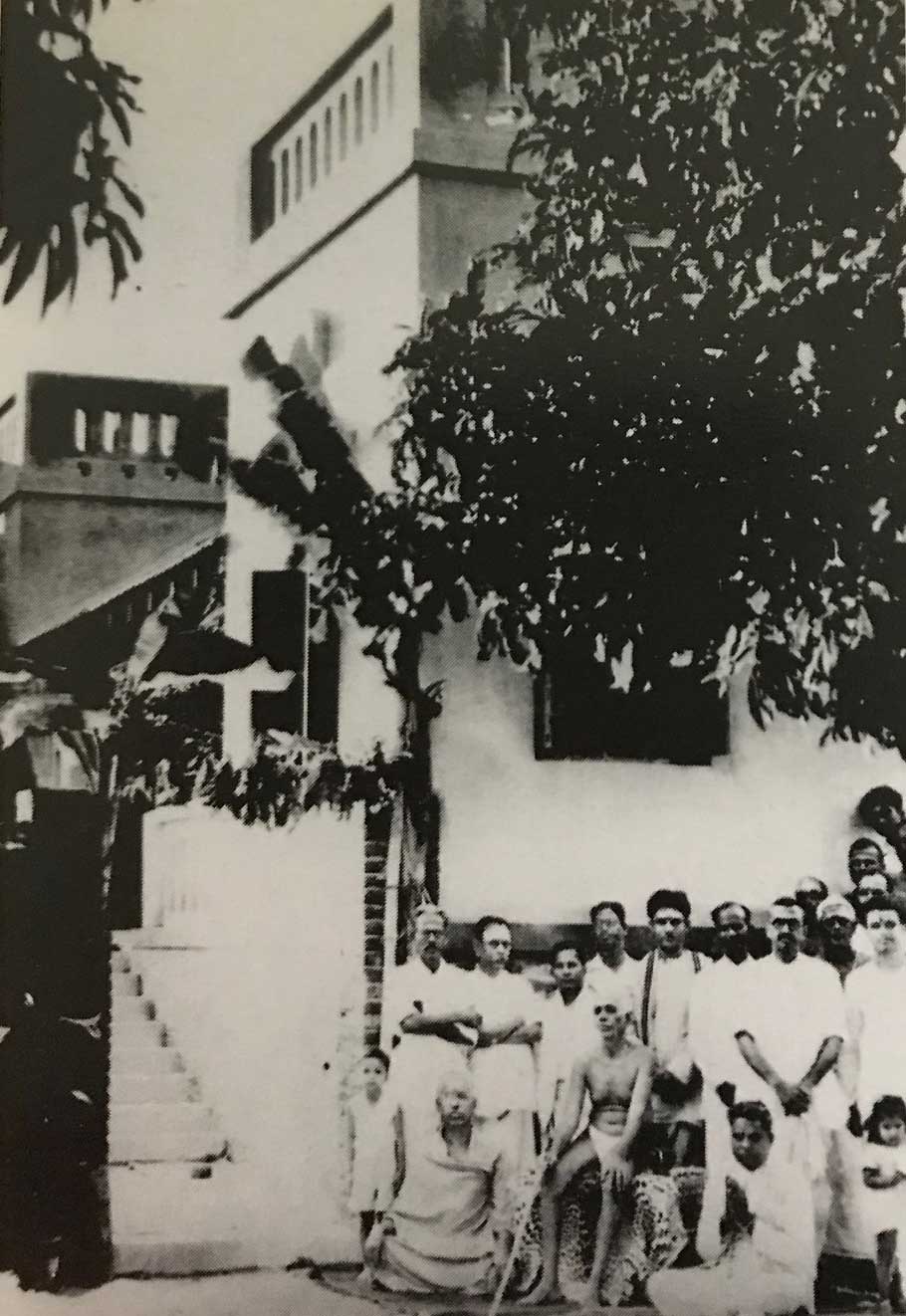
My ashram work ends
A few months after the hospital had been completed Bhagavan confirmed that my time as an ashram worker had come to an end.
I was sitting in the hall during the evening darshan when Bhagavan turned to me and said, ‘You are an independent person. Your karmas are finished. From now on, nobody, whether he be a king, a devā, an asurā or a human being, will order you around and tell you what to do.’
I had a great feeling of strength and peace when Bhagavan said these words. I was also immensely relieved to know that I would not have to come back to the ashram to work again.
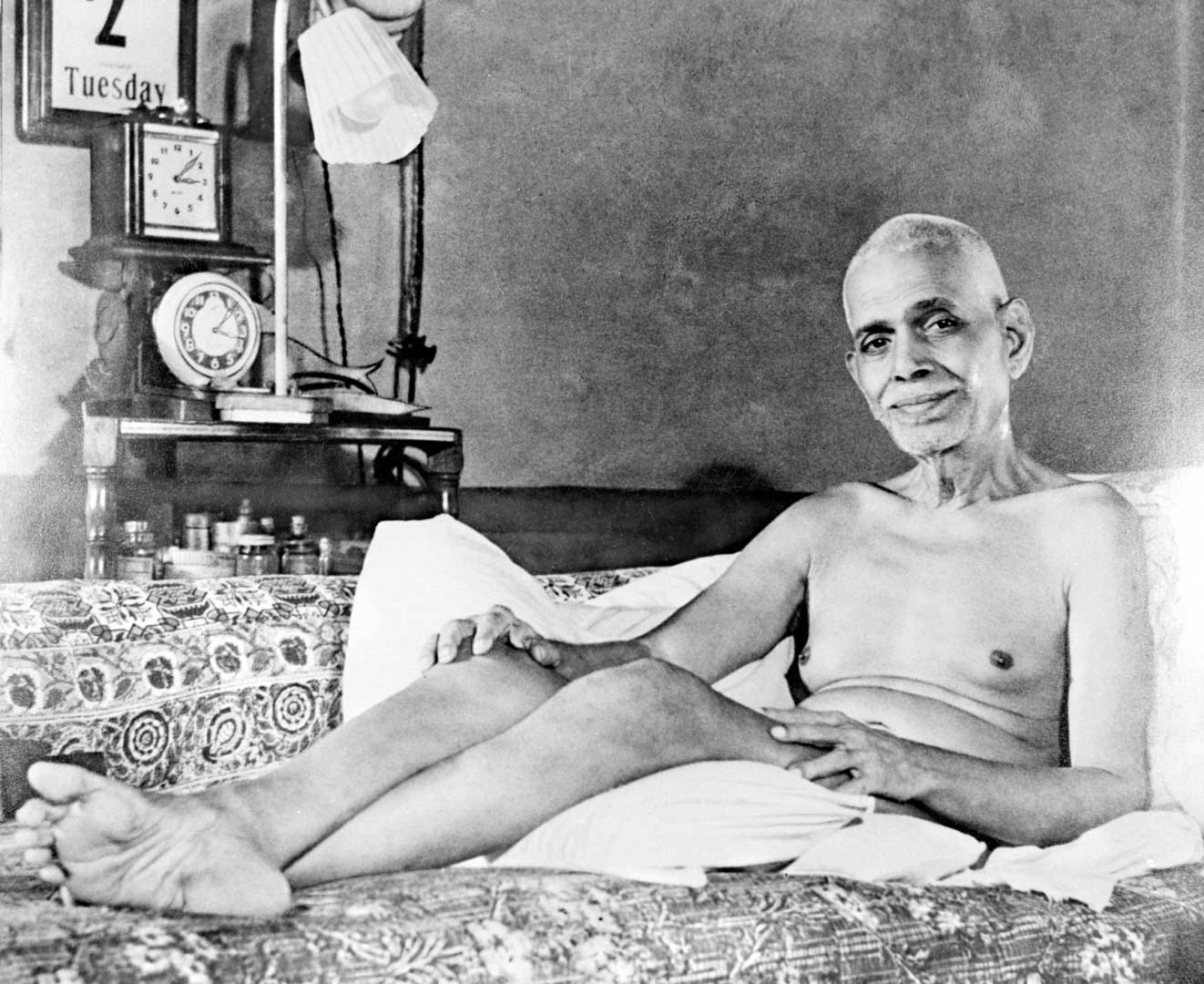
Bhagavan’s grace rescued me again
After I had been in Palakothu for about four years, due to various reasons people who were supporting my meagre expenses were not allowed to do so. I began to worry. I decided that instead of depending on anyone else, I will go for a bhiksha (beg for my food) in town. Since this would bring about a major change in my lifestyle I knew I had to first get Bhagavan’s permission. He had previously told me not to beg for anything. One evening when I was sitting in the hall, I explained the situation to Bhagavan and sought his permission. Bhagavan remained silent for about fifteen minutes. At the end of that period I stood up to leave. I knew that Bhagavan’s silence indicated that he was not going to give me permission. Unexpectedly Bhagavan told me to sit down again.
‘You have sat for so long, why are you standing now?’
A few minutes later, Arumugam came into the hall. He had left a bag of rice outside the door. When I asked him, ‘What is this rice for?’
He replied, ‘I brought it for you. I suddenly felt an urge to give you something.’
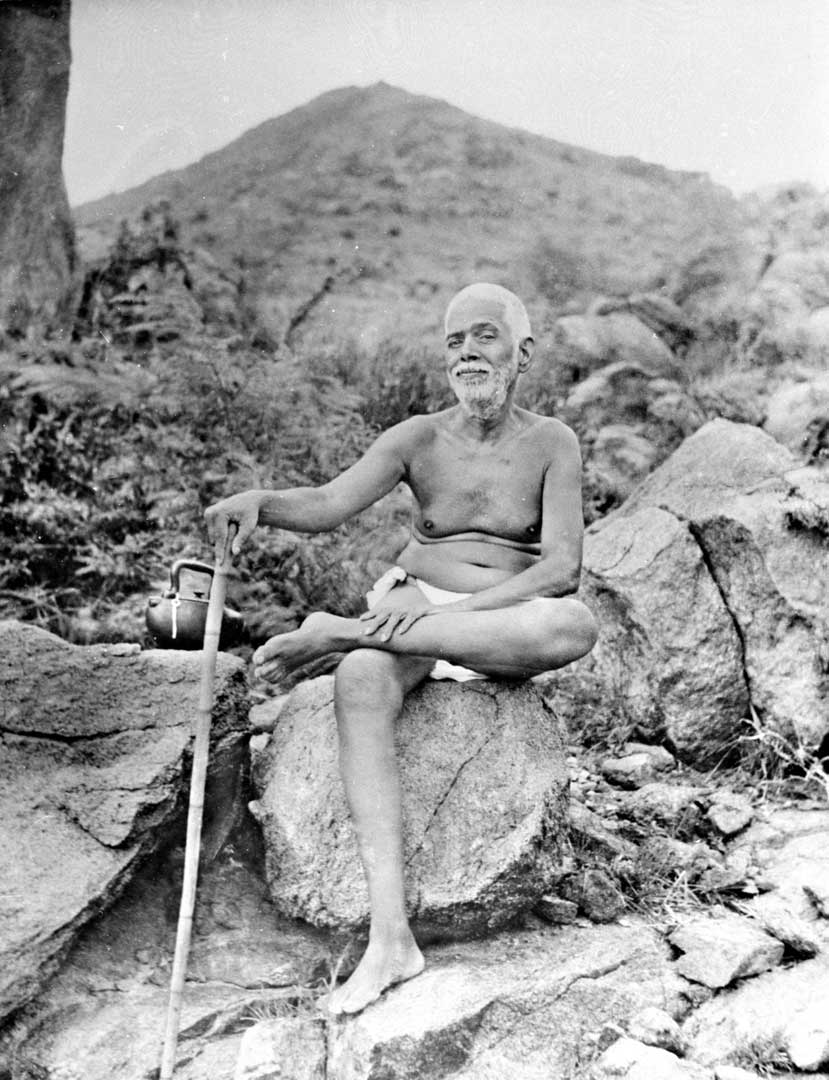
Strange incident on the hill
After some time, my troubles with lack of support continued. The support that Chadwick had generously given me for so many years had come to an end. But if I had had more faith in Bhagavan, I would have known that Bhagavan would never abandon me. As it was, my fears were only put to rest by a strange incident which happened on the hill.
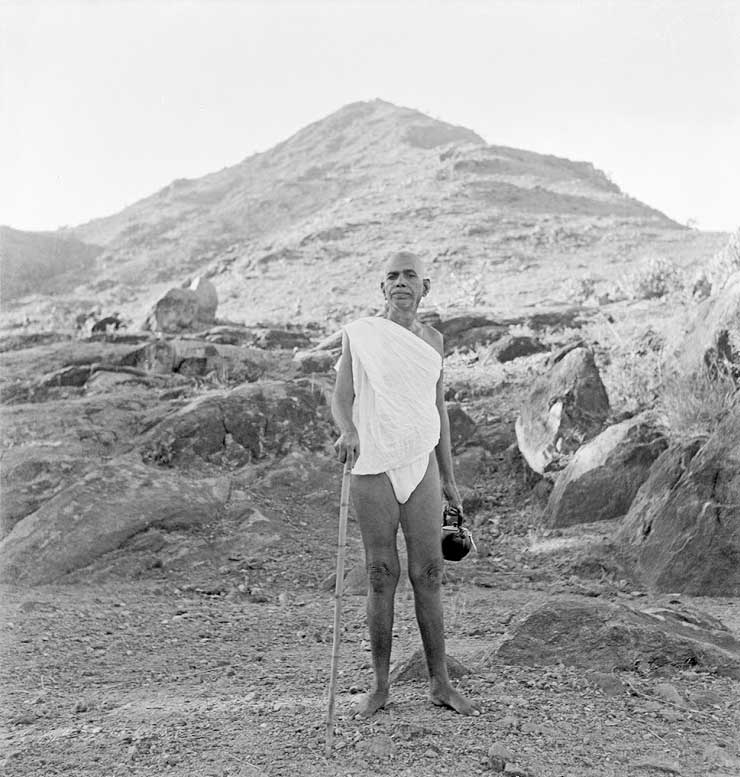
Soon, I received three rupees in what can only be called miraculous circumstances. One of Bhagavan’s devotees Jayarama Mudaliar, lived in a village called Thellar, near Vandavasi (thirty miles north-east of Tiruvannamalai). For some days he had been feeling an urge to send some money to one of the sādhus at Sri Ramanasramam. It was a vague urge for he had no one particular in mind.
About a week later a group of devotees came from that same village and announced that they wanted to look after all my needs. For many years afterwards they gave me enough money to support myself.
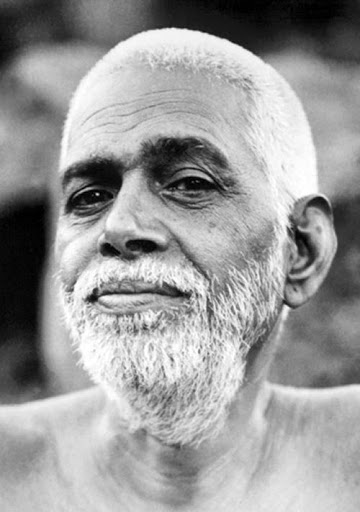
Another privilege I enjoyed
I used to go to see Bhagavan every evening, usually between 9 and 10 p.m. I would listen to his teachings, absorb what I could of his grace-filled silence. I had one little privilege during this time: Bhagavan would often ask me to take the thorns out of the soles of his feet. I was given this job by Bhagavan because he felt that I could do a better job than the regular attendants. Bhagavan’s feet frequently picked up thorns because he never bothered to wear sandals.
While I was taking out these thorns Bhagavan would often ask in a concerned way, ‘Is your eyesight good enough to find the thorns? Can you see what you are doing?’
Once he asked me, ‘Are you taking out the new thorns or the old thorns?’
This was a difficult question to answer. Bhagavan would frequently have thorns in his feet for days or even weeks without being aware of them.
All of the above memories were narrated by Sri Annamalai Swami himself, during his Satsangs with devotees who came to visit him at the Ashram.
Related Content
11. Life in Palakothu
Palakothu is an area of land immediately to the west of the ashram. Several of Bhagavn's devotees who didn't want to stay full-time in the ashram lived and meditated there. Sri Annamalai Swami moved to…
12. Physical separation
By severing the personal link between us, Bhagavan was trying to make me aware of him as he really is. Bhagavan had frequently told me that I should not attach a name and form to the Self or regard it in any…
13. Bhagavan Mahanirvana
Sri Annamalai Swami recollects the incidents that occurred during the final year of Bhagavan's life, and how Bhagavan's care for him continued even as he was leaving his body.
10. Samadhi Experience
10. Samadhi Experience
SRI ANNAMALAI SWAMI
10. Samadhi Experience
THE STORY OF SRI ANNAMALAI SWAMI
A defining moment in Sri Annamalai Swami's life
This incident happened in 1938, ten years after Sri Annamalai Swami came to Ramansramam to serve Bhagavan Ramana Maharshi. It had such a profound impact that it ended his construction work and prompted him to immediately move to nearby Palakothu to pursue his Sādhana exclusively.
A sign that something was to change
While I didn’t realise it at that time, my days as an ashram worker were coming to a close. In retrospect I can remember this incident which indicated that Bhagavan knew that my time in the ashram was coming to an end. I was doing some digging with a crowbar when Bhagavan came and asked me, ‘Did you decide to do this work yourself or did Chinnaswami ask you to do it?’
I told him that Chinnaswami had asked me to do it. Bhagavan was not very pleased.
‘So, he has given you work. So, he has given you work. Why is he giving you work like this?’
A little later Yogi Ramaiah remarked to Bhagavan, ‘Annamalai Swami is working very hard. His body has become very weak. You should give him some rest.’
Bhagavan agreed with him. ‘Yes, we have to give him some rest. We have to give freedom to him.’
The happening
A few days later I went to Bhagavan’s bathroom to help him with his morning bath. Madhava Swami asked a question: ‘Bhagavan, the people who take ganjā lēhiyam (an ayurvedic preparation whose principal ingredient is cannabis) experience some kind of ānanda (bliss). What is the nature of this ānandā? Is it the same ānandā that the scriptures speak of?’
‘Eating this ganjā is a very bad habit,’ replied Bhagavan. Then, laughing loudly, he came over to me, hugged me and called out, Ānandā!, Ānandā! This is how these ganjā-taking people behave!’
It was not a brief hug. Madhava Swami told me later that he held me tightly for about two minutes. After the first few seconds I completely lost awareness of my body and the world. Initially, there was a feeling of happiness and bliss, but this soon gave way to a state in which there were no feelings and no experiences. I did not lose consciousness. I just ceased to be aware of anything that was going on around me. I remained in this state for about fifteen minutes.
When I recovered my usual consciousness I was standing alone in the bathroom. Madhava Swami and Bhagavan had long since departed for breakfast. I had not seen them open the door and leave, nor had I heard the breakfast bell.
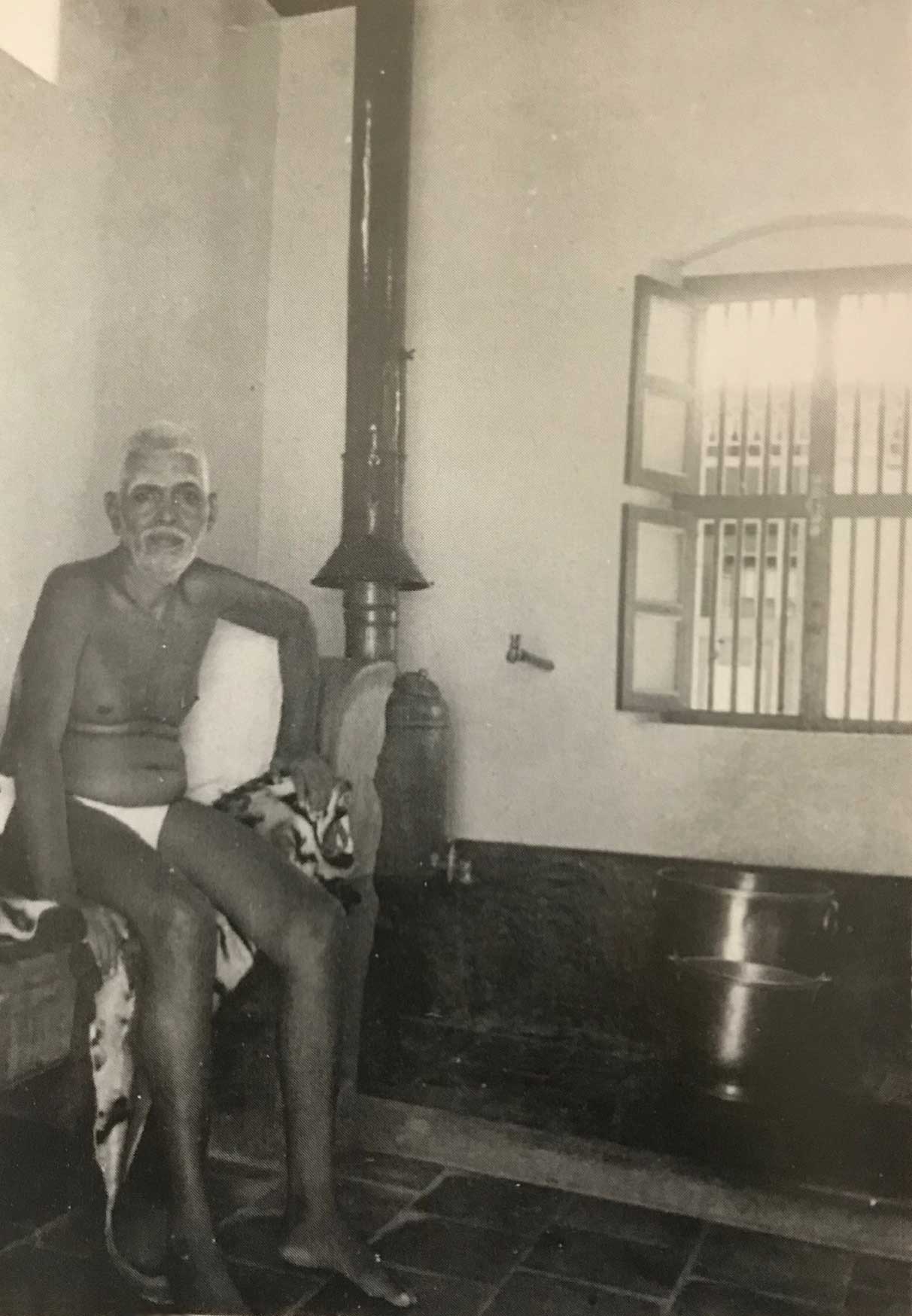
Sri Annamalai Swami narrates his Samadhi experience when Bhagavan hugged him. English translation starts in a few seconds. This happened around 1938, 10 years after Annamalai Swami had come to Bhagavan.
It completely changed my life
This experience completely changed my life. As soon as I recovered normal consciousness I knew that my working life at Sri Ramanasramam had come to an end. I knew that henceforth I would be living outside the ashram and spending most of my time in meditation. There was a rule that only those who worked for the ashram could live there full-time. Those who wanted to spend their time in meditation had to live somewhere else. I thus knew that I would have to leave the ashram and fend for myself, but the thought of losing my regular meals and my room never troubled me.
I made a much belated appearance in the dining room to eat my last breakfast. As soon as I had finished eating I went up onto the hill to look for Bhagavan. I found him sitting on a big rock.
‘I have decided to leave the ashram,’ I said. ‘I want to go to Palakothu to live alone and meditate.’
‘Ah! Very good! Very good! Very good!’ exclaimed Bhagavan.
The decision clearly had his approval. How could it be otherwise since it was Bhagavan himself who gave me the experience which precipitated the decision?
After getting Bhagavan’s permission I packed my possessions and locked my room. I also locked all the other places that were in my charge, gave the keys to Chinnaswami and told him my decision. He was quite naturally very surprised. ‘Why are you leaving?’ he asked. ‘You have constructed all these buildings. You have done so much here. How can you go after doing all this work? Where will you sleep? How will you eat? You will have many troubles because you have no way of supporting yourself. Don’t go, stay here.’

I left for Palakothu
All of the above memories were narrated by Sri Annamalai Swami himself, during his Satsangs with devotees who came to visit him at the Ashram.
Related Content
10. Samadhi Experience
This incident happened in 1938, ten years after Sri Annamalai Swami came to Ramansramam to serve Bhagavan Ramana Maharshi. It had such a profound impact that it ended his construction work and prompted him to…
11. Life in Palakothu
Palakothu is an area of land immediately to the west of the ashram. Several of Bhagavn's devotees who didn't want to stay full-time in the ashram lived and meditated there. Sri Annamalai Swami moved to…
12. Physical separation
By severing the personal link between us, Bhagavan was trying to make me aware of him as he really is. Bhagavan had frequently told me that I should not attach a name and form to the Self or regard it in any…
9. More Jobs, Lessons
9. More Jobs, Lessons
SRI ANNAMALAI SWAMI
9. More Jobs, Lessons
THE STORY OF SRI ANNAMALAI SWAMI
Bhagavan continued to give me construction work, and invaluable lessons with that
Construction work kept Sri Annamalai Swami continuously busy for nearly 10 years. Bhagavan had him build the new dining room, kitchen, Mother’s temple and gave him several miscellaneous jobs. The earnest and obedient disciple carried out his Master’s instructions to the letter, never questioning, never using his own judgement. This brought him very close to Bhagavan, and blessed him in ways that many would be envious of. Swami’s narration below confirms this.
Baesh!
Until 1938 I was engaged more or less full-time on building work. The biggest job I undertook during this period was supervising the construction of the new dining room and kitchen. Bhagavan took a keen interest in the building, guiding me at all stages of the work. Daily evening he would tell me what work should be done the following day.
One evening, due to a heavy storm I could not get the plans from Bhagavan. The next day morning I went and asked him, ‘What is the plan for today?’
Bhagavan replied, ‘Swami is within you. Go and do the work.’
This was something of a shock for me because I was accustomed to depending on Bhagavan for advice. But before I went to the site and issued my instructions I uttered a silent prayer to Bhagavan, asking him to guide me in the work. .
Bhagavan’s refusal to help me indicated that he was now satisfied that I had learned enough to manage the construction on my own.

Removing Sandals
Since I was out in the sun all the time, I had an umbrella to protect me and dark glasses to protect my eyes from the lime dust. When Bhagavan came to see what I was doing, I removed my sandals and lowered my umbrella as a mark of respect. Bhagavan immediately told me off.
‘Why do you do these things when you see me? Why are you giving me special attention like this? These things are to protect you from the sun and the dust. I will only come to see you in future if you promise to keep your umbrella up and your sandals on.’
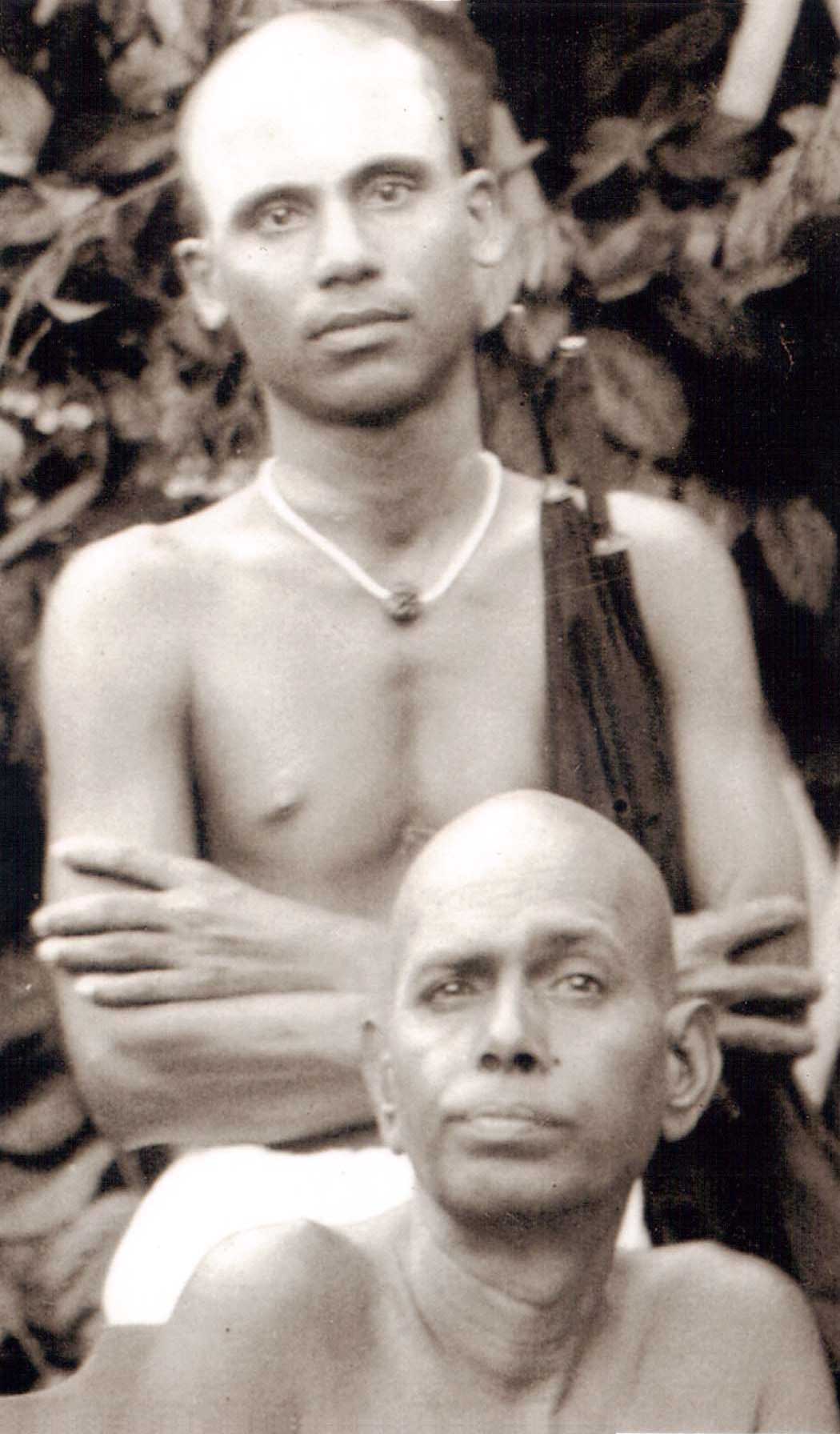
Egoistic thoughts disappear
One day as I was supervising work on the dining room I became aware that my ego was getting very strong. I could feel an unwanted sense of pride and achievement growing within me. ‘I am responsible for all this! I alone am supervising this great work!’ While I was afflicted with these strong thoughts Bhagavan came to see me.
He confirmed that something unusual had happened by quoting a well-known Tamil proverb: ‘The bad spirits will leave when they see the priest.’
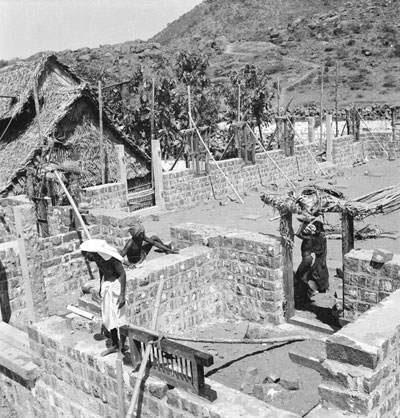
Sexual desires
I used to hire both men and women to work on the dining room. Some of the women were quite attractive and I must confess that I was occasionally troubled by sexual desires. I had talked to Bhagavan about this problem quite early in my career in the ashram.
I had told him, ‘I don’t want Moksha (liberation). I just want that the desire for women should not enter my mind.’
On that occasion Bhagavan laughed and said , ‘All the mahatamas are striving only for this’.
His answer reassured me that I was not alone in suffering from this problem but it gave no clue as to how I might overcome it. I formed a theory that if I didn’t have to watch the women work all day it would be a lot easier to avoid sexual thoughts. In those days we used to pay women much less than men. It occurred to me that if I replaced all the women workers with a few men workers, for the price of a few annas I would be able to purchase a little peace of mind. I therefore told the women that there would be no more work from them in the future.
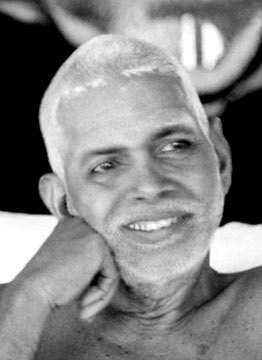
That night Bhagavan, as usual, enquired what work I planned to do the following day.
I told him, ‘Tomorrow I intend to put a lot of sand inside the building to bring the ground up to the level of the dining room floor.’
Bhagavan then enquired, ‘How many men and how many women have you engaged?’
I told Bhagavan that I had not hired any women and I explained my reasons to him. Bhagavan was not at all impressed with my explanation. He saw no reason why the women should suffer merely because I was unable to control my mind.
‘Why did you say that women workers were not longer needed?’ he asked. ‘You engage women workers. You engage women workers. You engage women workers.’
I knew that when Bhagavan wanted to stress the importance of a particular idea or phrase he would repeat it three times. I followed his instructions and rehired all the women.
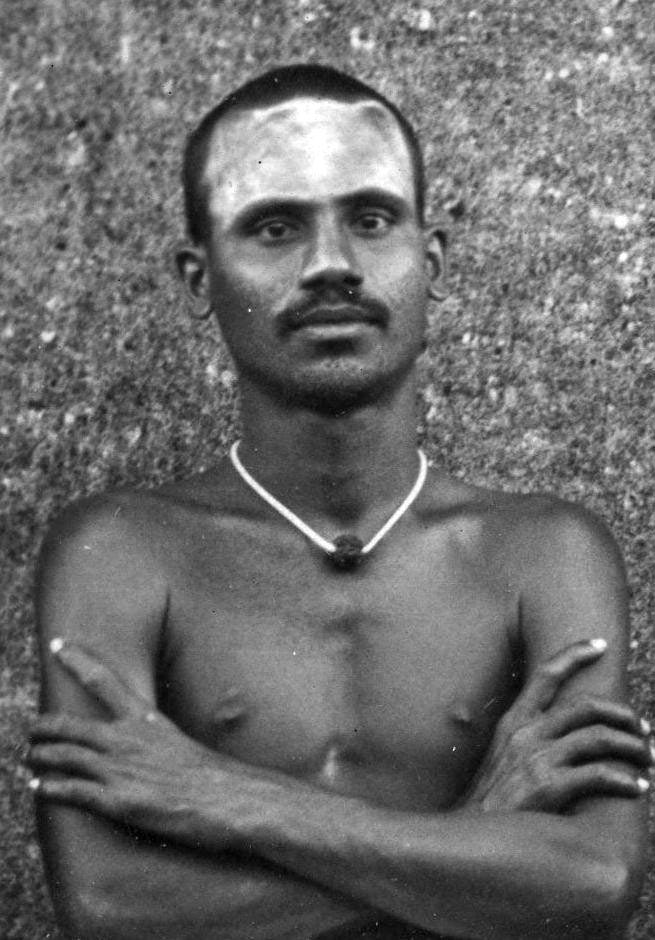
Another occasion
I can remember another occasion when my sexual thoughts almost got the better of me. It was about 1 p.m. in the middle of summer. I was sitting in front of the storeroom when I saw a very beautiful woman come for Bhagavan’s darshan. I was so captivated by her appearance and felt a strong sexual desire arise within me.
At that moment Bhagavan suddenly appeared and saw what state my mind was in. He called me outside and asked me to stand in the sun on a big rock which was near the storeroom. Because I had no sandals on, the heat from the rock caused a great pain in my feet. Bhagavan completely ignored my discomfort. For several minutes he calmly chatted about various building matters. The pain in my burning feet became almost unbearable but I didn’t dare to move because Bhagavan had specifically told me to stand on that rock. After some time the thought occurred to me that the pain I was experiencing had completely displaced the desire for this woman.
As soon as this thought entered my mind Bhagavan abruptly terminated our conversation and walked away. I happily took my burning feet back into the shade. Bhagavan’s treatment proved to be a complete cure. When the pain subsided I found that I had no further interest in the woman.
Dealing with Anger
I often had to get angry with the workers in order to get the work done. I discovered quite early in my career that if I didn’t shout a lot, the quantity and quality of the work deteriorated. On one occasion I went too far and actually hit one of the workers because he had deliberately disobeyed my instructions, which were given to me exactly by Bhagavan. A stone had to be cut exactly and Bhagavan had given me very precise orders, since it had to fit exactly right in a part of the dining room wall.
After giving the stone cutter precise instructions as to how to cut the stone so that it won’t break, I stepped aside to supervise some other work going on. The stone cutter ignored all my instructions and broke the stone, trying to cut it a different way.
When I returned and saw what he had done, I got so angry that I gave him a blow on the back. This happened at 9 a.m. For the rest of the day I felt very guilty about losing my temper in this way.
That evening, when I gave my daily report, I confessed to Bhagavan and apologised for my action.
Bhagavan asked me, ‘When did this anger come and when did you hit him?’
I told him that the incident had happened around 9 a.m that morning.
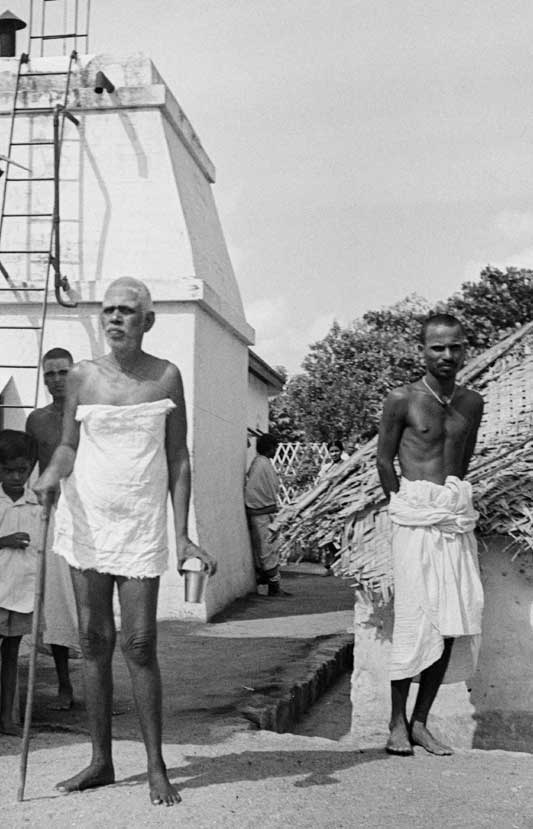
Bhagavan taught me
‘The anger that came at 9 a.m. has already gone,’ said Bhagavan. ‘Why are you still thinking that you got angry and hit someone? Why are you still carrying these thoughts in your mind? Instead of feeling guilty about what you have done, enquire, “To whom did all this anger come?” Find out the real nature of the person who got angry this morning.
For activity, that anger was needed. Now it is all over, you do not need to think about it any more. So drop that memory of anger and proceed with the next job.’
Following Bhagavan’s instructions to the letter
Throughout this narrative we have seen how Sri Annamalai Swami did everything he could to follow Bhagavan’s instructions exactly. Even if it meant great discomfort or put him in a bad position. There were numerous incidents where Bhagavan would tell Annamalai Swami to carry out a project, even big ones such as building a hospital, but with the added instruction that ‘if someone asked you who authorized this work, tell them that you are doing it on your own.’ One can only imagine the pressure, Swami had to deal with when managers such as Chinnaswami berated him for doing things on his own without getting their approval. Yet Annamalai Swami never budged. Even if Bhagavan did not come to his rescue. This attitude of unconditional surrender seems to have been ingrained in him from the beginning. Swami’s narration continues…
One of the final jobs on the dining room was putting the name of the building on the top of the eastern wall. The letters were to be constructed out of cement in a space about 2 1/2 feet long and nine inches high. Bhagavan himself wrote the Tamil word pākasālai, meaning dining room, in big letters on a piece of paper. He wanted to show me how to shape and space out the letters so that all the available space would be used.
A man called Srinivasa Rao who was watching all this came up to Bhagavan and said, ‘He’s just a country boy. He doesn’t even know how to write properly. I will do this job for him.
Bhagavan refused to let him take over. ‘Don’t interfere with his work,’ he said. ‘Go somewhere else and mind your own business.’
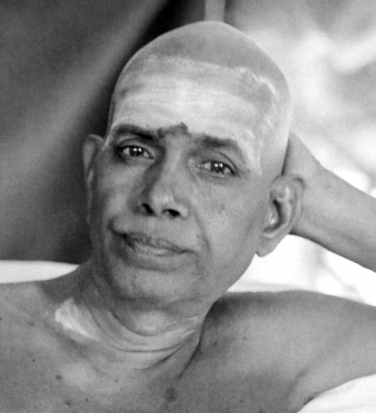
Since Bhagavan thus made it quite clear that he wanted me to do the work, I carried it out to the best of my ability. I put the year 1938 at the top, the world pākasālai below that in Tamil. Following another of Bhagavan’s suggestions, I wrote the name Sri Ramanasramam underneath in dēvanāgari script.
Below is a photograph of that finished dining room, with Bhagavan sitting by the entrance. The name and date plaque that Annamalai Swami made is at the top on the skyline.
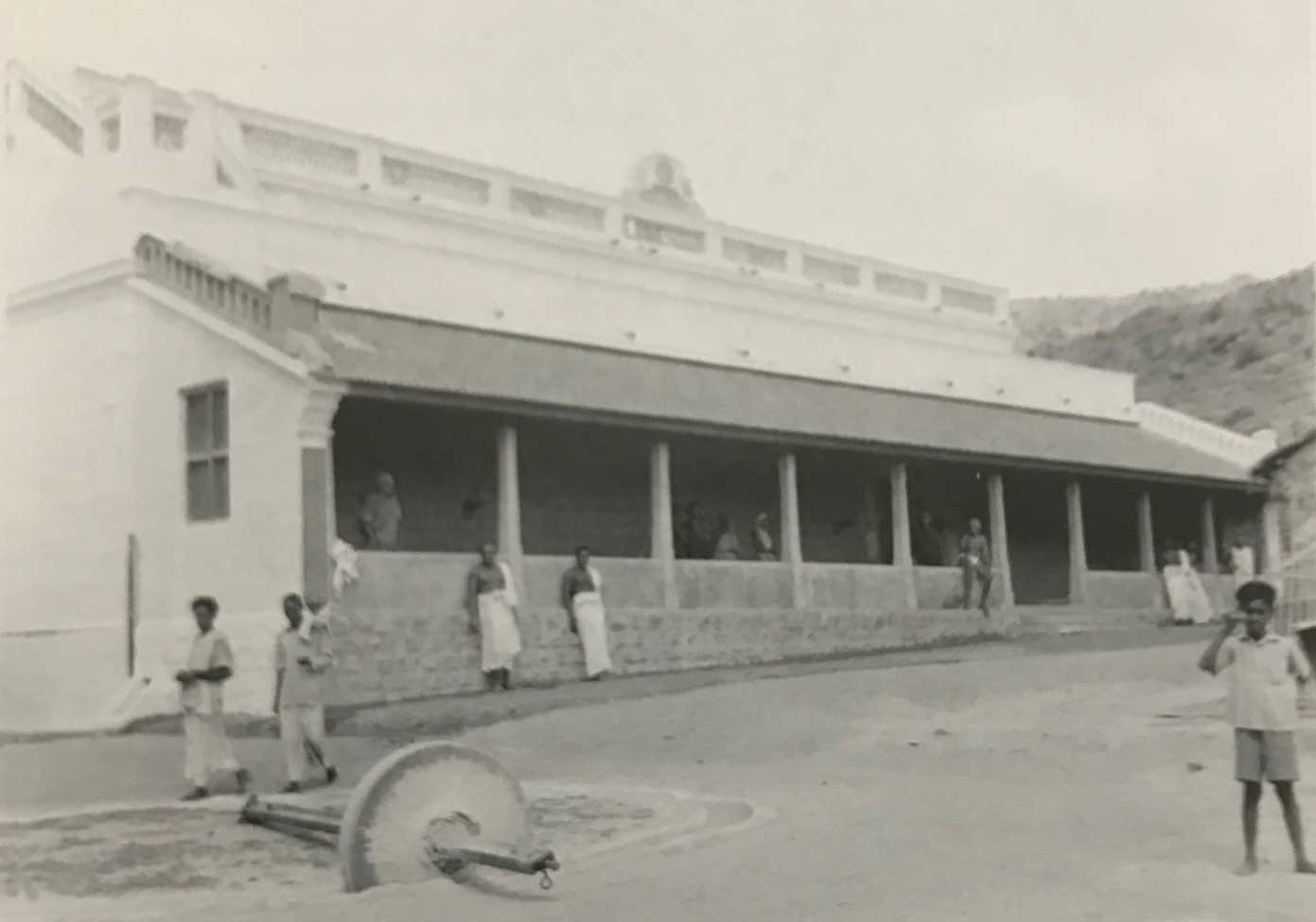
Bhagavan had to play a trick to get me help
Once Bhagavan asked me to construct some steps on the ashram side of Pali Theertham so that devotees could easily walk down to the water.He took me to the tank, showed me where he wanted them and how wide they should be.
But first several heavy boulders had to be removed. It was too late in the day to hire any workers, so I tried to move a few. They were too heavy for me. I tried asking multiple sources in the ashram to lend me their workers but no one was willing to help. I went back to Bhagavan, told him that I could not move the rocks by myself, and that Ramaswami Pillai had refused to lend me any of his workers.
Bhagavan listened to my problems and rather surprisingly said, ‘Since you cannot find anyone else to do the work, I will come and help you myself’.
Bhagavan walked to the tank and pointed out a large protruding rock. ‘We can start with that one,’ he said.
As we were straining to lift it, Bhagavan’s towel slipped from his shoulders and fell into the mud. The rock was too heavy for us. We managed to lift one side of it a few inches but no more. Bhagavan told me to release the rock, saying that it was too heavy. As it fell to the ground it trapped Bhagavan’s towel firmly in the mud. Bhagavan then surprisingly abandoned both the work and the towel and returned to the hall.
I went up to Chinnaswami and said, ‘Do you know where Bhagavan’s towel is? It is stuck in the mud under a rock in Pali Theertham.’ I took him there to see and gave him a summary of what had happened. Chinnaswami was shocked to hear that Bhagavan had been obliged to work as a coolie because I couldn’t find anyone else to help me. He went to Ramaswami Pillai and had him send all his garden workers to the tank to work for me.
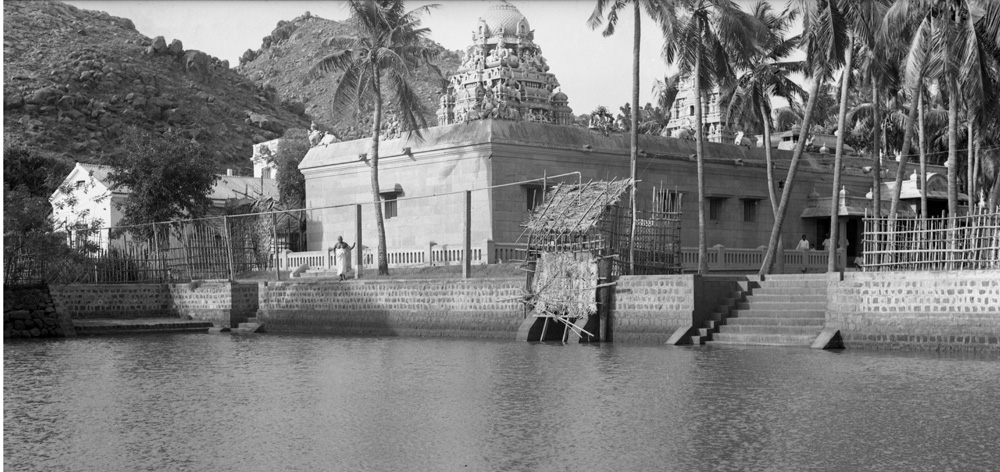
Be aware of the Self while working
Despite my busy schedule Bhagavan once insisted that I memorise the ten verses from Sivānanda Lahari which he himself had selected.
On another occasion he told me, ‘If you want mōksha, copy this book [Ellām Ondrē] into your notebook. Then study it and live according to its precepts.’ I told Bhagavan, ‘Your are keeping me very busy. I have no time for copying. If someone else writes it down I will happily read it and study it.’
Bhagavan refused to accept my excuse. ‘You have time to write your mekkedu (daily tally of workers wages). Are you trying to get mōksha by paying a price for it? I asked you to write it yourself because if you do it this way it will get impressed on your mind. If you write it once it is the equivalent of reading it ten times. Write a little every day. There is no hurry. Even if it takes a month you should do it yourself.’
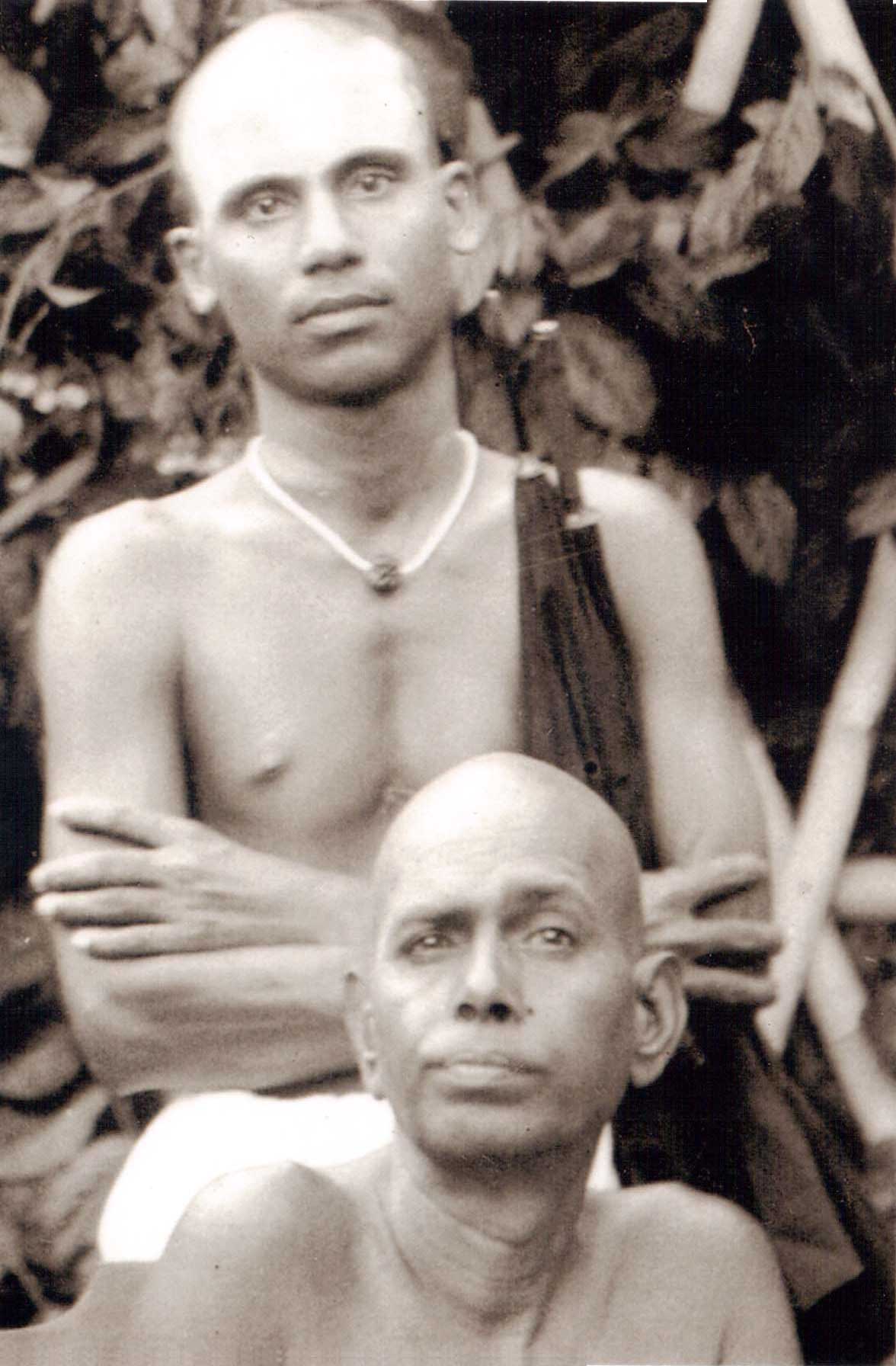
From that day on I put aside a little time daily to do the copying. Bhagavan himself assisted me by writing down the headings for each chapter on the contents page of my notebook. He also completed the copying by writing the last line himself. When the copying was over he went through the notebook and corrected all my mistakes.
Meditate continuously
Bhagavan frequently told me, ‘Don’t forget your real nature. It is not necessary that you should sit and meditate. You should meditate all the time, even while you are working.’
In the beginning when I first came to Bhagavan, I had asked him for a mantra. In response he told me to repeat ‘Siva Siva’ continuously. Later, Bhagavan advised me to keep my attention in the Heart while I was working. I had assumed that Bhagavan wanted me to concentrate on a particular centre on the right side of the chest. However, when I had started to practise in this way, Bhagavan stopped me and corrected me.
This right-side Heart-centre is not the true Heart,’ he said. ‘The real Heart is not located anywhere. It is all-pervasive. Stop meditating on the Heart-centre. Find the source. That is the true Heart. Just as electricity comes not from the individual meter boxes in people’s houses but from a single source, so too the whole world has a single source, which is the Self of the Heart. Seek and enquire into this source of limitless energy. If the centre of the Self were really located in the body, the Self would die when the body dies.

I understood from these remarks that just has one cannot experience the nature and source of electricity by staring at the meter box in one’s house, similarly, one cannot gain a direct experience of the current of the Self by concentrating on the heart – Centre. I gave up concentrating on this Centre and tried to follow Bhagavan’s advice.
In order to keep my attention on the self while I was working I adopted, with Bhagavan’s permission, the traditional approaches of nēti nēti (not this, not this) and affirmation: ‘I am not the body and the mind; I am the self; I am everything.’
Note: The decision to follow this approach must have been so strong, that with continuous practice of it and surrender, Bhagavan’s grace led Sri Annamalai Swami to spiritual enlightenment. This is revealed by his teachings, in which he continuously stresses this one thing: ‘Always remember, you are not the body or mind. You are the Supreme Self.’
Initiation by Touch – Hasta dīkshā
I must mention that I once received a kind of Hasta dīkshā from Bhagavan, although Bhagavan himself would undoubtedly deny that this was his intention. It happened in the old dining room. there was a tap there which was the main source of water for the ashram. Devotees used to fill their buckets there and some even bathed there. As a result the ground was quite muddy around the tap. Bhagavan asked me to make a brick and cement platform around the tap. I did the work while Bhagavan sat nearby in a chair. At one point I stood up and accidentally banged my head on the tap. A large bruise appeared almost immediately.
I was thinking, ‘Bhagavan always says I am not the body. Why should I make a fuss over a little thing like this?’ Then another thought came to me. That this was a blessing! ‘It is only because of this accident that I have got the good fortune of getting both of Bhagavan’s hands on my head.
Although I was not first aware of it, Bhagavan is now blessing me with Hasta dīkshā’.
Bhagavan’s care for me
When the construction of the garbagriha (inner shrine) of the Mother’s Temple was nearing completion, Bhagavan asked me to paint the name of the temple Mātrubūtēshwarālayam (Temple of God in the form of the Mother) on the front wall. If one looks over the entrance one can see two elephants carved out of stone. Under their feet is a stone scroll, where this name is carved. Bhagavan wrote this name in Sanskrit for me so that I could make a stencil and then paint the letters on the scroll. Later one of the sculptors would carve the name by chiseling out the area covered by my painted letters.
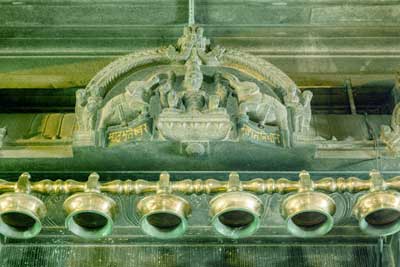
I sat in Bhagavan’s presence in the hall, carefully cutting out the name. I kept all my attention on the work because I knew that I would not be able to get away with even the smallest of mistakes. At about 3 p.m. Bhagavan used to go out of the hall to urinate. At that time, as he stood up, everyone in the hall stood up except me. I was in the middle of cutting out a letter and did not want to spoil it. I heard someone say behind me, ‘Bhagavan has stood up but this man has no respect. He is still sitting on the floor.’
Bhagavan also must have heard this because he seemed to change his mind about going outside.
Instead, he came and sat next to me on the floor. He put his hand on my shoulder and watched intently as I finished cutting out that letter. Then, without bothering to take his expected trip outside, he got up an sat on his couch again.
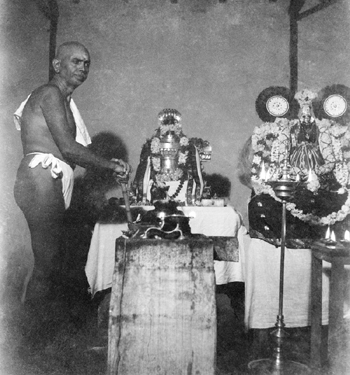
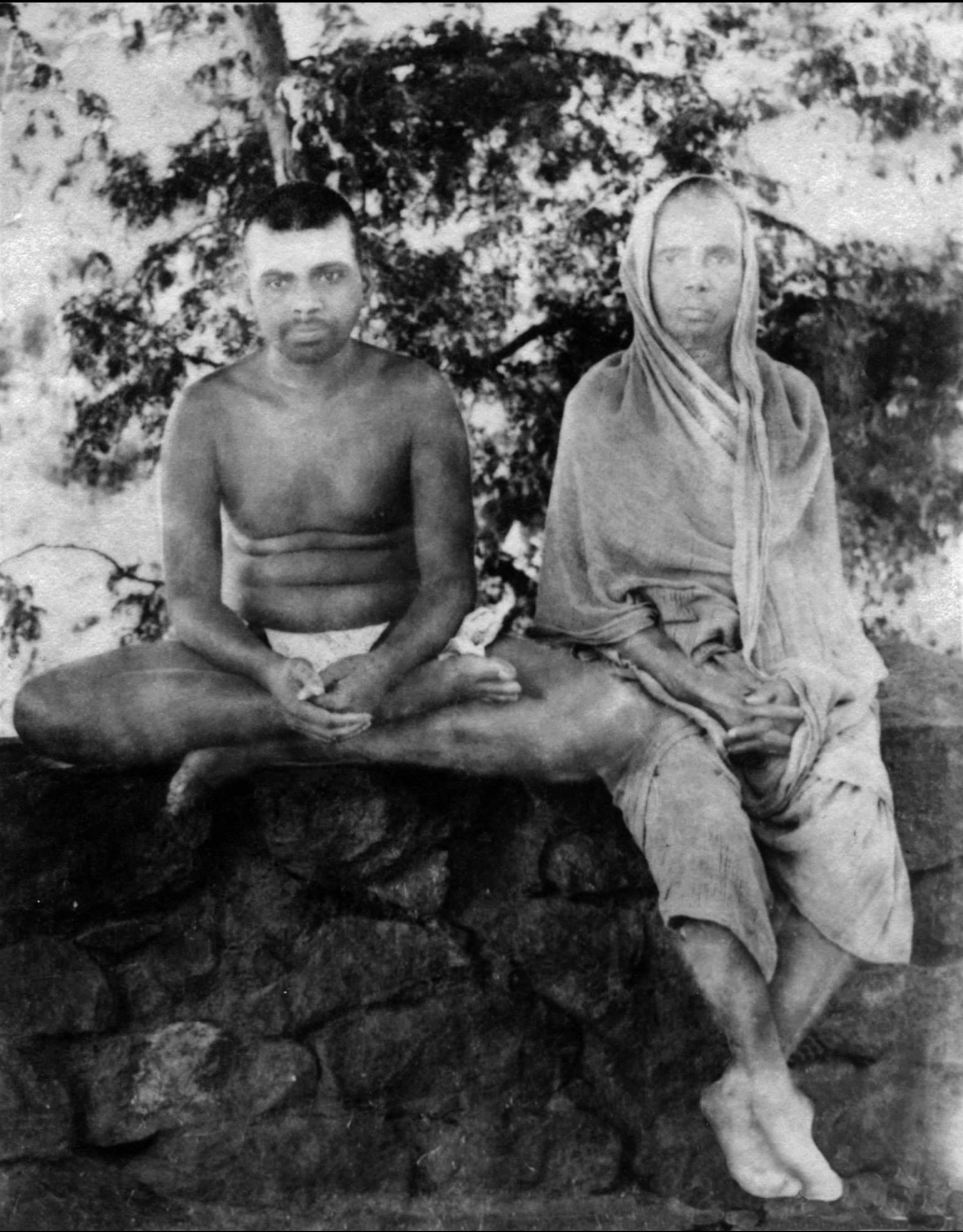
Another miracle by Bhagavan
When the Mother’s temple was nearing completion an expert sculptor was commissioned to make a Yogambika statue out of five different metals for the temple. The pouring of the metal had to be done at an auspicious time and the astrologers had said the casting should be completed between 8 p.m. and 11.30 p.m. that day.
The sculptor started his fire at 8 p.m and worked very hard for several hours but was unable to get the metals to melt in the crucible. Even I who was not an expert, could see that the fire was very, very hot and the sculptor was struggling even to go close to it and had to use a pair of very long tongs. When 11.30 came and went, I felt justified in waking up Bhagavan. I went to the hall, explained the situation to him and asked what we should do. Bhagavan made no reply. Instead he got up and came to see for himself how the work was progressing.
All of the above memories were narrated by Sri Annamalai Swami himself, during his Satsangs with devotees who came to visit him at the Ashram.
Related Content
9. More Jobs, Lessons
Bhagavan kept Sri Annamalai Swami continuously busy with one project after another including the construction of the new dining room, kitchen, Mother's temple and several miscellaneous works. The earnest and…
10. Samadhi Experience
This incident happened in 1938, ten years after Sri Annamalai Swami came to Ramansramam to serve Bhagavan Ramana Maharshi. It had such a profound impact that it ended his construction work and prompted him to…
11. Life in Palakothu
Palakothu is an area of land immediately to the west of the ashram. Several of Bhagavn's devotees who didn't want to stay full-time in the ashram lived and meditated there. Sri Annamalai Swami moved to…
8. Lessons learnt
8. Lessons learnt
SRI ANNAMALAI SWAMI
8. Lessons learnt
THE STORY OF SRI ANNAMALAI SWAMI
Bhagavan instructed us in so many practical ways
Bhagavan was living proof of the timeless wisdom that ‘Serving at the feet of your Guru by surrendering to him unconditionally, by following his instructions completely ‘ is the way to spiritual enlightenment. Sri Annamalai Swami was an exemplary disciple, who followed the instructions of his teacher to near perfection. And on the rare occasions that he didn’t, he repented it.
My yearning for Giri Pradakshina
I cannot say that I always enjoyed working so hard. It would have been nice to have had a day off occasionally. I once tried to take a short break but it had such disastrous consequences that I never tried again. It happened when I was feeling very tired because of a long period of work without any rest. I went in and asked Bhagavan if I could take a break from my duties and do giri pradakshina (walking around the mountain). I told him that I had this desire to do a pradakshina for some time.
Bhagavan knew that I had a lot of work pending so initially he refused to give permission. He didn’t actually say ‘no’, he just kept silent. I should have accepted his silence as an answer but rather stupidly I persisted with the request.
Finally Bhagavan gave me a positive answer. ‘You are often saying that you want time off so that you can do some meditation. Do giri pradakshina and meditate while you are walking.’
I walked around the hill but my mind was too restless to meditate. I felt guilty about abandoning my work. My feelings of guilt increased enormously when I arrived back at the ashram. I was told that as soon as I had left the ashram Bhagavan had abandoned his sofa and had begun to supervise the work which I had chosen to neglect. He had been out in the sun, supervising the work, for all the hours that I had been away. No one had managed to persuade him to go inside. Those devotees who had come for his darshan had been forced to do their namaskaram in the mud and lime that surrounded his feet. Many were understandably upset with me.
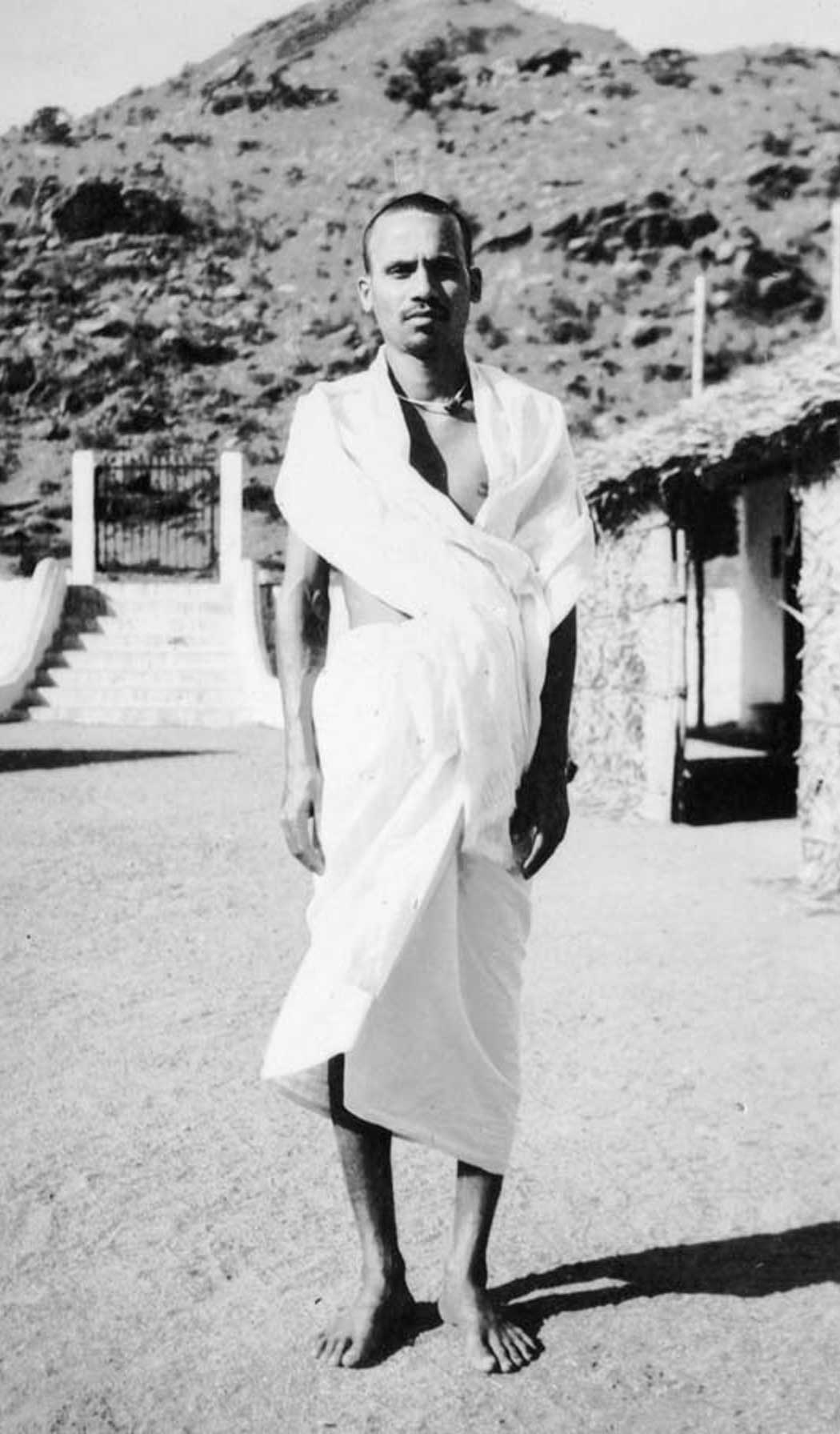
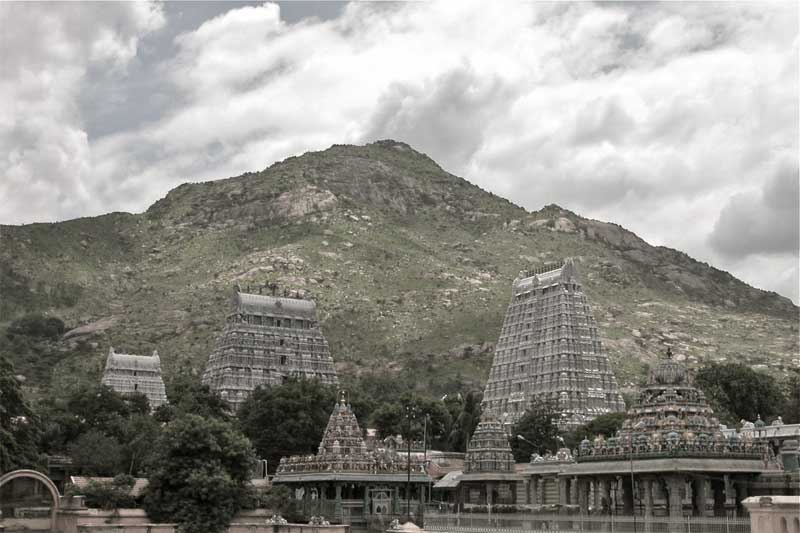
Importance of not wasting things
Bhagavan insisted on frugality and disliked wasting anything.
I was supervising the construction of the new dining room. Bhagavan had given me a rusty, bent nail and asked me to clean it, straighten it, and use it in the dining room.
‘But Bhagavan,’ I protested, ‘we have just received many kilos of brand-new nails. We don’t need to use old ones like this.’
Bhagavan disagreed. After telling me that everything that was useful should be used, he repeated his instructions about renovating the nail.

Simplicity in food
Although Bhagavan was willing to spend several hours each day ensuring that the ashram food was cooked properly, he disliked elaborate meals consisting of many dishes. He was quite satisfied with rice, sambar and one vegetable dish.
A lady from Kerala once came for darshan and insisted on cooking for everyone. After a lot of time and effort she made thirty two separate dishes. Bhagavan allowed her to serve each item on his banana leaf, but when the serving was over he mixed up all the offerings into a single homogenised lump. By way of explanation he told her:
You had to expend a lot of energy to prepare this much food. One vegetable – which is enough to clean the stomach and keep one free of constipation – is enough. Why make all this?’
‘If you prepare thirty two dishes, the mind is always thinking, “Shall I eat this one or that one?” So the mind is also dissipated while eating. If there is one dish there is no trouble. We can eat it very simply.’
‘Also meals like this set a bad example to people who have no food. Poor people will get to hear that we are serving luxurious meals and think, “We are hungry but these people who are supposed to be simple sādhus are eating so many dishes.” Thoughts like this will cause unnecessary jealousy.’
Later he added, ‘If Bhagavan were to eat one dish first, the woman who is serving will think, “Oh, Bhagavan likes this very much”. Then she will come and put another helping on my plate. This is why I mix everything into a single ball.’
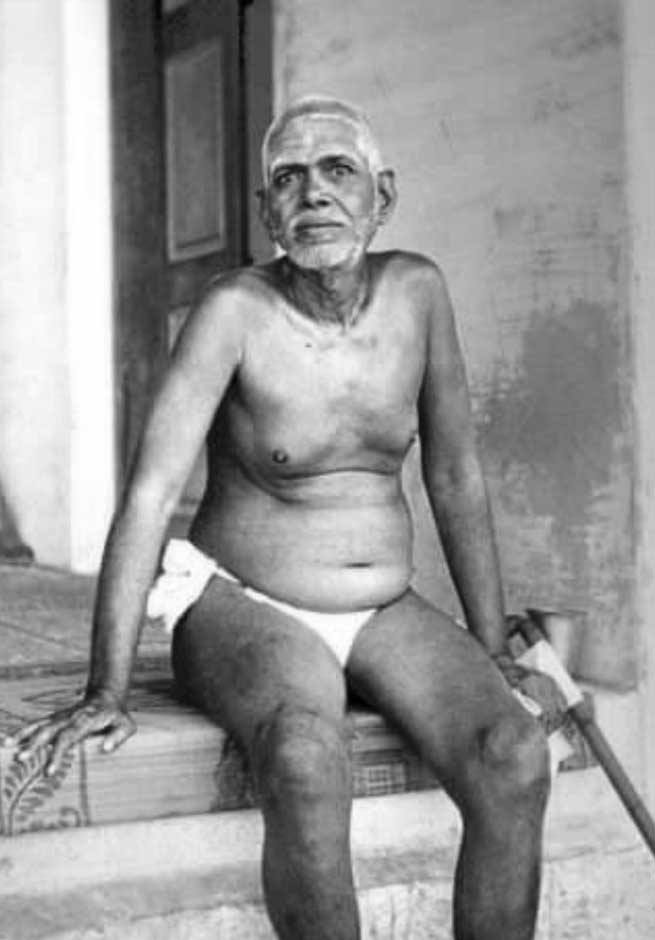
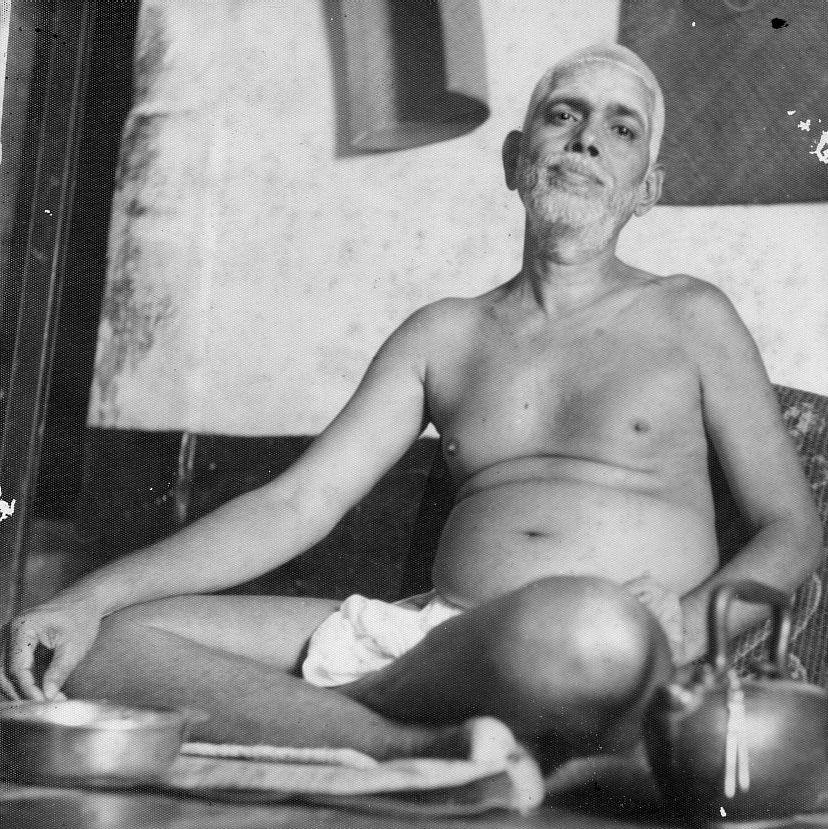
No Paradesis in the first batch
On jayanti day (the day of Bhagavan’s birthday celebration) it was the ashram’s custom to feed anyone who came. There were large, unruly crowds that day as lot of the visitors came only because they wanted a free meal. On that day, just before lunch, Bhagavan heard Chinnaswami calling out in a loud voice, ‘No paradesis (sannyasins) in the first batch!’.
Bhagavan, who was walking towards the dining room, turned back and went inside the old hall. He evidently regarded himself as a paradesi and felt that he had been barred from the dining room. This created a big problem becasue it was a long-established custom that no one should eat until Bhagavan had begun his meal. Chinnaswami came to the hall, apologised for giving such a discriminatory order, and requested Bhagavan to come and eat the the first sitting. Several of the older devotees also pleaded with Bhagavan to eat.

Chinnaswami readily agreed to this condition because the whole feeding programme involving thousands of people, could not be initiated until Bhagavan took his seat in the dining room.
Compassion for animals
Whenever Lakshmi (the cow) came for darshan she would walk very fast, straight towards Bhagavan. When she reached Bhagavan’s couch she would often stand in front of Bhagavan and put her head on his feet. If she came a little closer he would gently caress her head and neck. Often, they would be so close together that Lakshmi’s saliva would fall on Bhagavan’s body. If any special food was cooked in the ashram, Bhagavan would serve some to Lakshmi in the hall itself. I have seen him serving her iddlies, payasam and vadai, all on a banana leaf, just as if she were a human being.
Like this there are numerous accounts of Bhagavan showing his boundless compassion towards animals.
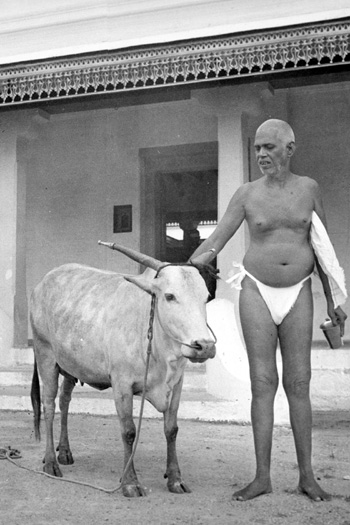
Killing insects
Bhagavan’s compassion towards animals was not universal, as this incident reveals. One morning Bhagavan noticed that a large number of black ants were entering the hall through the drainage hole. Turning to me Bhagavan said,
‘Find out where these ants are coming from. If there is a nest in there, block up the exit so that the ants cannot come into the hall. You must do this work quickly because all the devotees will be coming back at 3 p.m.’
I prised out the flagstone that the drainage hole was on. As I pulled the stone out of the wall I saw a large colony of black ants living in a hole behind it. Some of them even started to crawl over Bhagavan’s sofa. There were so many on the floor around my feet that I couldn’t have taken a step without killing some of them. Bhagavan noticed that I had been immobilised by my fear of unnecessarily killing any ants.
‘Why are you just standing there and looking at them?’ asked Bhagavan. ‘You must close up the hole before the devotees come back. Tell me what you need to finish the job properly and I will bring it for you.’ As I was much too worried about killing the ants and hence did not reply, Bhagavan repeated his offer: ‘Tell me what you want and I shall go and fetch it for you. Shall I bring some broken bricks and a little cement?’
This time I explained my inactivity. ‘There are ants everywhere, Bhagavan. I cannot move or do any work without killing some of them.’
With this assurance I filled in the hole with bricks and cement. Many ants died in the process. I discovered later that Bhagavan generally discouraged devotees from killing insects unless they were causing or about to cause injury or suffering to people or animals.
The importance of following instructions
I remember one occasion when he taught the cooks how to make aviyal properly. Bhagavan had insisted on many occasions that the chillies and other spices should be ground into a paste before the were added to the simmering vegetables. Since this was a very laborious and time-consuming activity, the cooks once decided to add powdered spices to the meal instead of had-ground paste. Bhagavan somehow found out what had happened. On the next occasion that the aviyal was prepared, Bhagavan himself came to the kitchen and ground the spices.
I happened to walk into the kitchen while he was doing the work. Noticing that he alone was working and that all the women were standing around watching, I said, ‘There are many people working in the kitchen. Why is Bhagavan alone doing this work?’
Bhagavan explained what was going on: ‘I told them to make a paste out of the chillies but they didn’t follow my instructions. So, to make sure that it is done properly, I am doing the work myself. It is no hardship for me. It is good exercise for the hands and arms.’
I turned to the women and scolded them a little: ‘There are so many people here but you are letting Bhagavan do all the hard work. Why are you idly standing around like this?’
Bhagavan made no comment; he just carried on grinding. Then the women started saying ‘Let me do it,’ ‘I will do it,’ ‘Let me take over’.
Keeping the premises clean
I can remember another occasion when Bhagavan taught us a lesson by doing work himself. There was a room near the kitchen which was rarely cleaned. It was dusty and dirty and the floor was usually covered with old banana leaves and vegetable cuttings. Many people walked through this room but no one ever took the trouble to tidy it.
To all volunteers he gave the same reply:
‘Only now your eyes are on this. Did you not see the mess before?’
Bhagavan collected all the rubbish on a large piece of paper, took it outside and threw it away. From that day on the room was cleaned regularly.

Correct yourself first
Bhagavan taught that one should reform oneself rather than find fault with others. In practical terms this means that one should find the source of one’s own mind rather than make complaints about other people’s minds and actions. I can remember a typical reply that Bhagavan gave on this subject.
A devotee, who was quite intimate with Bhagavan, asked him, ‘Some of the devotees who live with Bhagavan behave very strangely. They seem to do many things that Bhagavan does not approve of. Why does Bhagavan not correct them?’
Bhagavan replied, ‘Correcting oneself is correcting the whole world. The sun is simply bright. It does not correct anyone. Because it shines, the whole world is full of light. Transforming yourself is a means of giving light to the whole world.’

Once, while I was sitting in the hall, someone complained to Bhagavan about one of the devotees who was sitting there: ‘He is not meditating here, he is just sleeping.’
‘How do you know?’ retorted Bhagavan. ‘Only because you yourself gave up your meditation to look at him. First see yourself and don’t concern yourself with other people’s habits.’
Bhagavan points out
Related Content
8. Lessons learnt
Bhagavan was living proof of the timeless wisdom that ‘Serving at the feet of your Guru by surrendering to him unconditionally, by following his instructions completely ‘ is the way to spiritual enlightenment.…
9. More Jobs, Lessons
Bhagavan kept Sri Annamalai Swami continuously busy with one project after another including the construction of the new dining room, kitchen, Mother's temple and several miscellaneous works. The earnest and…
10. Samadhi Experience
This incident happened in 1938, ten years after Sri Annamalai Swami came to Ramansramam to serve Bhagavan Ramana Maharshi. It had such a profound impact that it ended his construction work and prompted him to…
7. Under Bhagavan's care
7. Under Bhagavan's care
SRI ANNAMALAI SWAMI
7. Under Bhagavan's care
THE STORY OF SRI ANNAMALAI SWAMI
Several occasions when Bhagavan outwardly expressed his care for me
Bhagavan made me work very hard but at the same time he was always very kind and considerate towards me. These are just some examples where Bhagavan expressed his concern for me outwardly, through his words and actions.
Concern for my nutrition
Whenever I was supervising construction work, Bhagavan would often tell me,
‘You are working hard in the heat of the day. You may eat whatever you want.’
The serving ladies, aware of Bhagavan’s concern for me, always served me large amounts of curd and ghee to counteract the heat.
I also had a remedy of my own. In the summer, when the heat was almost unbearable, I found that mixing a chopped raw onion with my food helped me to keep my body cool. I ate so much raw onion one summer that many peopled started to call me ‘Vengaya Swami’ (Onion Swami)

Jnanam is more important than Iddlies
I had asked Bhagavan some spiritual questions but before he had a chance to complete his answer, Chinnaswami interrupted us by saying, ‘Why are you asking questions while Bhagavan is eating?’
Before continuing with his answer, Bhagavan turned to Chinnaswami and said, ‘Jnanam is more important than eating iddlies. This time will never come again. If we stop talking now, a suitable occasion may not come again.’
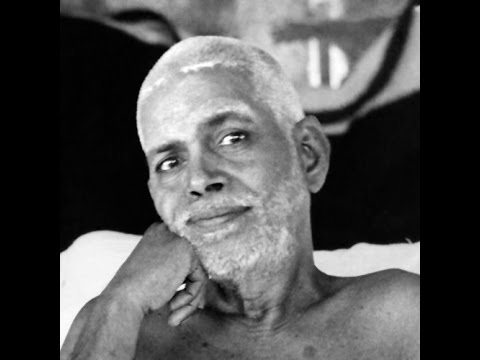
I will serve him myself
Bhagavan made me work very hard but at the same time he was always very kind and considerate towards me. Once incident which happened in the dining room shows this very well. I had spent the whole morning supervising masons who were constructing some steps near the dispensary. If I had not been present it is quite likely that they would either have failed to put enough packing under the stones, or put the stones themselves in the wrong place. The work took so long I was very late for my lunch.
When I reached the dining room I found that the food which had been served on my plate had gone cold and that there were several wasps sitting on it. One of the servers scolded me for being late. ‘You may be working, ‘ she said, ‘but we are also working. You should not turn up late like this, you should come on time.’
Bhagavan, who was outside at the time, cleaning his teeth overheard what they were saying.
He called out in a loud voice: ‘Annamalai Swami is not keeping himself idle. If he had come earlier, the work which he has been supervising would not have been done properly. If you need some rest you can go and have a rest. I will come and serve Annamalai Swami myself.’

Bhagavan lets me cook
Since I was a non-brahmin I was not allowed to do any of the cooking. Bhagavan knew the sentiments of orthodox brahmins and went to a lot of trouble to avoid offending them. There was one occasion when Bhagavan broke the rules and let me do some cooking. It was the morning after a jayanti celebration. All the cooks were asleep, completely exhausted after feeding thousands of people the day before. Bhagavan took me, Madhava Swami and Ramakrishna Swami into the kitchen to make uppuma because it was clear that the cooks were not going to wake up in time to prepare the breakfast. Under Bhagavan’s supervision we cut vegetables, shredded coconuts and made a large pot of rava uppuma
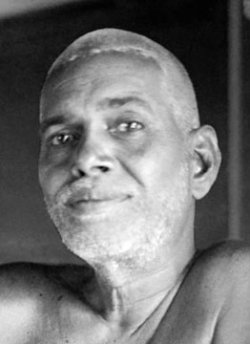
No difference between you and I
This is an example of Bhagavan’s care to not offend others’ feelings. As I was walking with Bhagavan towards toe cowshed we noticed some women cleaning rice near one of the guest rooms. One of them had recently spat out some betel juice on the path that we were walking on. Using his bare foot, Bhagavan covered and buried the juice under a little mound of earth.
Not wanting Bhagavan’s feet to come in contact with the saliva, I tried to stop him by saying, ‘Why is Bhagavan doing this? I will do it.’
Bhagavan ignored my offer. ‘What is the difference between “you” and “I”? he asked. ‘Many brahmins will go this way to the patashala. If they happened to see this on the path they would be very upset. I am only burying it to avoid hurting their feelings.’

Kaivalya Navanitam
I once asked Bhagavan, ‘What are the most important verses in Kaivalya Navanitam?’ I gave my copy of the book to Bhagavan who immediately picked out verses twelve and thirteen from chapter one:
After reading them out Bhagavan remarked, ‘All the other verses in Kaivalyam are just an elaboration and a commentary on these two verses’.
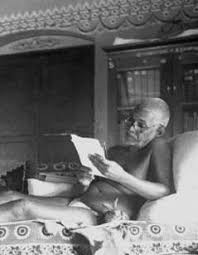
Six Books to read
On another occasion when I asked Bhagavan to select some reading material for me, he gave me a short-list of six books:
- Kaivalya Navanitam
- Ribhu Gitā
- Ashtāvakra Gitā
- Ellām Ondrē
- Swarūpa Sāram and
- Yoga Vāsishta.
He laid particular stress on Ellām Ondrē, telling me, ‘If you want mōksha write, read and practise the instructions in Ellām Ondrē.
Ulladu Narpadu Verses
Once I persuaded Bhagavan to write a short Tamil verse on Advaita. My request arose out of a talk that Bhagavan had given in the hall. I was so moved by his brief speech that I asked Bhagavan to summarize these ideas in a written Tamil verse. Bhagavan agreed, took a Sanskrit verse from Tattvopadesā (verse 87) which expresses a similar idea, and translated it into a Tamil Venbā
I also managed to persuade him to write the first fair copy in my diary. The verse was eventually published as verse thirty-nine of Ulladu Nārpadu Anubandham.
One day I asked Bhagavan ‘If I attain Jnāna what indications will there be that one has reached the spiritual goal?’ Bhagavan replied by writing the following verse. It became verse twenty-nine of Ulladu Nārpadu Anubandham.
Chanting Ribhu Gita
In additional to the regular pārāyanam in the morning, we also chanted a lot from the Ribhu Gita. Bhagavan had such a high opinion of this book that he told several of us to read it regularly as part of our sādhanā. He even said that constant reading of this book leads to samādhi.
I was one of the devotees who was told to read this book regularly.
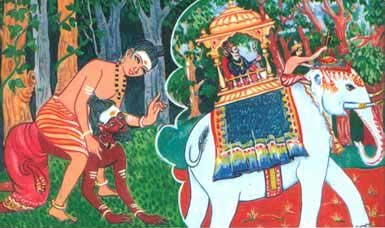
Become nothing
There was a devotee in the ashram who, for me at least, exemplified Bhagavan’s teachings on humility and selfless devotion. His name was Viran and was employed to carry water, but in addition he did whatever was asked of him immediately without any complaint whatsoever. Even if it was in the middle of the night. He was from a low caste, so when people addressed him disrespectfully, Bhagavan would immediately show his disapproval.

All of the above memories were narrated by Sri Annamalai Swami himself, during his Satsangs with devotees who came to visit him at the Ashram.
Related Content
7. Under Bhagavan’s care
Bhagavan made me work very hard but at the same time he was always very kind and considerate towards me. These are just some examples where Bhagavan expressed his concern for me outwardly, through his words…
8. Lessons learnt
Bhagavan was living proof of the timeless wisdom that ‘Serving at the feet of your Guru by surrendering to him unconditionally, by following his instructions completely ‘ is the way to spiritual enlightenment.…
9. More Jobs, Lessons
Bhagavan kept Sri Annamalai Swami continuously busy with one project after another including the construction of the new dining room, kitchen, Mother's temple and several miscellaneous works. The earnest and…
6. Small privileges
6. Small privileges
SRI ANNAMALAI SWAMI
6. Small privileges
THE STORY OF SRI ANNAMALAI SWAMI
Small privileges that I enjoyed
In the beginning when I first began to supervise the ashram’s building projects, I used to think: ‘This job will soon be over. When it is finished I can go back to the hall and sit with Bhagavan.’
Bhagavan had never told me, ‘From now on you must work full-time on these construction jobs’. I had just assumed that in the times when there was no work to do I would be able to go back to the hall and sit with Bhagavan. It was Bhagavan himself who disabused me of this notion. As soon as I had finished one job he would invariably find something else for me to do. In all the years that I worked for him, there was hardly ever a day when I was able to sit with him in the hall during working hours.
I didn’t feel this loss too keenly because I was compensated by several small privileges.
Helping Bhagavan with his bath
In the early morning, before the construction work started, Madhava Swami and I used to help Bhagavan with his bath. Both of us used to give him an oil massage on his back and legs before he took his bath.
On a related note: When I worked in the ashram I used to drink the water with which Bhagavan had washed his hands. I would get this water two or three times a day. Even after I moved to Palakottu, I still occasionally drank this water because Mudaliar Patti sometimes used to bring it to me. She knew that I liked this water, and she knew that I had been accustomed to drinking it.
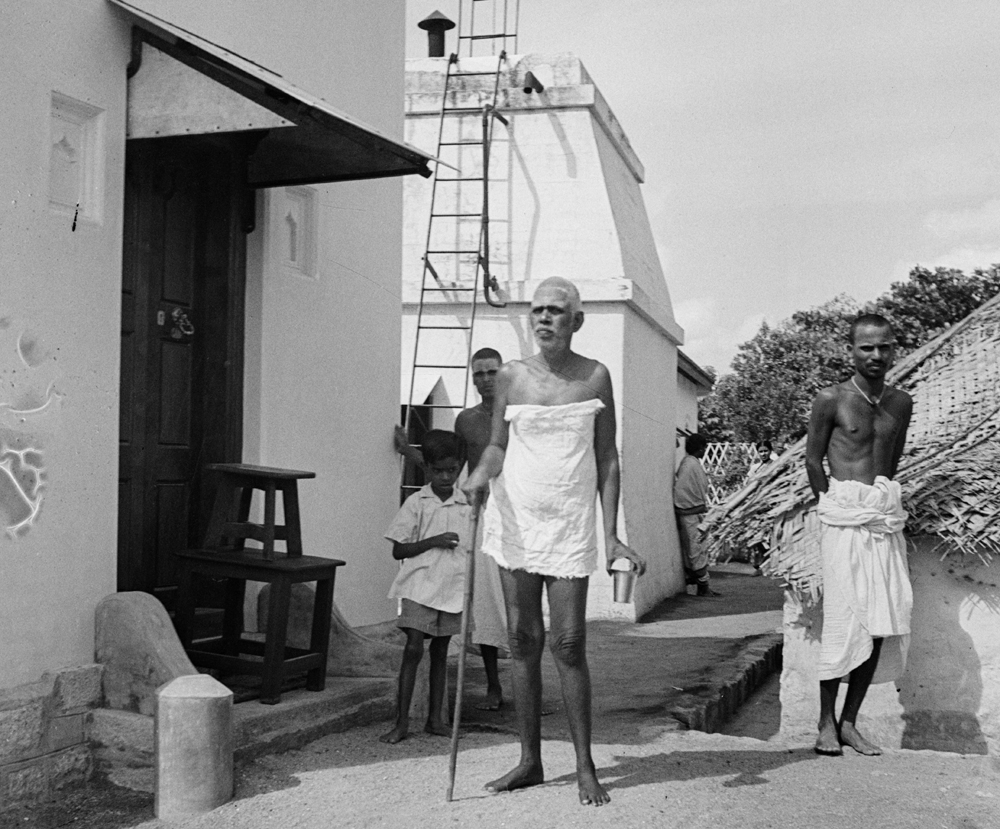
Massaging Bhagavan’s feet
In the evening between 8 and 9:30 I was also allowed to massage Bhagavan’s feet with oil. While I was massaging his feet I would either talk to him about spiritual matters or discuss building plans with him. After I had finished the massage, Bhagavan also permitted me to rest my head on his feet for a few minutes.
Bhagavan’s caring towards me
Whenever I was supervising construction work, Bhagavan would often tell me,
‘You are working hard in the heat of the day. You may eat whatever you want.’
The serving ladies, aware of Bhagavan’s concern for me, always served me large amounts of curd and ghee to counteract the heat.
I also had a remedy of my own. In the summer, when the heat was almost unbearable, I found that mixing a chopped raw onion with my food helped me to keep my body cool. I ate so much raw onion one summer that many peopled started to call me ‘Vengaya Swami’ (Onion Swami)

Intimate talks with Bhagavan
I had to give a building report to Bhagavan every evening. I would tell him what had been accomplished and what still needed to be done. Sometimes Bhagavan would give me instructions for the next day. At other times I would present my own plans and get his approval for them.
I thus found myself in the enviable position of having a fairly long intimate talk with Bhagavan every evening. Other devotees who were afraid to speak to Bhagavan because of his grandeur, used me as an intermediary. Knowing that I talked to Bhagavan freely everyday, they would tell me their problems and request that I ask Bhagavan for a solution to them.
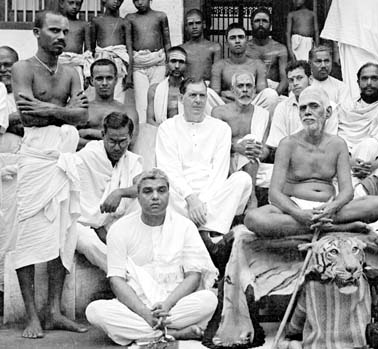
Eating from Bhagavan’s leaf
This was another small privilege that I greatly valued. There were two sittings for both lunch and dinner. Bhagavan always ate with the first sitting whereas I usually ate at the second sitting. Bhagavan would usually be finishing his meal as I walked into the dining room. If he was still eating when I arrived I would sit opposite to him and wait expectantly. My patience was often rewarded. On many occasions Bhagavan would push his leaf towards me to indicate that I could have my meal served on it. The serving ladies would take the hint, put the leaf in front of me, and serve me my meal.
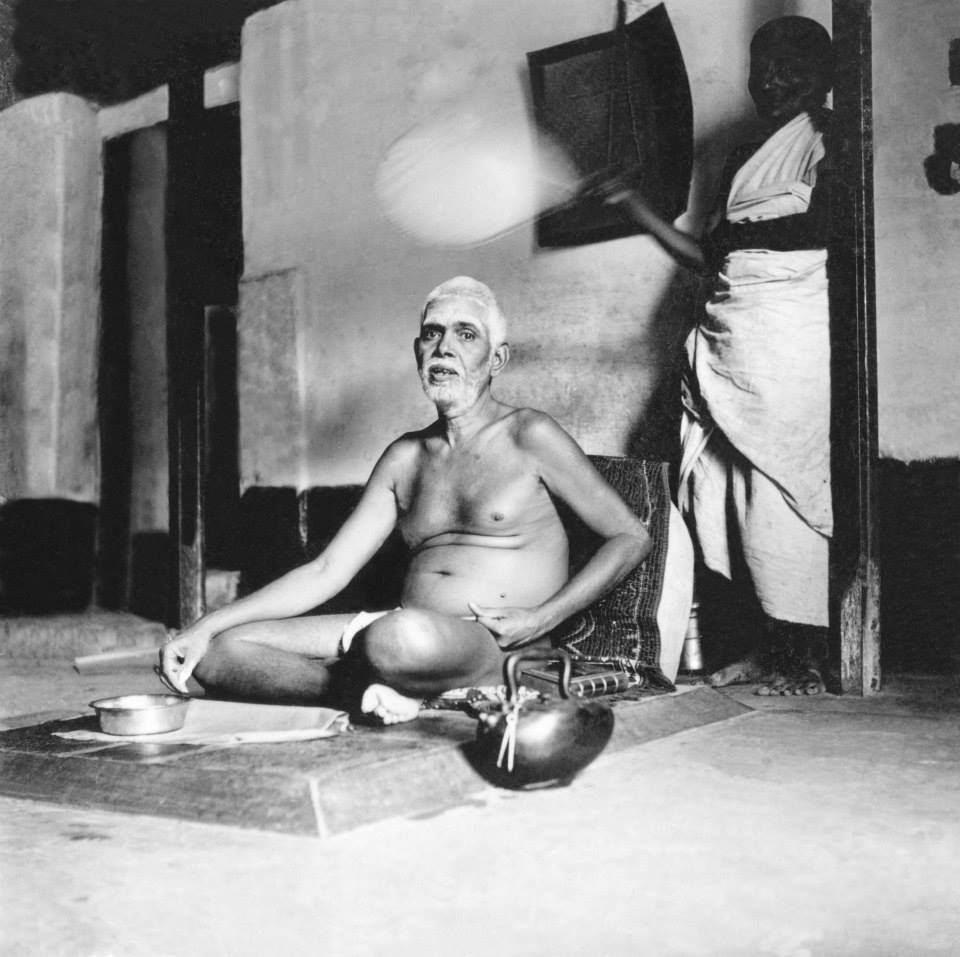
As the ashram grew, so many people wanted to eat from Bhagavan’s leaf-plate that eventually a rota system was established. In the early days because I would come into the dining room and sit near Bhagavan as he was finishing his meal, I would usually end up with the leaf. Sometimes a devotee would complain to me about my near monopoly.
‘You are taking Bhagavan’s leaf almost every day. You are earning so much punya. You have so many opportunities to get Bhagavan’s leaf. Please let me eat off this leaf for just one day.’
If anyone complained in this manner I would hand over the leaf to him. When the new dining room was completed I only managed to get he leaf on a few occasions. In later years Bhagavan stopped giving away his leaf. When he found that people were hanging around him at the end of each meal, merely waiting for his leaf, he put an end to the practice by announcing that henceforth no one would be permitted to eat from it.
Other forms of Prasad
There were other forms of prasad available in the dining room. At the end of each meal Bhagavan would wash his hands in a small vessel which he kept near his leaf. I drank that water almost every day. In addition to this I also used to drink the water that had been served to Bhagavan. The serving women would always put a cup of hot water next to Bhagavan’s plate. He would usually drink half and leave the other half in the cup. Whenever he did this I used to drink the water that remained.
I took it too far once
My strong desire to eat Bhagavan’s leftovers once made me very sick. Bhagavan once had a toothache. To alleviate the pain Bhagavan put a piece of tobacco between his teeth for a few minutes and spat it out. I decided, rather foolishly to show my devotion by emulating Guru Namasivaya (who once ate the vomit of his Guru when the Guru had asked him to clean up the mess by saying ‘Put this where we cannot walk, where it cannot touch our feet’). I convinced myself that the tobacco was Bhagavan’s prasad, crushed it between my teeth and swallowed it. Almost instantly I had severe stomach pains and a great feeling of nausea. I felt like vomiting on several occasions but I managed to avoid it by drinking large quantities of water. (Used tobacco has poisonous residues)
All of the above memories were narrated by Sri Annamalai Swami himself, during his Satsangs with devotees who came to visit him at the Ashram.
Related Content
6. Small privileges
In all the years that I worked for Bhagavan, there was hardly ever a day when I was able to sit with him in the hall during working hours. Yet I didn’t feel this loss because I was compensated by several small…
7. Under Bhagavan’s care
Bhagavan made me work very hard but at the same time he was always very kind and considerate towards me. These are just some examples where Bhagavan expressed his concern for me outwardly, through his words…
8. Lessons learnt
Bhagavan was living proof of the timeless wisdom that ‘Serving at the feet of your Guru by surrendering to him unconditionally, by following his instructions completely ‘ is the way to spiritual enlightenment.…
5. Building works start
5. Building works start
SRI ANNAMALAI SWAMI
5. Building works start
THE STORY OF SRI ANNAMALAI SWAMI
Bhagavan introduces me to my new role: Construction
Note: We have seen the spiritual fervour that the disciple Chellaperumal came to Bhagavan with. Moksha was all he wanted. But Bhagavan had him start construction work and kept him at it almost exclusively for the next 9 years. It was exhausting physically, leaving him with almost no time for any traditional Sādhana. Yet the disciple took it all in stride. He had surrendered to his Guru unconditionally. Bhagavan’s command was his Mantra. This attitude of total unconditional surrender to Bhagavan would eventually bless him with Liberation.
The following are the major construction projects that Bhagavan trusted Sri Annamalai Swami with between 1928 - 1935.
A revetment wall
Within a few weeks of my arrival at Ramanasramam, Bhagavan asked me to build a large wall on the north side of the ashram. There was a stream behind it that flowed into the ashram during the rainy season. The wall was to prevent the stream from flooding the ashram. Bhagavan told me that the wall had to be 100 yards long and that the proper term for it was rakshanai (revetment). He told me several times that this revetment would protect the ashram against all future floods.
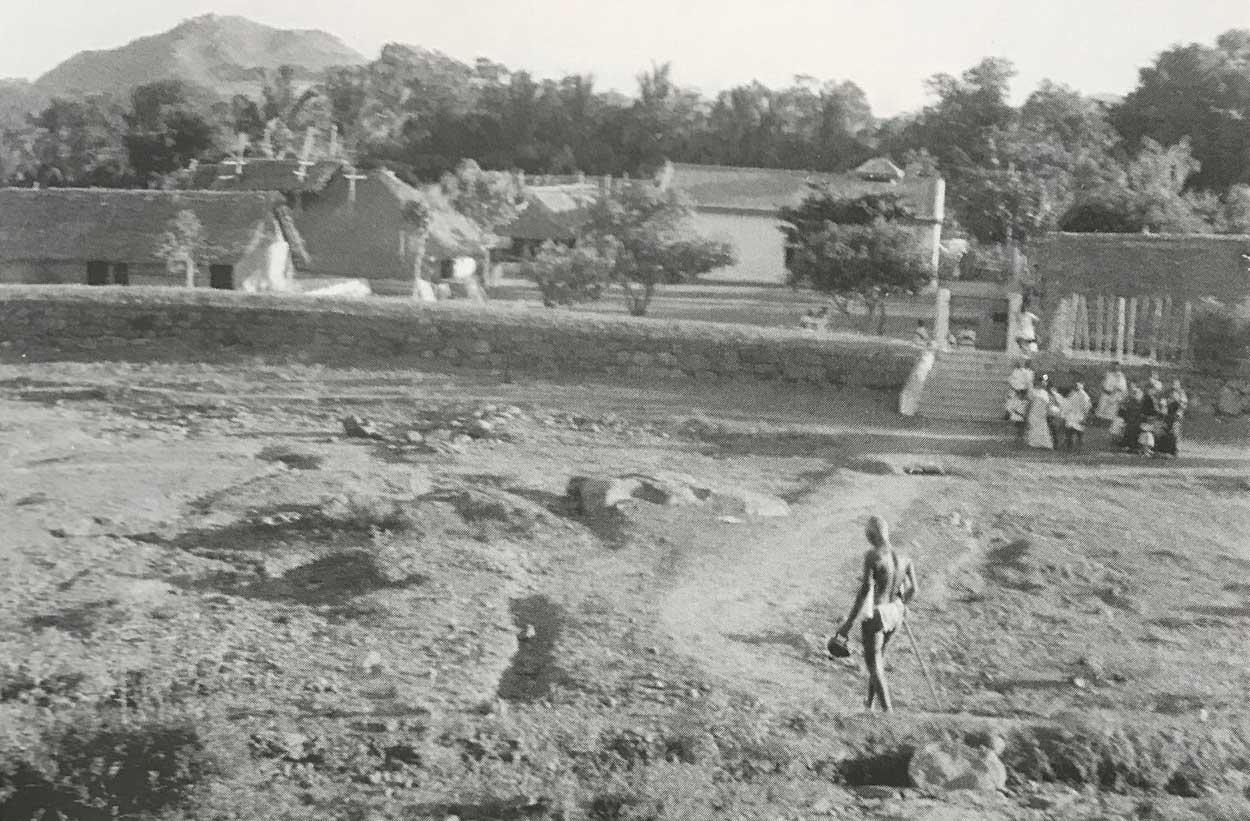
Bhagavan himself gave me the instructions. I was to build two parallel walls out of stone, 6 feet high and 8 feet apart. ‘As you build the walls’, advised Bhagavan, ‘fill the space between them with mud. If you mix earth and water together and compress it, it will be very strong.’ As I was carrying out Bhagavan’s instructions several groups of devotees came to watch and even made fun of the project, comparing it to a large dam. They thought I was wasting the ashram’s money (which was very scarce in those days). I was unperturbed by their comments and criticisms because I knew that I was merely following Bhagavan’s instructions. I completed the project by adding two sets of stone steps so that Bhagavan and the devotees could easily climb over the wall on their way to Arunachala.
A large storeroom
The storeroom was my first big construction job. I was apprehensive because I had no prior experience in constructing buildings. Knowing this, Bhagavan helped me to do the job.
Bhagavan seemed to have a natural flair for building work. He always seemed to know how to make the right decision at the right time. For example, there were three very large arches inside the storeroom. The masons had done a bad job and cracks appeared at the top of each arch. Bhagavan gave me detailed instructions on how to grout the cracks and how to insert keystones in the top of each arch to strengthen them. I don’t know how he knew about such things. I am certain that he had never constructed a masonry arch before.
It was at this time that my clashes with Chinnaswami (the manager of the ashram and Bhagavan’s younger brother) began. He had his own ideas for construction which were contradictory to what Bhagavan asked me to do. I never once agreed to follow his instructions. We had many quarrels.
Bhagavan was giving me an opportunity to admit defeat but I refused to take it. A great determination arose in me. ‘Even if this whole body is destroyed in Bhagavan’s service I will stand by his words and do whatever he asks of me.’ I told myself.
The bas-reliefs of Arunachala
When the storeroom was completed, Bhagavan asked me to make a bas-relief (sculpture) of Arunachala over the entrance. I had no idea how to scult lime-plaster into a 3-dimensional picture.
‘I don’t know how to start making a figure like this,’ I told Bhagavan. ‘What do I do?’
Bhagavan took a piece of paper and drew a picture of Arunachala on it. Apart from the summit there were three lower peaks outlined against the sky. He told me that the main peak represented Siva while the three subsidiary ones represented Ambal, Vinayaka and Subramania.
‘But Bhagavan I have no idea how to mould lime into shapes like this. How do I do it?’ I said.
This time Bhagavan refused to give me any hints. ‘This is Annamalai, You are also Annamalai. You should know how to do it without my telling you’, he said.
I accepted the challenge and tried to execute it, but my determination was not enough to compensate for my lack of experience. For three days I sat their playing with lime plaster. I failed in all my attempts.
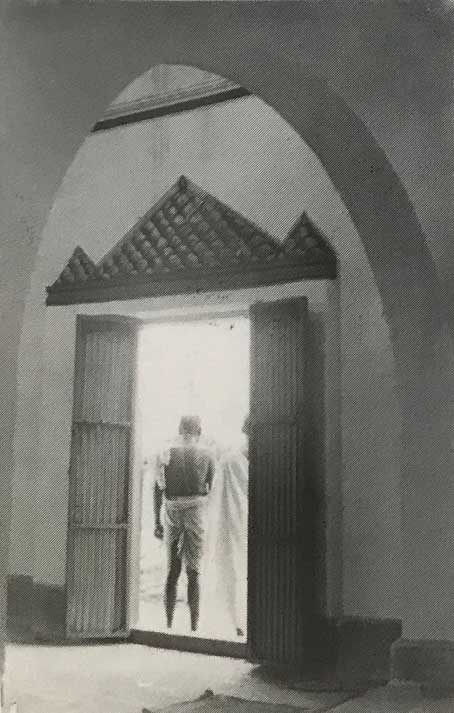
The next day, following Bhagavan’s instructions I made another identical bas-relief over the inside of the entrance door. I was surprised how easily I acquired all the necessary skills to supervise construction work. The resident devotees were surprised too. Tenamma Patti, one of the ashram cooks, once asked Bhagavan about this.
‘Annamalai Swami has a lot of devotion towards Bhagavan,’ she said. ‘That is easy to understand. But he has also become an expert in building construction, apparently without any study or training. How is that possible?’
Bhagavan surprised her by saying, ‘He was an engineer in his last life’.
It was very unusual for Bhagavan to make a statement like this. It was clear that he knew of the previous lives of at least some of his devotees but he kept this knowledge to himself.

him Annamalai Swami)
A large cowshed
Chinnaswami made an arrangement with a local mason to build a small cowshed for under Rs. 500. He felt that since Lakshmi was the only cow in the ashram, a small cowshed would be sufficient. Plans were made and a small muhurtam (inauguration ceremeony) at the site was done. Before the construction began, Bhagavan took me aside and told me that the plan must be changed.
Many cows will come here in the next few years,’ he said. “Even if we build a big cowshed there will be so many cows that some of them will have to be kept outside. We must make a larger cowshed and you, rather than this mason, must supervise its constsruction.’
He showed me exactly where it had to be built, by marking lines on the ground and said all four walls had to be 48 feet long.
And then he added a peculiar provision: ‘If Chinnaswami comes and argues with you about this plan, don’t tell him that I asked you to work like this. Pretend that you are doing it on your own authority.’
I never asked Bhagavan why he wanted his role in this affair to be kept secret.

I started the construction by digging the large trenches for the foundation. When Chinnaswami came to see the progress he was dumbfounded. ‘Who gave you the authority to change the plan?’, he asked. I replied that I was doing it on my own authority. Chinnaswami ordered me to revert to the original plan, but I refused.
This led to a major confrontation. He shouted at me, abused me but I didn’t budge. He walked out of the ashram and sat on a rock for several hours, making critical remarks about me. ‘I am going to leave the ashram’ he repeatedly complained. ‘Let him take care of it.’ Several devotees went to Bhagavan and told him that Chinnaswami was very angry and that he will only return to the ashram if Annamalai Swami was thrown out.
Bhagavan normally did not interfere when Chinnaswami dismissed workers, but on this occasion he backed me up by saying, ‘If Annamalai Swami goes away, I will also go away’.
Chinnaswami withdrew his threat but still continued to oppose the construction. He had a vote taken, where everyone voted in favor of his original plan. I didn’t vote.
Seeing this, Bhagavan enquired ‘What is your opinion?’.
I told him ‘I think that we should build a very big cowshed on the foundations that I started this morning.’
Bhagavan just said ‘Now it seems that people here are divided into two parties. Let us see which of the two plans finally materialises.’
That was his last word on the matter. He got up and left the hall.
I continued with the project, suffering a constant barrage of complaints from Chinnaswami. And then saying that we couldn’t afford this project, he threw a bag of coins that narrowly missed my head. I went straight to Bhagavan and told him about this. Bhagavan gave me a long list of things, including food, which he said he did not need. He refused pain balm for his legs and betel nut as well. When the devotees observed all this, they contributed some money to help with the construction for two days. And then as if by a miracle, a prince in North India came to the rescue. He was about to be killed by a tiger during a hunting expedition when he had prayed to Bhagavan. His prayers were answered and he immediately sent a money order for Rs. 1,000 to the ashram and a tiger skin along with it!

As the cowshed was nearing completion, Chinnaswami came to me and said: ‘This building will be a success because of Bhagavan’s plan. It is only because of his grace that we have been able to finance it. Now I believe you.’
Towards the end of the construction of the cowshed, the ashram had received so many donations. Chinnaswami, after getting permission from Bhagavan, decided to start several other building projects. He came up to me and said:
‘I am going to Burma for a few weeks in order to buy enough teakwood to build a big dining room and kitchen here. While I am away you should start work on a bathroom for Bhagavan, an office and a bookstore. I am confident that you will do a good job because I know from past experience that you will work according to the plans of Bhagavan.’
The Maharaja of Mysore had already given a donation from Bhagavan’s bathroom, so I was able to start on that work almost immediately. The work on these projects went very smoothly and I was able to complete them without any untoward incidents.
The building which now contains the ashram office and bookstore was constructed after Bhagavan’s death. The office and bookstore that were originally built are now used to store and dispatch the ashram’s publications. Bhagavan’s bathroom is the small room which is attached to the north side of the old office, as shown in the diagram. It has a small door which faces the mountain.
This picture also shows the revetment wall that was described above, and the stream beyond it.
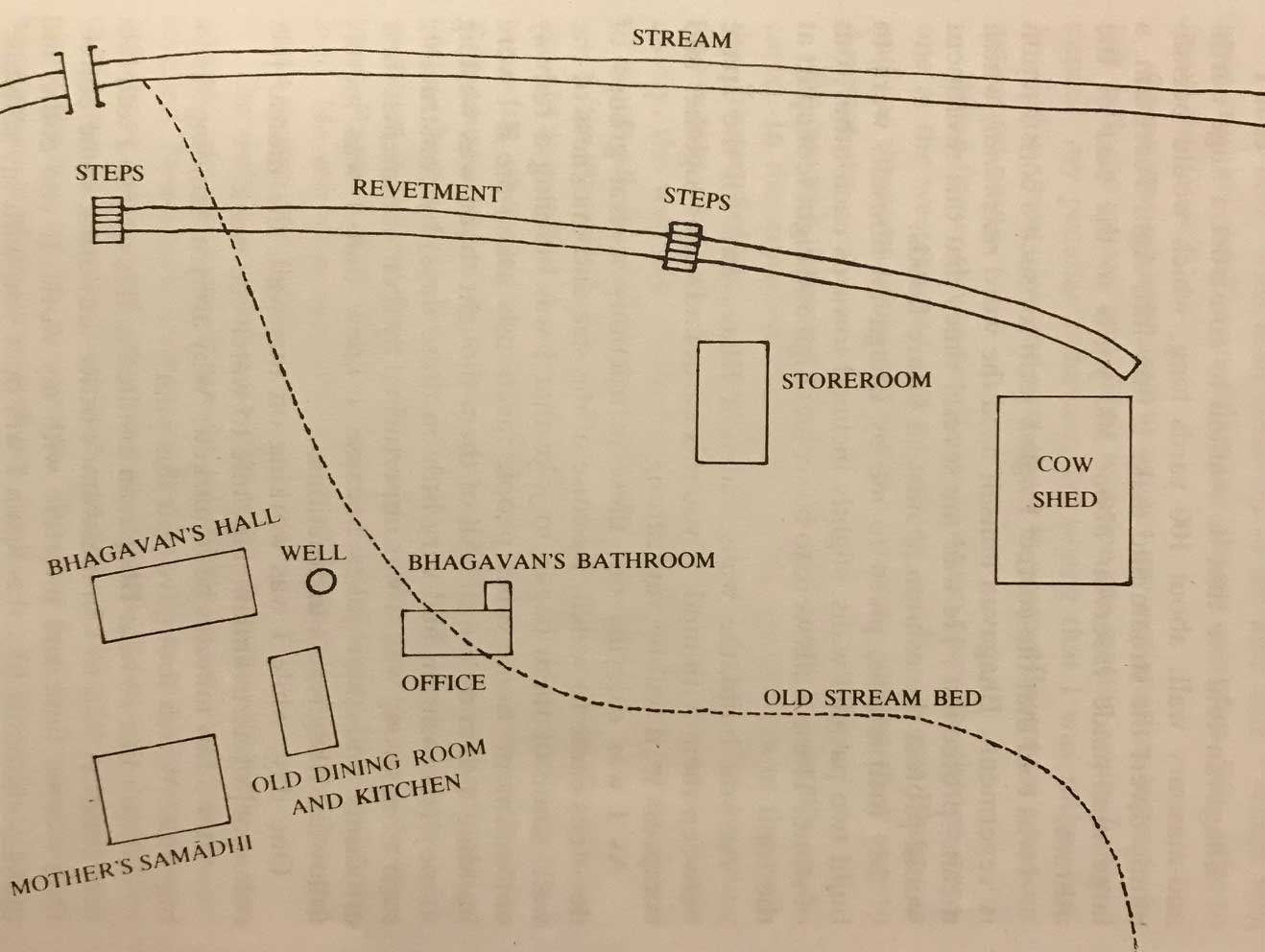
When Bhagavan gave jobs to ashram workers he always expected them to be done properly. He never tolerated sloppy workmanship. He would either take the ashram worker off the job or insist that they do the work again. Sometimes, he would personally intervene and do the work himself.
A few times I had to repair the job that someone else had done. On one occasion Bhagavan made me fix the wall around the ashram well, which was built very poorly by some outside workers. After I had fixed it, he showed the workers the wall and without voicing any criticism he said, ‘Look how well Annamalai Swami has repaired this wall that you built’.
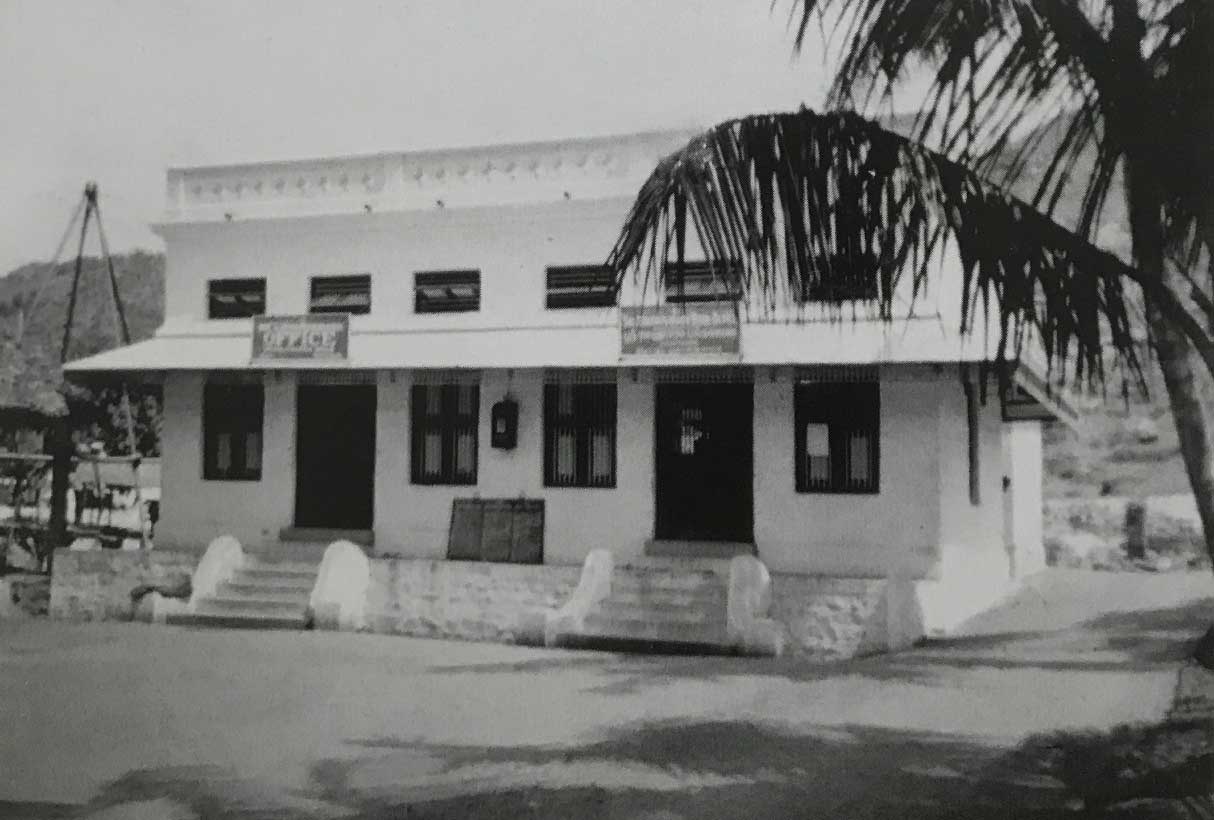
All of the above memories were narrated by Sri Annamalai Swami himself, during his Satsangs with devotees who came to visit him at the Ashram.
Related Content
5. Building works start
When the disciple Chellaperumal came to Bhagavan, Moksha was all he wanted. But Bhagavan had him start construction work and kept him at it almost exclusively for the next 9 years. It was exhausting physical…
6. Small privileges
In all the years that I worked for Bhagavan, there was hardly ever a day when I was able to sit with him in the hall during working hours. Yet I didn’t feel this loss because I was compensated by several small…
7. Under Bhagavan’s care
Bhagavan made me work very hard but at the same time he was always very kind and considerate towards me. These are just some examples where Bhagavan expressed his concern for me outwardly, through his words…
4. The Young Disciple
4. The Young Disciple
SRI ANNAMALAI SWAMI
4. The Young Disciple
THE STORY OF SRI ANNAMALAI SWAMI
My first spiritual question to Bhagavan
About ten days after my arrival I asked Bhagavan, ‘How to avoid misery? This was the first spiritual question I ever asked him.
Bhagavan replied, ‘Know and always hold on to the Self. Disregard the body and the mind. To identify with them is misery. Dive deep into the Heart, the source of being and peace, and establish yourself there.’
I then asked him how I could attain Self-Realisation and he gave me a similar answer:
‘If you give up identifying with the body and meditate on the Self, which you already are, you can attain Self-realisation.

him Annamalai Swami)
As a newcomer I was still too afraid of him to follow this up by asking him how he knew, or how long he had been waiting. However, I was delighted to hear him speak like this because it seemed to indicate that it was my destiny to stay with him. A few days later I asked another question: ‘Scientists have invented and produced aircraft which can travel at great speeds in the sky. Why do you not make and give us a spiritual aircraft in which we can quickly and easily cross over the sea of samsāra?’
‘The path of self-enquiry,’ replied Bhagavan, ‘is the aircraft you need. It is direct, fast and easy to use. You are already travelling very quickly towards realisation. It is only because of your mind that it seems that there is no movement. In the old days, when people first rode on trains, some of them believed that the
trees and the countryside were moving and that the train was standing still. It is the same with you now. Your mind is making you believe that you are not moving towards Self-Realisation.
In the years that followed I had many other spiritual talks with Bhagavan but his basic message never changed. It was always:
‘Do self-enquiry, stop identifying with the body and try to be aware of the Self which is your real nature’.
Prior to these early conversations I had been spending several hours each day performing elaborate pūjās and anushtānas. When I asked Bhagavan if I should continue with them he replied,
“You need not do any of these pūjās any more. If you practise self-enquiry, that alone will be enough.

Bhagavan gives me the name Annamalai Swami
Soon after I came I was given a new name by Bhagavan. My original name had been Chellaperumal. One day Bhagavan casually mentioned that I reminded him of a man called Annamalai Swami who had been his attendant at Skandashram. He started to use this name as a nickname for me. When devotees heard this they all followed suit and within a few days my new name was firmly established.
A divine message came from Bhagavan
I was very happy to have found a Guru like Bhagavan. However, initially I was neither impressed by the Ashram nor by the devotees who gathered around him. This disturbed me, and worried me that I might lose the devotion that I had, if I stayed near them. Coming to the conclusion that I need to separate myself from them, I decided that I would keep Bhagavan as my Guru but live somewhere else. Thus without telling anyone, not even Bhagavan, I left the Ashram just 3 weeks after having arrived. I walked to a town 20 miles away and suffered the most difficult circumstances, without food or a place to stay. I begged at about 500 houses but no one gave me any food. Finally I was forced to come back to the Ashram and I had accepted this as my prarabdha. As I turned around towards Tiruvannamalai all my fortunes changed for the better. Even the ticket collector on the train ignored me alone (I did not have money for the ticket).
On reaching the ashram I went straight to Bhagavan, prostrated before him and told him everything that happened. Bhagavan then confirmed that it was my destiny to stay at Ramanasramam.
The verse says: The supreme state which is praised and which is attained here in this life by clear self-enquiry, which rises in the Heart when association with a Sādhu is gained, is impossible to attain by listening to preachers, by studying and learning the meaning of the scriptures, by virtuous deeds, or by any other means.
At the end of fifteen minutes I did namaskaram to Bhagavan and said “I will do whatever work you order me to do, but please also give me Moksha (liberation). I don’t want to become a slave to Māyā (illusion)”
Bhagavan made no reply, but I found that merely asking the question had made my mind peaceful. Bhagavan asked me to go and eat some food. I replied that I was not hungry because I had just eaten. I added “I don’t want food. All I want is Moksha, freedom from sorrow.
This time Bhagavan looked at me and nodded and said ‘Yes, yes’.
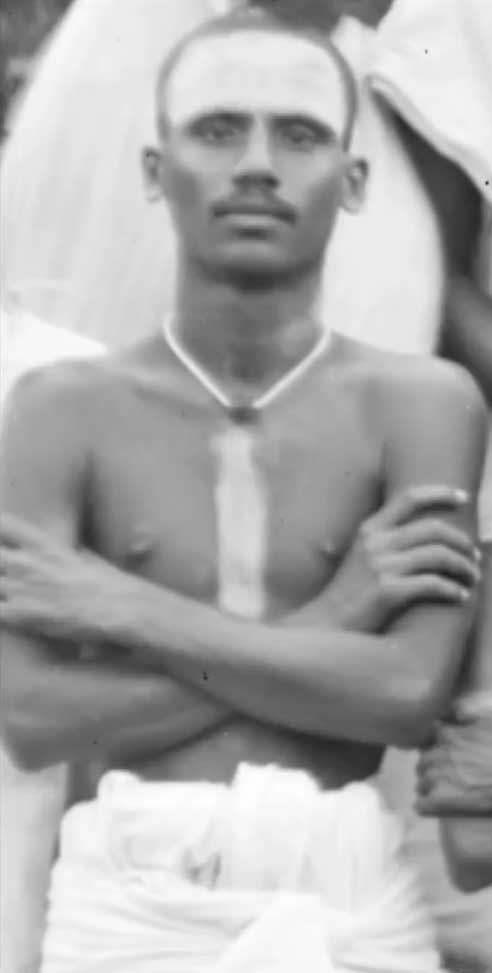
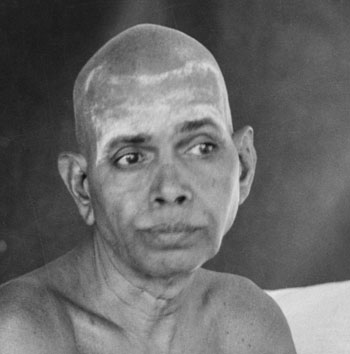
All of the above memories were narrated by Sri Annamalai Swami himself, during his Satsangs with devotees who came to visit him at the Ashram.
Related Content
4. The Young Disciple
About ten days after my arrival I asked Bhagavan, 'How to avoid misery? This was the first spiritual question I ever asked him. Bhagavan replied, 'Know and always hold on to the Self. Disregard the body and…
5. Building works start
When the disciple Chellaperumal came to Bhagavan, Moksha was all he wanted. But Bhagavan had him start construction work and kept him at it almost exclusively for the next 9 years. It was exhausting physical…
6. Small privileges
In all the years that I worked for Bhagavan, there was hardly ever a day when I was able to sit with him in the hall during working hours. Yet I didn’t feel this loss because I was compensated by several small…
3. Coming to Bhagavan
3. Coming to Bhagavan
SRI ANNAMALAI SWAMI
3. Coming to Bhagavan
THE STORY OF SRI ANNAMALAI SWAMI
How the youth, Chellaperumal came to Bhagavan Ramana Maharshi.
Sri Annamalai Swami recollects the circumstances that led him to Bhagavan in the year 1928, when he was 22 years old. One can’t help but wonder at the supreme power of the divine hand at play.
Sometime in 1928, when I was twenty-one years old, a wandering sādhu passed through the village. He gave me a copy of Upadėsa Undiyār which contained a photo of Sri Ramana Maharshi. As soon as I saw that photo I had the feeling that this was my Guru. Simultaneously, an intense desire arose within me to go and see him.
That night I had a dream in which I saw Ramana Maharshi walking from the lower slopes of Arunachala to the old hall. At the threshold of the old hall he washed his feet with the water that was in his water pot. I came near him, prostrated at his feet, and then went into a kind of swoon because the shock of having darshan was too much for me. As I was lying on the ground with my mouth open, Bhagavan poured water from his pot into my mouth. I remember repeating the words ‘Mahadeva, Mahadeva’ (one of the names of Siva] as the water was being poured in. Bhagavan gazed at me for a few seconds before turning to go into the hall.
When I woke the next morning I decided that I should go immediately to Bhagavan and have his darshan.
On the way to meeting Bhagavan
After informing my parents that I was planning to leave the village, I went to the Bhajan Math to say goodbye to all the people there. Several of them began to cry because they had a strong suspicion that I would not return. I asked for their permission to leave, received it, and left the village that evening. I never went back. Some of the devotees, realising that I had no funds to support myself, collected some money and gave it to me as a parting present. I had decided to walk twenty-five miles to a nearby town called Ullunderpettai because I had heard that there was a train from there to Tiruvannamalai, the town where Ramana Maharshi lived.
I had originally intended to go straight there, but when one of the passengers informed me that the Sankaracharya of Kanchipuram was camping near one of the towns on the train route, I decided to see him first and get his blessings. I got down at Tirukoilur (fifteen miles south of Tiruvannamalai] and made my way to Pudupalayam, the village where the Sankaracharya was staying. I found the Sankaracharya, did namaskāram to him and told him that I had had his darshan in Vepur.
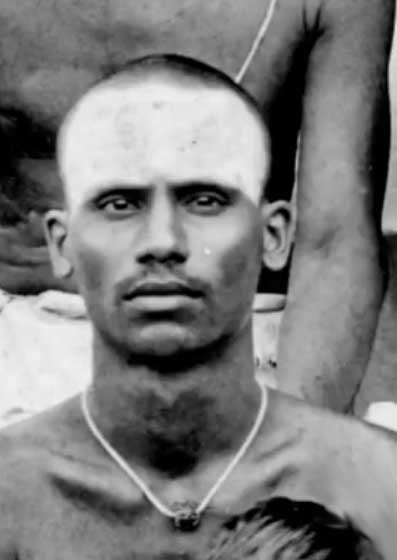
‘I am on my way to see Ramana Bhagavan,’ I told him. ‘Please give me your blessings’.
The Sankaracharya seemed very pleased to hear the news. Very good!’ he exclaimed.
He turned to one of his attendants and asked him to give me some food. After I had finished eating, the Sankaracharya put some vibhūti on a plate and put his palm on it to bless it. He then put half a coconut and eleven silver coins on the plate and presented it to me. I took the money, the vibhūti and the coconut before returning the plate to him. Feeling that I had now got the blessings which I had sought, I prostrated to him, left the village, and continued my journey to Tiruvannamalai.
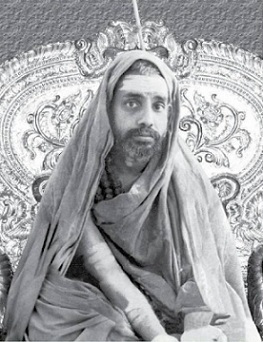
Getting the blessings of Sri Seshadri Swami
On my arrival in Tiruvannamalai I was told that there was another great saint there called Seshadri Swami and that it would be very auspicious if I could have his darshan before proceeding to Sri Ramanasramam, the ashram where Ramana Maharshi lived. Seshadri Swami did not stay in any particular place but I soon managed to locate him in a mandapam which was near the main temple. He was easy to find because there was a crowd of about 40-50 people outside the mandapam waiting for him to come out.
He had apparently locked himself in. When I peeped in through one of the windows I saw him continuously circling one of the pillars inside. After doing this for about ten minutes, he came outside, sat on a rock, and crossed his legs. I had brought a laddu (a large spherical sweet) which I wanted to give him but I wasn’t sure what to do with it. Seshadri Swami must have sensed my indecision because he looked at me and indicated by a gesture that I should place the laddu on the ground in front of him.

Seshadri Swami had obviously been chewing betel nut for some time. A mixture of the red juice and his saliva was dribbling out of his mouth, soaking his beard, and dripping onto the ground. Seshadri Swami picked up my laddu, smeared it with the saliva and-betel juice that was staining his beard, and threw it onto the nearby road. As it broke on the ground, the crowd raced towards it and collected the pieces as prasād. I also managed to collect and eat a piece.
A group of local people appeared to be angry with Seshadri Swami. He silenced them by tossing some stones in their direction. These stones, instead of following a normal trajectory, bobbed and danced around their heads like butterflies. The men he had thrown the stones at got afraid and ran away. They clearly didn’t want to tangle with a man who possessed supernatural powers of this kind.
When I went back and stood before Seshadri Swami again, he started to shout at me in a very abusive way. This fool came to Tiruvannamalai! Stupid man! What did he come here for?’ He carried on in this vein for some time, implying that I was wasting my time coming to Tiruvannamalai. I thought that I must have committed a great sin to have a great saint insult me like this. I started to cry because I thought that I had been cursed.
Eventually a man called Manikka Swami, who was Seshadri Swami’s attendant, came up to me and consoled me by saying, ‘Your trip to Tiruvannamalai will be successful. You will get whatever you have come for. This is Seshadri Swami’s way of blessing you. When he abuses people like this he is really blessing them.’ Manikka Swami then took me to a hotel which was owned by a devotee of Seshadri Swami. He told the owner, ‘Seshadri Swami has just showered his blessings on this man. Please give him a free meal.’ I was not feeling particularly hungry, but when the owner insisted I sat down and ate some of his food. When I had eaten enough to satisfy him I got up and walked the remaining distance to Sri Ramanasramam.
A dream comes true.
I arrived there at about 1 p.m. As I approached the hall, part of the dream I had had in my village repeated itself in real life. I saw Bhagavan walk down the hill, cross the ashram and pause outside the hall while he washed his feet with water from his kamandalu (water pot). Then he went inside. I sprinkled some of this water on my head, drank a little, and then went inside to meet him.
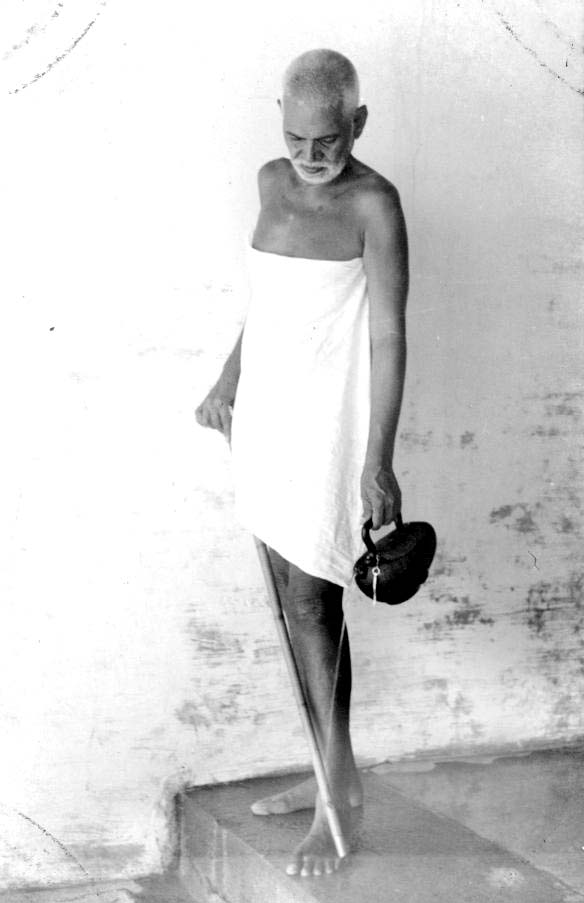
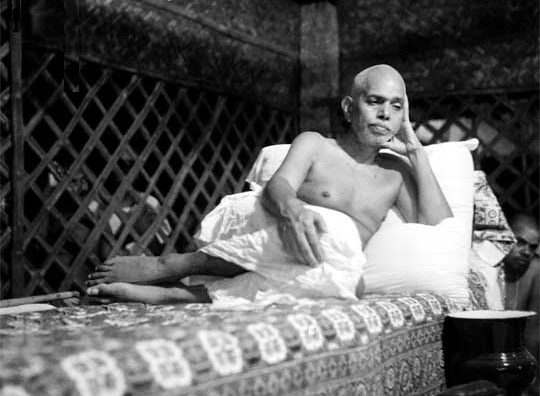
Bhagavan was sitting on his couch while an attendant called Madhava Swami dried his feet with a cloth. Madhava Swami went out a few minutes later, leaving Bhagavan and me alone in the hall. I had bought a small packet of dried grapes and some sugar candy to give him. I placed them on a small table that was next to Bhagavan’s sofa and prostrated to him.’
When I stood up I saw that Bhagavan was eating a little of my offering. As I watched him swallow, the thought came to me that my offering was going directly into Siva’s stomach. I sat down and Bhagavan gazed at me in silence for about 10–15 minutes. There was a great feeling of physical relief and relaxation while Bhagavan was looking at me. I felt a wonderful coolness pervade my body. It was like immersing myself in a cool pool after being outside in the hot sun.
I asked for permission to stay and this was readily granted. A small hut was given to me and for the first week I stayed there as a guest of the ashram. During those first few days I either gathered flowers for the ashram’s pājās or just sat with Bhagavan in his hall. As the days passed I became more and more convinced that Bhagavan was my Guru. Feeling a strong urge to settle down in the ashram, I asked Chinnaswami, Bhagavan’s younger brother, if I could work in the ashram. Chinnaswami granted my request and said that I could serve as Bhagavan’s attendant. At that time Madhava Swami was doing the job by himself.
Chinnaswami told me, ‘Madhava Swami is the only attendant at the moment. Whenever he goes out of the hall or goes for a rest you should stay with Bhagavan and attend to all his needs.’
All of the above memories were narrated by Sri Annamalai Swami himself, during his Satsangs with devotees who came to visit him at the Ashram.
Related Content
3. Coming to Bhagavan
Sri Annamalai Swami recollects the circumstances that led him to Bhagavan in the year 1928, when he was 22 years old. A prophetic dream came true for him. One can't help but wonder at the supreme…
4. The Young Disciple
About ten days after my arrival I asked Bhagavan, 'How to avoid misery? This was the first spiritual question I ever asked him. Bhagavan replied, 'Know and always hold on to the Self. Disregard the…
5. Building works start
When the disciple Chellaperumal came to Bhagavan, Moksha was all he wanted. But Bhagavan had him start construction work and kept him at it almost exclusively for the next 9 years. It was exhausting…
2. Youth
2. Youth
SRI ANNAMALAI SWAMI
2. Youth
THE STORY OF SRI ANNAMALAI SWAMI
A youth with a strong urge for spiritual advancement
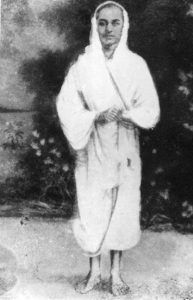
In my youth I was very keen on maintaining an outward show of piety to demonstrate my commitment to the religious life. I wore a white dhoti (a cloth which is worn like a skirt), covered my head in imitation of Ramalinga Swami (a 19th century Tamil saint), and put a lot of vibhūti [sacred ash] on my forehead and body. I was quite attached to Ramalinga Swami at the time: I had seen a photo of him in the village which impressed me enough to visit Vadalur, the place of his samādhi . While I was in my early teens I acquired a copy of the tenth part of a work called Jiva Brahma Aikya Vēdānta Rahasya. I learned prānāyāma techniques (yogic breathing exercises) from this book and began to practise them in the temple in the forest.
Reading this book brought about in me a desire to make a more thorough study of the scriptures. Ordinarily, this would have been very difficult for a boy in my position, but an unusual combination of circumstances soon permitted me to fulfill my desire.
I found a place to practice my spiritual interests
The karnam (government accountant) in our village owned many religious books which he had inherited from his father. Being a busy man, he had no time to read them. His wife, a very devoted woman permitted me to come to the house and read the books. Every day she would prepare food, offer it to the Ganapati statue in her house, and then give the food to me. She herself would only eat after I had consumed this offering. I eventually moved into the karnam’s house and lived on this food offering that the karnam’s wife was preparing. Since my parents disapproved of my religious zeal, I completely stopped going to my family home. During this estrangement, which lasted three years, I never once visited them.
When my father got wind of this he was surprised because he had assumed that I was still virtually illiterate.
Deciding to investigate the matter himself, he came and secretly listened to one of our evening sessions. Afterwards he apparently remarked, ‘I cannot make him obey me any more. So, I will just give him to God.’
The karnam’s wife attended most of our meetings. She developed a strong interest in the works we were reciting, became a vegetarian, and lost all interest in worldly matters. Unfortunately she even lost interest in her husband. One evening he took me aside and said rather angrily, ‘Because of your association with my wife she has become like a Swami. She has no desires at all any more. I don’t want to keep you in my house any more. You must find somewhere else to stay.”
The other devotees overheard what the karnam had said. One of them told me. ‘We don’t need to do our reading here. We can easily find somewhere else to go.’
At first we thought that we should build a simple thatched hut for our meetings but by the end of the evening we had decided to build a proper math (ashram). Each of us pledged funds to the enterprise and within a short time the Sivaram Bhajan Math came into existence. I moved into the math as soon as it was finished and continued my sādhanā (spiritual practice) there by conducting bhajans (devotional songs] and by reading aloud the teachings of various saints.
When the math was finished I built a tannīr pandal (a place which serves free food and drinks to travelers and poor people on the main road that went through our village). With the help of some devotees I collected enough funds to serve kanji (rice gruel) every day to sādhus and travellers who passed through the village.
My parents tried to force my marriage
Soon after I had established myself in the math my parents decided to make one last attempt to wean me away from the spiritual life. As I was about seventeen years of age at the time they thought, “If we don’t take action soon he will almost certainly become a sannyāsin. If we can find some girl to marry him, he may become a normal householder and give up all these spiritual activities. Perhaps he will then become like all the rest of us.’
Without even bothering to consult me about the matter, they found a girl, made all the arrangements with her family, and then went out and bought all the provisions that are necessary to celebrate a wedding. I heard about all these activities through one of the women devotees who used to come to the Bhajan Math.
Many of these people (my parents were not among them) had a meeting and decided to cure my madness by violent means.
They collected me from the Bhajan Math, took me to a nearby lake, made a large cut in the top of my head and started rubbing lemon juice in it. This, apparently, was a cure for madness. Then they decided to pour buckets of cold water over my head. I think that they must have poured about fifty buckets over me.
While they were bathing me in this way I kept quiet and practised prānāyāma to keep my mind off the cold. I knew that it was useless to resist. When the villagers saw that I wasn’t reacting in any way to the treatment they became even more convinced that I was mad. Finally, when the treatment was over, they took me to one of the houses in the village. There, they made a sambar (spicy dish eaten with rice) out of bitter-gourd and made me eat it because they were under the impression that bitter gourd was another cure for insanity. About 100 people had gathered to watch all this.
While I was eating one, of them said to me, You are a good boy, born in a good family, but you have gone mad’. By this time my patience was finally exhausted. I have not gone mad,’ I replied in a rather irritable way. ‘Please leave me alone. Tell these people to stop crowding around me or give me a separate room where I can be alone.’ I was not expecting any kind of response, except possibly a further course of treatment, but much to my surprise they granted my request and permitted me to retire to one of the rooms in the house. Before they had a chance to change their minds I bolted the door and lay down on the floor to rest and recover from my ordeal.
A little later I got up and tried to meditate. While I was sitting there I overheard the head man of the village discussing my case on the other side of the door. ‘If you will permit me, I will get a promise from that boy that he will get married and lead a normal life. Because of these treatments his madness may now have gone.’ He knocked on the door and I let him in. Standing in front of me he said, very firmly, ‘Please give me a promise, because you are not mad any more, that you will get married like all the rest of us and lead a normal householder’s life’.
I replied, ‘I will promise you instead that I will become a sannyāsin. I clapped my hands while I was making the promise to show him how serious I was and that I had sealed the promise. The man left immediately. I then heard him exclaiming outside, ‘Ayo! Ayo! I asked him to promise one thing and he promised the opposite!’
My family paid no attention to my promise. I heard from a woman who visited me that my father was still secretly making plans to go ahead with the wedding.
I therefore decided that it was time to make a few secret plans of my own. First, I wrote a note to the girl who was supposed to be marrying me. My intention is to become a sannyāsin. I don’t intend to get myself entangled in a householder’s life. So don’t think that you are going to marry me. This will only cause you trouble.’ I arranged for someone to deliver the note to her house. Then, on the same day, I escaped from the house and made my way to Chidambaram (a famous South Indian religious centre).
I intended to take sannyāsa there, but I didn’t do it in any formal way. Not wanting to go to anyone for initiation, I did everything myself. I took a bath in the river, had my head shaved, put a necklace made out of rudraksha seeds around my neck, and dressed myself in a short dhôti and towel. I went back to my village in this new garb and announced to everyone that I was now a sannyāsin. My new appearance finally convinced my family that I was serious and that I had no intention of marrying. Very reluctantly they abandoned all their marriage plans because they knew that people who become sannyāsins remain celibate for the rest of their lives.
My parents finally gave their approval
I resumed my old routine and started to make plans for the kumbhābhishēkam (consecration ceremony] of the math. I invited several groups of bhajan singers from the surrounding villages and I even persuaded my parents to donate all the provisions that they had bought for my wedding. The food they donated enabled me to feed about 400 people. The other devotees who had contributed to the construction of the Bhajan Math supplied buttermilk, ragi (a kind of millet) and rice gruel to all the people who came. On the day of the kumbhābhishēkam the invited bhajan singers paraded through our village, performing in every street.

him Annamalai Swami)
Meeting the Sankaracharya (Mahaperiyavā)
A few weeks later I heard that the Sankaracharya of Kanchipuram was planning to pass through the village on one of his tours. He was affectionately called Mahaperiyavā. When I heard this news I decided that I would try to make the Sankaracharya stop briefly in the village so that I could have his darshan (see his holiness). Knowing that there would be many people and animals in his procession, I thought that the best plan would be to supply them all with food and water. If I did this they would all have to halt for a short time while they ate my offerings. On the appointed day I prepared a large amount of buttermilk and kanji for the brahmins who would be accompanying him. I also stocked up on green leaves so that I could feed the horses and the elephants.
As the procession approached the village I raced up and down the line handing out green leaves. The Sankaracharya was being carried in a palanquin, but I couldn’t see him because the curtains were drawn. When I offered kanji to the people who were carrying him, they decided to stop and eat my offering. This caused the Sankaracharya to open the curtains to see what the delay was. I immediately prostrated to him. He looked at me in silence for a few seconds and then said, ‘After one mile I shall rest for a while. You can come and see me in that place.”

There was a small town called Vepur about a mile from the village. I discovered from one of his entourage that a bhikshā (food offering) had been arranged there and that the Sankaracharya would be staying in the Vepur Traveller’s Bungalow. There was a sub-inspector of police in our village who was quite a good devotee. When we heard that the Sankaracharya was staying nearby we both walked to Vepur to see him. A large crowd was milling around him when we arrived but I still managed to get near enough to touch his feet. His brahmin attendants complained, saying, ‘Non-brahmins should not touch him, but the Sankaracharya silenced them by saying, ‘He is a brahmachāri and a sādhu so it doesn’t matter’.
All of the above memories were narrated by Sri Annamalai Swami himself, during his Satsangs with devotees who came to visit him at the Ashram.
Related Content
2. Youth
In my youth I was very keen on maintaining an outward show of piety to demonstrate my commitment to the religious life. I wore a white dhoti, covered my head in imitation of Ramalinga Swami and put a lot of…
3. Coming to Bhagavan
Sri Annamalai Swami recollects the circumstances that led him to Bhagavan in the year 1928, when he was 22 years old. A prophetic dream came true for him. One can't help but wonder at the supreme power of the…
4. The Young Disciple
About ten days after my arrival I asked Bhagavan, 'How to avoid misery? This was the first spiritual question I ever asked him. Bhagavan replied, 'Know and always hold on to the Self. Disregard the body and…
1. Childhood
1. Childhood
SRI ANNAMALAI SWAMI
1. Childhood
THE STORY OF SRI ANNAMALAI SWAMI
Sri Annamalai Swami talks about his childhood
This is the story of Sri Annamalai Swami, narrated by Swami himself. A story of how a child with almost no education but showed very early signs of spiritual maturity, came to meet his Guru Bhagavan Ramana Maharashi and by His grace, attained Self-Realisation.
Sri Annamalai Swami used to recollect and share these incidents with devotees who came for his Satsang at the Ashram. As he narrated them in Tamil, his disciple Sundaram Swami would translate it into English for devotees who did not know Tamil. Some of these translations were edited by David Godman and published in the book ‘Living By The Words Of Bhagavan’.
Birth
I was born in 1906 in Tondankurichi, a small village of about 200 houses. My father was an important person in the village. In addition to being a farmer, an astrologer. a painter and a builder, he also knew how to construct statues and make gopurams (temple towers). Soon after I was born my father and another astrologer met to discuss my horoscope. Both of them came to the conclusion that I was likely to become a sannyasin (Hindu monk who has renounced all ties with his family and the world). My father, who was not pleased by this prediction, decided to avert the possibility by denying me a proper education. He had the notion that if I did not learn to read and write, I would not be able to read the scriptures and never develop an interest in God. As a result, when I had just about mastered the alphabet I was taken out of the local village school and set to work assisting my father in his fields.

My father, suspecting that I might try to go back to school without his knowledge or consent, tried to ensure that I remained virtually illiterate by telling my mother, ‘If he goes to school again, don’t give him any food’.
A short time after I was taken out of school, when I was passing through a nearby village called Vepur, I heard a visiting scholar give a lecture. He told the villagers, ‘It is good to become educated. Even if you have to support yourself by begging while you are studying, you should study as much as you can. Only through education can we know about the mysteries of life.’ On returning home I went to my father and complained, ‘l listened to a scholar in Vepur today, who talked about the value of education. You are not permitting me to go to school.’
My father dismissed my challenge by saying ‘Oh, we are just farmers. We only need to be able to write well enough to sign our names.’
I had to self-study
I was not satisfied with my father’s attitude or answer and decided to try and study by myself. decided to try to study by myself. I got hold of two books, one containing the stories of King Vikramaditya and the other the verses of Pattinatar (a 9th century Tamil poet and saint), and tried to teach myself to read.
The one who renounces the home is crores of times greater than the one who, living as a householder, does many punyas and dharmas (meritorious acts). The one who renounces the mind is crores of times greater than the one who renounces the home. The one who has transcended the mind and all duality, how can I express the greatness of that person?
Although I had never come across statements like this before, I had always had a natural inclination towards the spiritual life. Nobody had ever talked to me about religious matters, but somehow I had always known that there was a higher power called God, and that the purpose of life was to attain this God.
Intuition about God from young
Without being told, I instinctively felt that everything I saw was somehow illusory and not real. These thoughts, along with the idea that I should not become attached to anything in this world, were part of my consciousness even in my earliest boyhood.
I remember one incident which happened when I was only six years old. I was walking with my mother near the village when a sādhu in orange robes walked by. I asked my mother, ‘When will I become a sannyāsin like him?’
Without waiting for an answer, I started walking along the road behind the sādhu.
As I was walking I heard my mother expressing her disgust to the local village women: ‘Look what a useless boy he is! Even at this young age he is trying to be a sādhu.‘
My father, unfortunately, did not share my spiritual predilections. He did do an elaborate pūjā (ceremonial worship of a Hindu deity) every day for about half an hour, but his motives were entirely materialistic.
Once, while I was still a young boy, I asked him, “Why are you doing this pūjā every day?’
He replied, ‘I want to get wealth, I want to get land, I want to get gold and a lot of money’.
I told him, ‘These things are all perishable. Why are you praying for these perishable things?’
My father was astonished that I had an understanding of such matters at such an early age. “How do you know that these things are perishable?’ he demanded.
‘I know, that is why I am telling you,’ I replied. The knowledge was inside me but I couldn’t explain it or account for it in any rational way.
When my father discovered that I was taking an interest in spiritual matters, he tried to discourage me. He put many obstacles in my path and it was not until many years later that he finally conceded that I was destined to become a sādhu.
Good luck Mascot
While I was still quite young the villagers adopted me as a kind of good-luck mascot. Whenever anyone began to build a new house, I would be asked to put in the first frame. I was asked to pull out the first weed when the weeding started in the fields and during marriages I would be asked to touch the statue of Ganapati at the beginning of the ceremony. The most pleasant chore, though, was eating sweets. Whenever people in the village prepared sweets for a special occasion, I would be invited to come and share them. I don’t know when the villagers first came to believe that I would bring them good luck, or how they arrived at this conclusion, but the tradition persisted till I was about thirteen years of age.
My Spiritual practices began early
I became more acquainted with religious rituals on a visit to Vriddhachalam, a Saivite pilgrimage centre near my village. I observed some brahmins doing anushtānas ( a wide variety of religious practices) there and asked them to initiate me into these practices. They refused on the grounds that sudras (members of the lowest caste) were not permitted to practise these rites. Soon afterwards I saw some non-brahmin Saivites (followers of Siva) performing the same rituals. I learned these anushtānas from this group and performed them regularly when I returned to my village. My father had, despite his rather cynical attitude to religion, previously initiated me into Sürya Namaskāram, (a well-known ritual in which one repeats a number of mantras and then prostrates to the rising sun.) I added these new rituals to this one which my father had already taught me.
I adopted one other practice: each month, on ēkādasi day (the eleventh day of the lunar fortnight), I tried to meditate all night without falling asleep. I soon discovered that if I tried to meditate in a sitting position I fell asleep. I tried walking meditation, but even that didn’t work because I fell asleep while I was walking. After a little experimentation I discovered that I could fight off sleep by taking baths in the local river and by rubbing sand in thighs to induce pain. I also used to chew a piece of tobacco because I was told that chewing tobacco stimulates the rajoguna (one of the 3 gunas or qualities of creation that is responsible for action).
All of the above memories were narrated by Sri Annamalai Swami himself, during his Satsangs with devotees who came to visit him at the Ashram.
Related Content
1. Childhood
Childhood years of Chellaperumal (Sri Annamalai Swami). He was born in the year 1906, in a small village called Tondankurichi. His horoscope clearly showed that the child would grow to become a Sannyasin, a…
2. Youth
In my youth I was very keen on maintaining an outward show of piety to demonstrate my commitment to the religious life. I wore a white dhoti, covered my head in imitation of Ramalinga Swami and put a lot of…
3. Coming to Bhagavan
Sri Annamalai Swami recollects the circumstances that led him to Bhagavan in the year 1928, when he was 22 years old. A prophetic dream came true for him. One can't help but wonder at the supreme power of the…
